«Guerrilla Queens» video. Fête des Lumières 2023
Anonymous» video about our work with light.
Created for the Lyon Light Festival Forum, organised by the LUCI Association.
Created by Melisa Hernández and Luzinterruptus..
Anonymous» video about our work with light.
Created for the Lyon Light Festival Forum, organised by the LUCI Association.
Created by Melisa Hernández and Luzinterruptus..
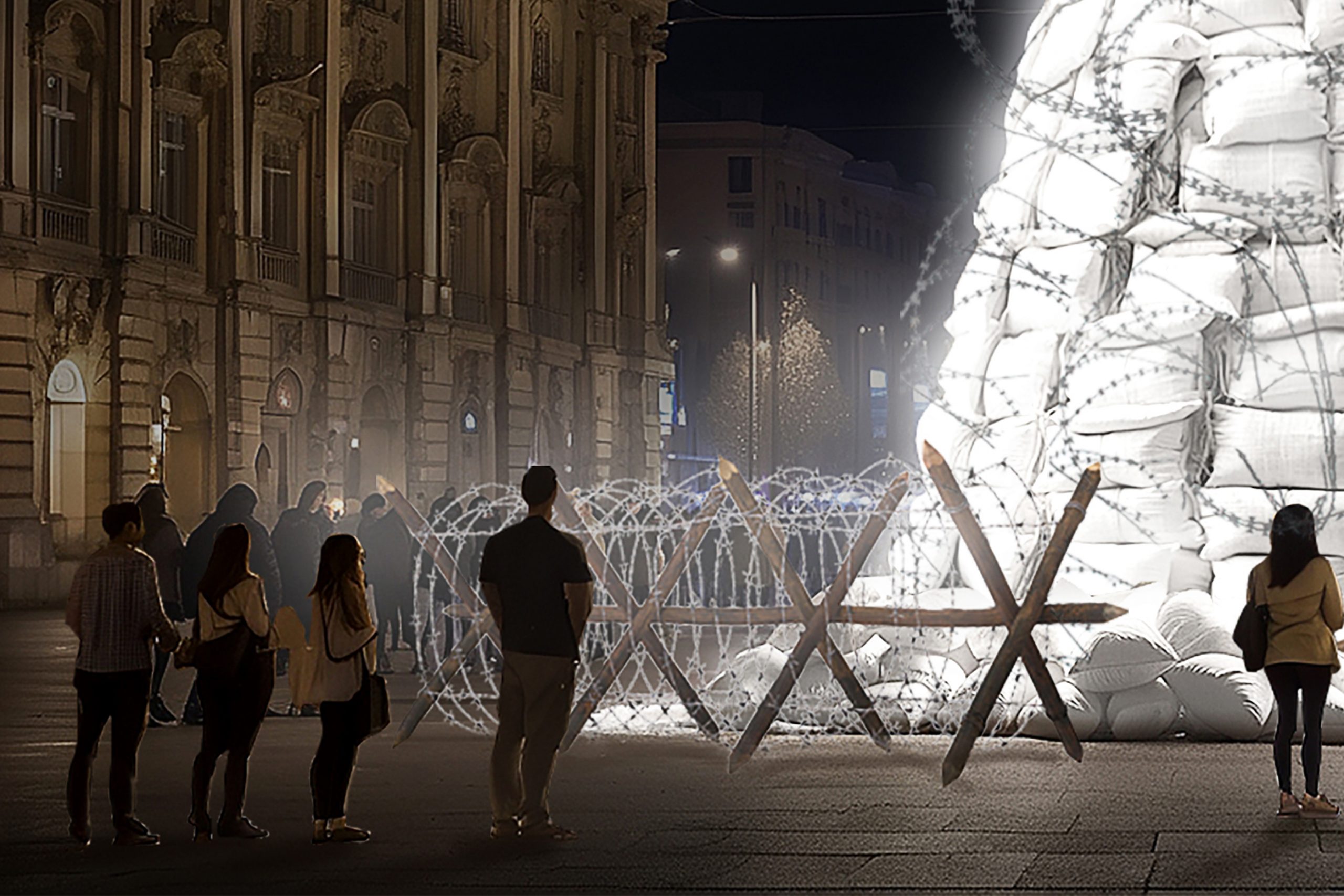 .
.
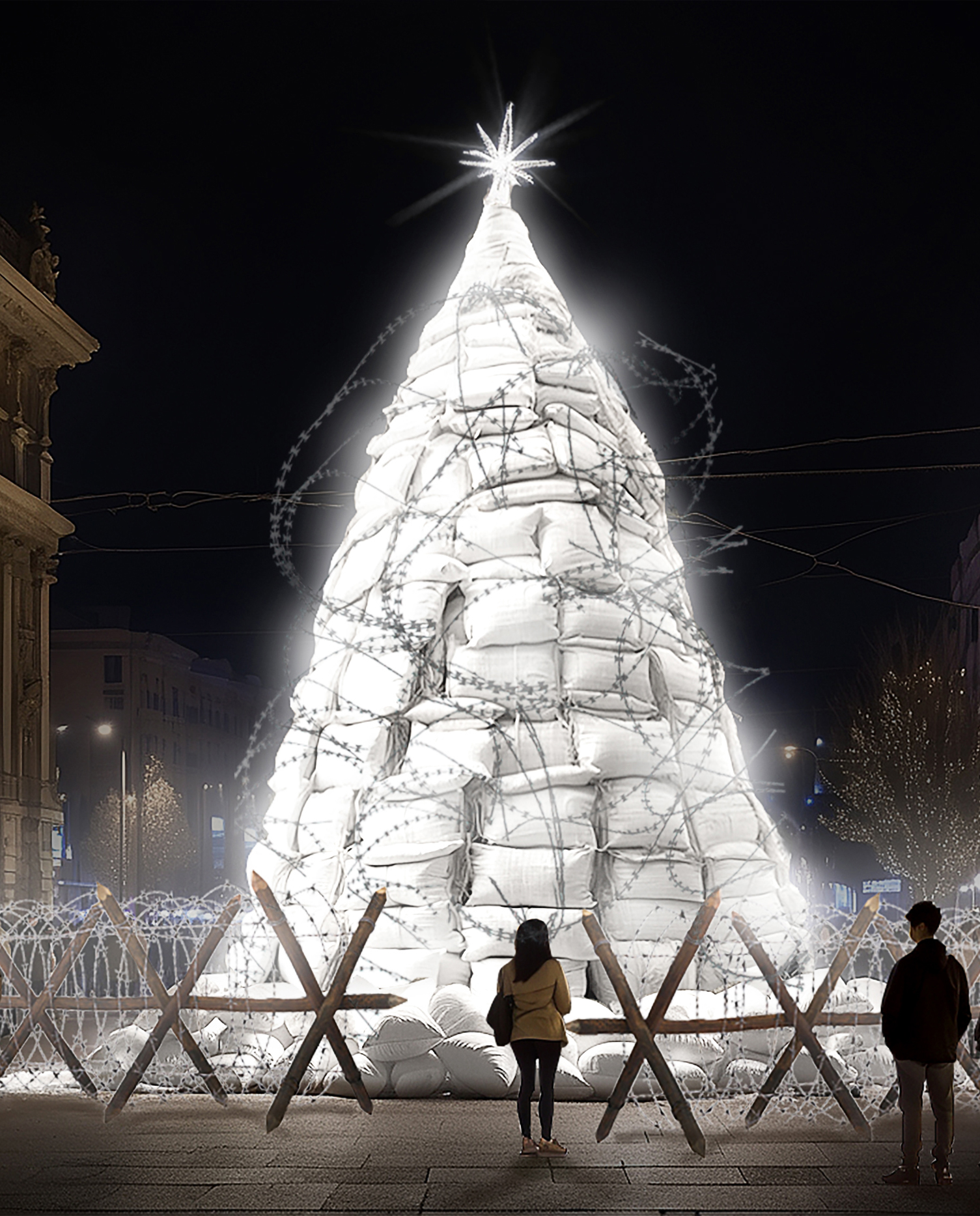
.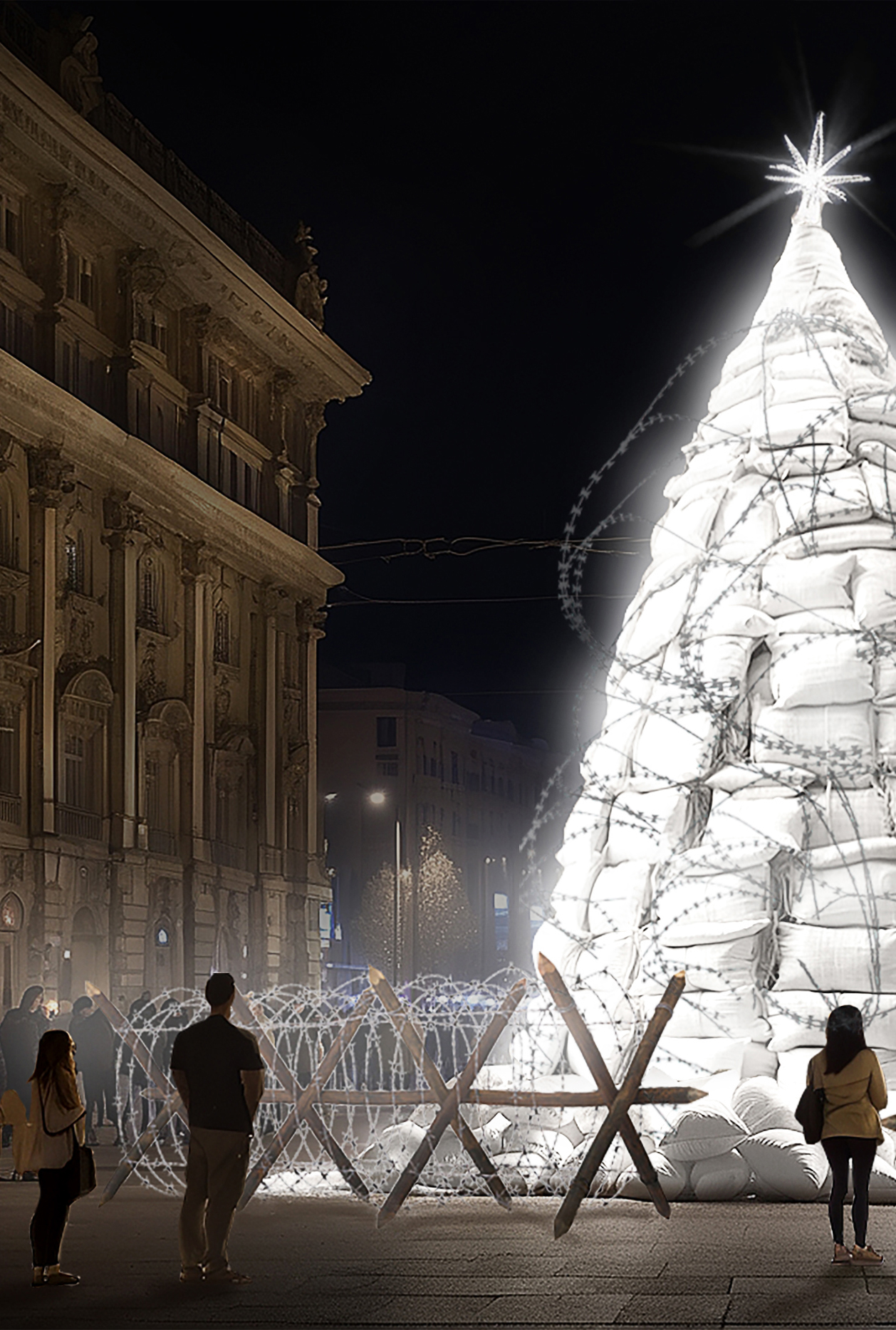 .
.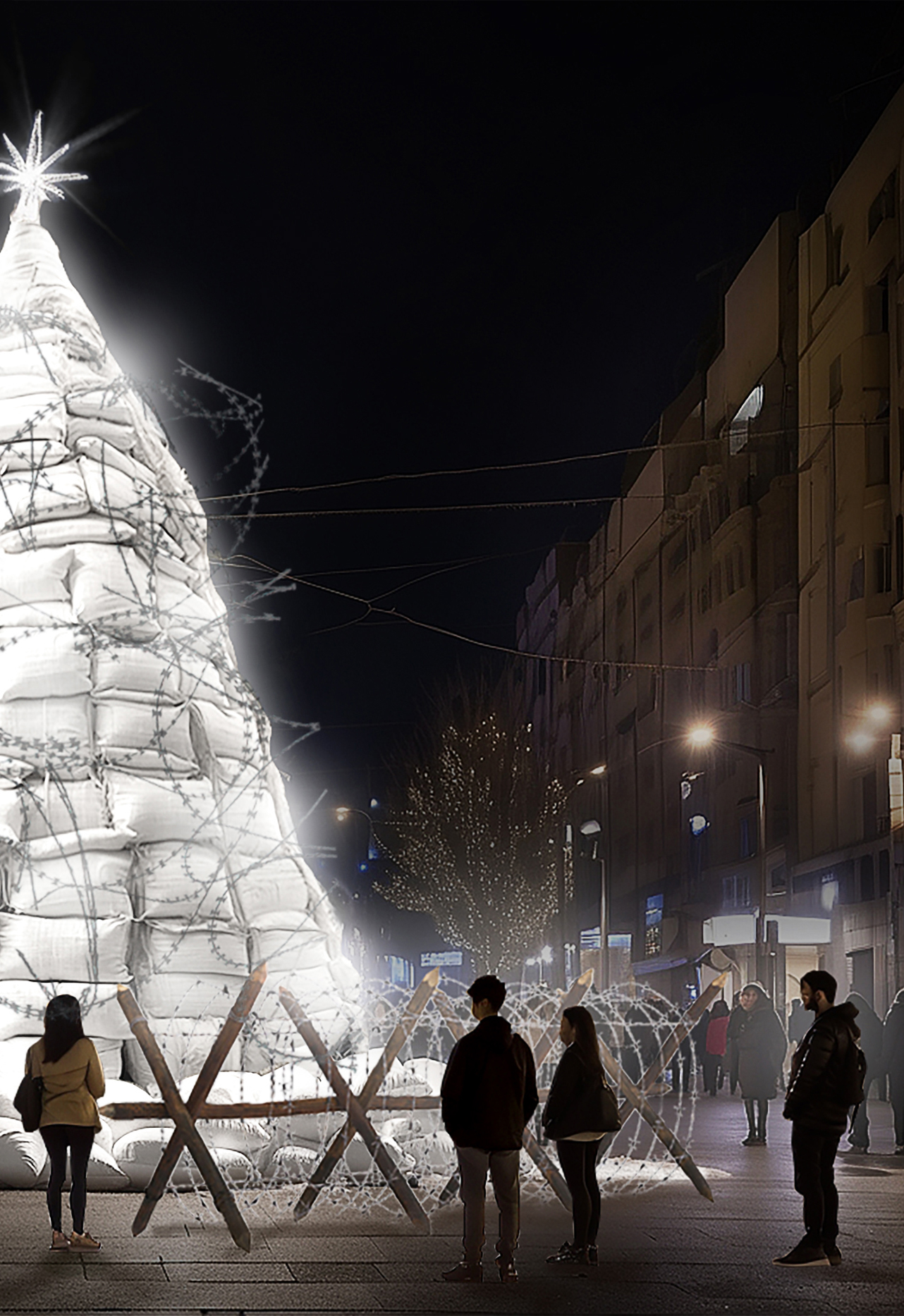
Few public celebrations should be allowed this year. If the Christmas spirit of peace and love can’t even reach Bethlehem, how can we artificially install it in our streets and squares?
So, our annual Christmas styling exercise, which consists of imagining an urban decoration in keeping with the times in which we live, comes with dim lighting and lots of barbed wire. We don’t have the creativity for more festive themes.
So nothing… another year without much to celebrate.
Hopefully the excess of light won’t prevent us from seeing the terrifying darkness that stalks us.
Thanks to @zekewenders for this creepy simulation.
——————————————–
Pocas celebraciones públicas deberían estar permitidas este año. Si el espíritu de paz y amor navideño no es capaz ni de llegar a Belén, cómo vamos a instalarlo artificialmente en nuestras calles y plazas?.
Así pues, nuestro ejercicio de estilo navideño de todos los años, que consiste en imaginar una decoración urbana acorde a los tiempos en los que nos toca vivir, viene con luz tenue y mucho alambre de espino. No nos da la creatividad para temas mas festivos.
Pues nada… otro año sin gran cosa que celebrar.
Ojalá el exceso de luz no nos impida ver la oscuridad aterradora que nos acecha.
Gracias a @zekewenders por esta escalofriante simulación.
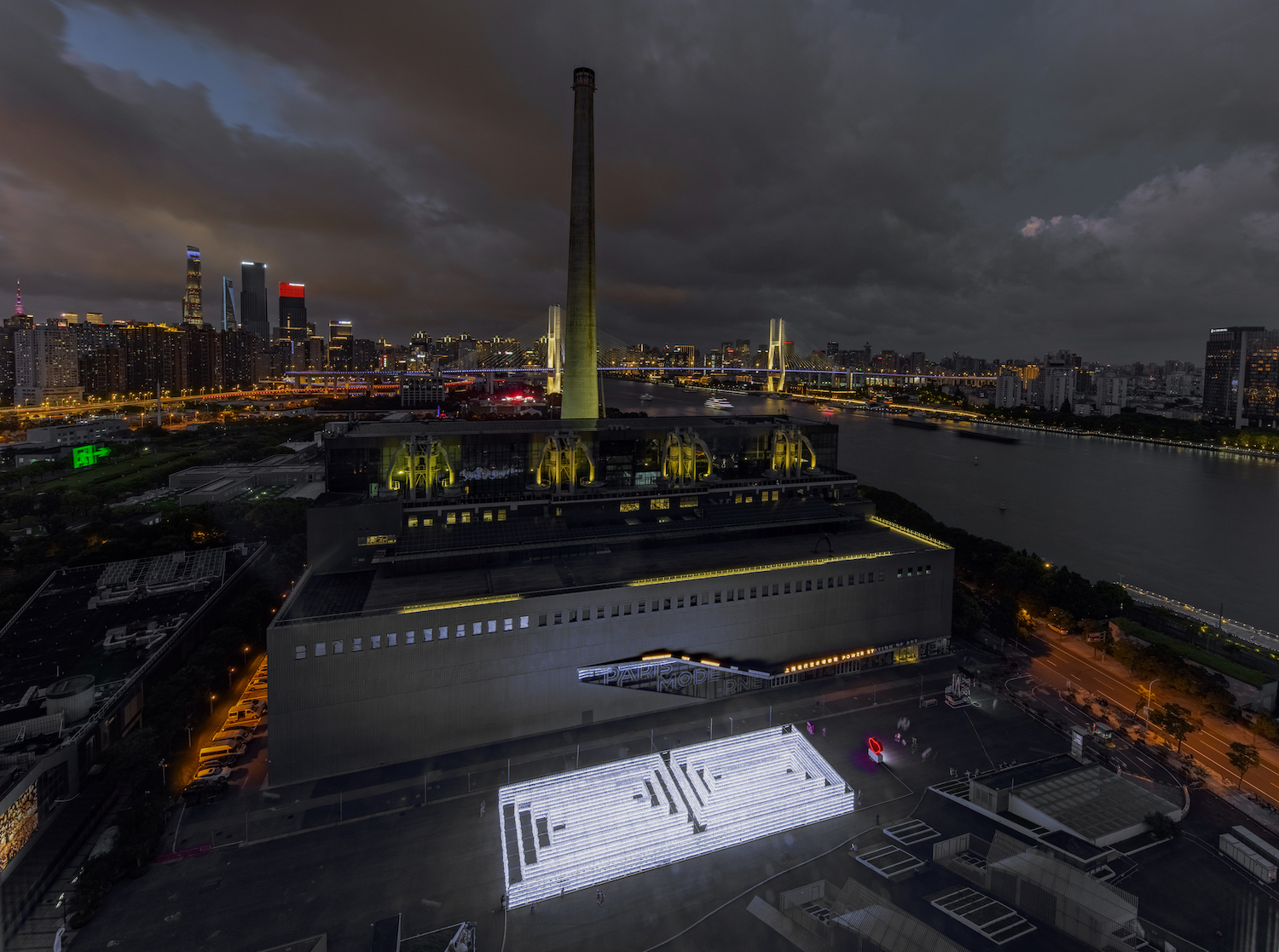
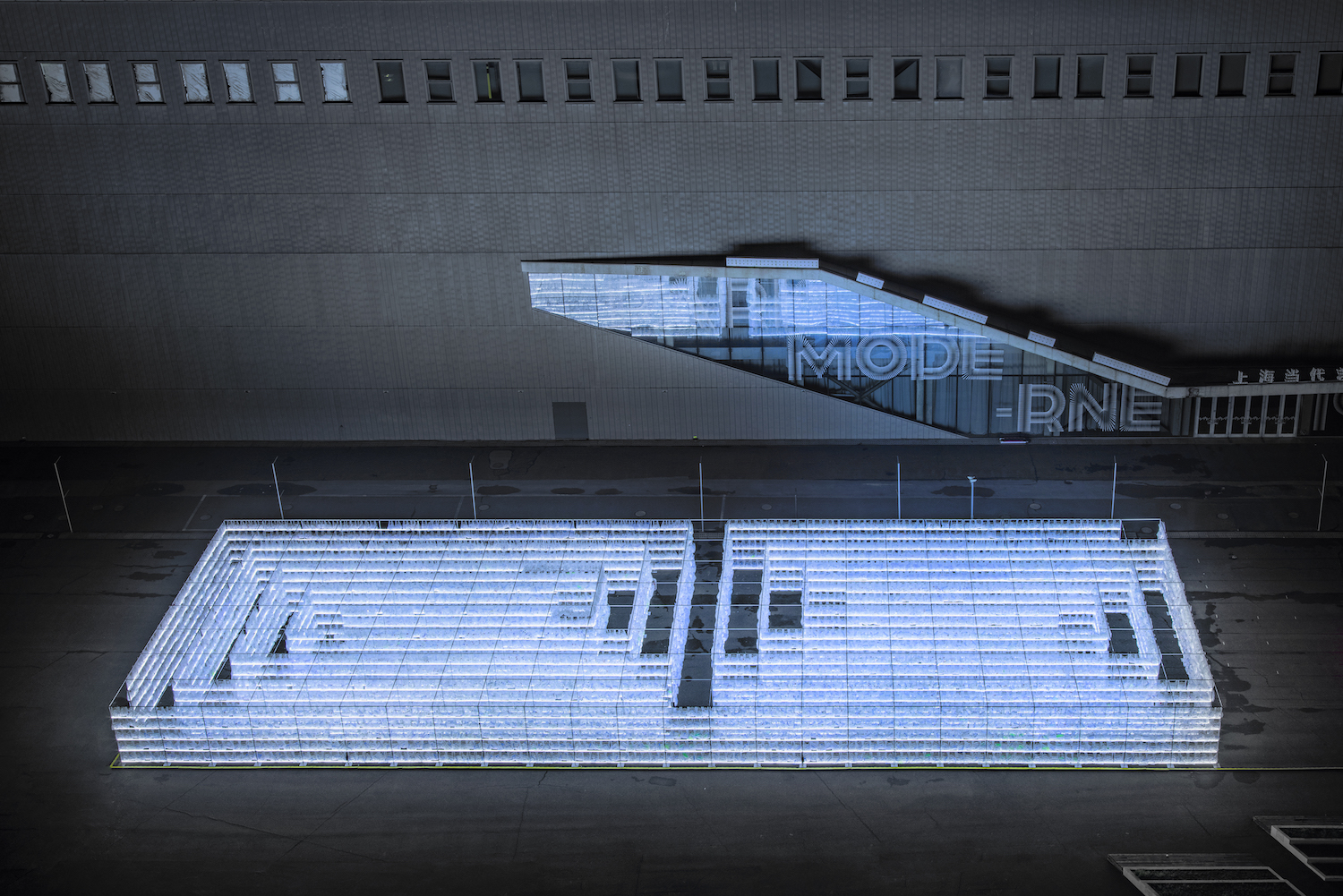
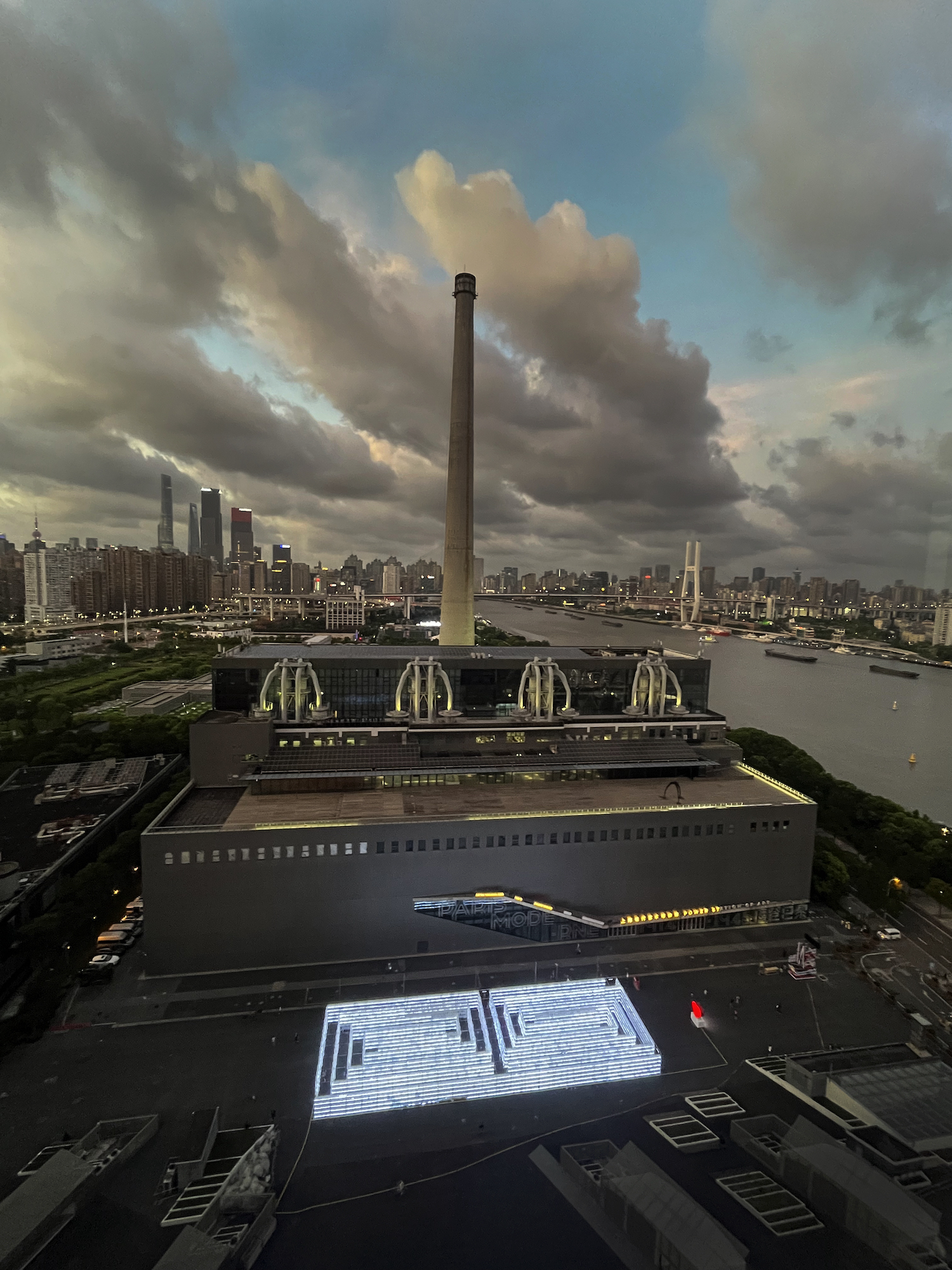
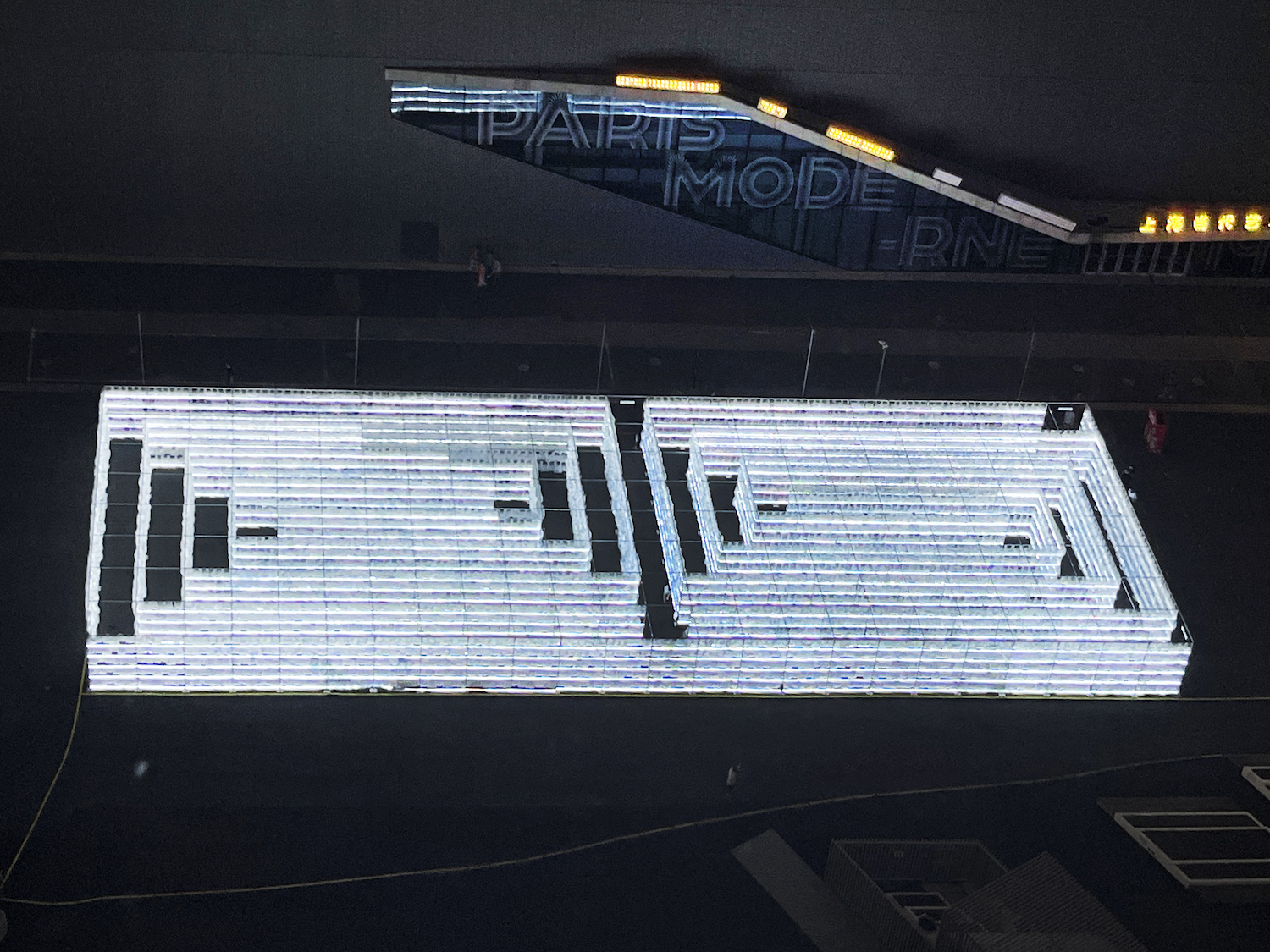
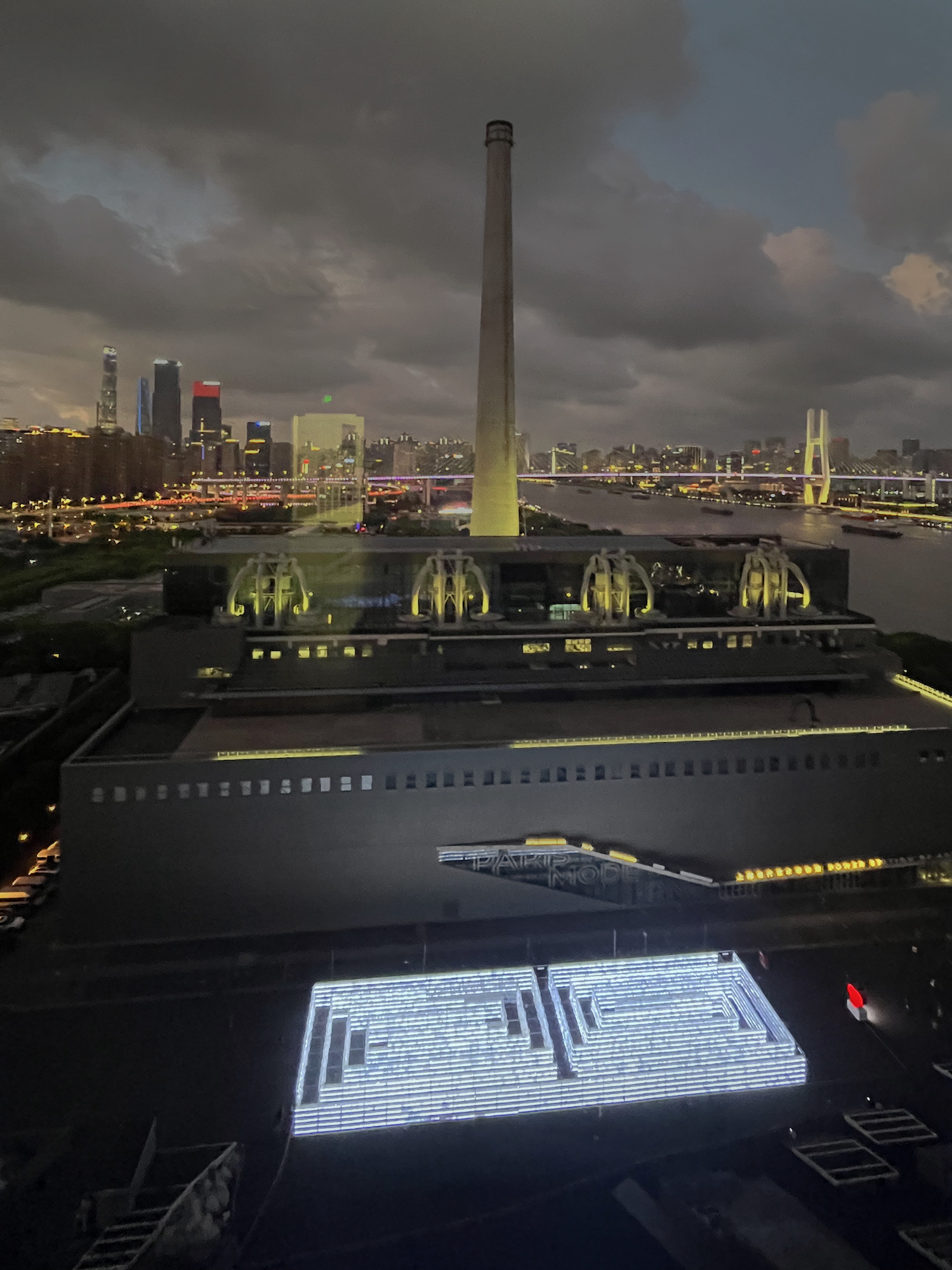
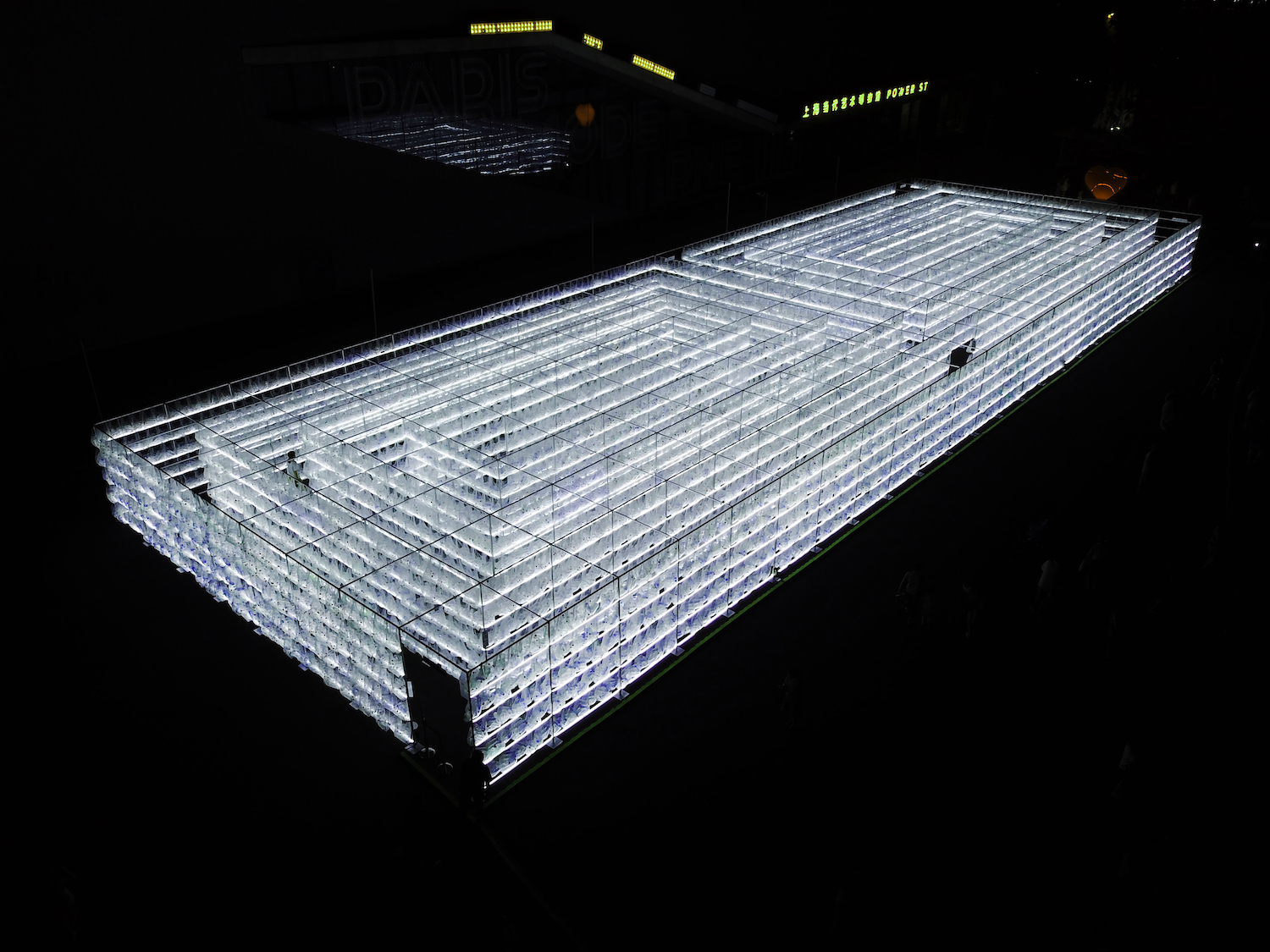
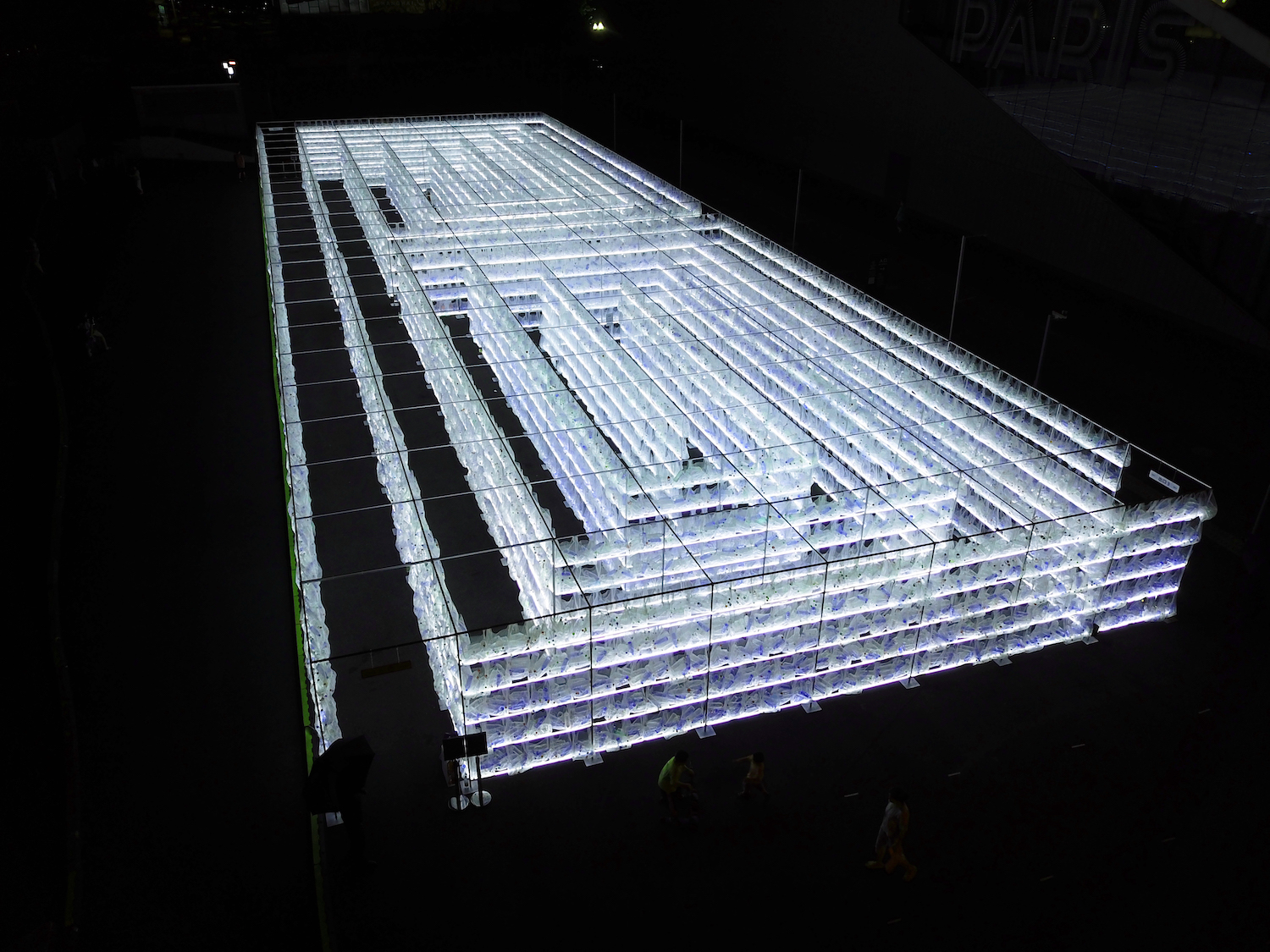
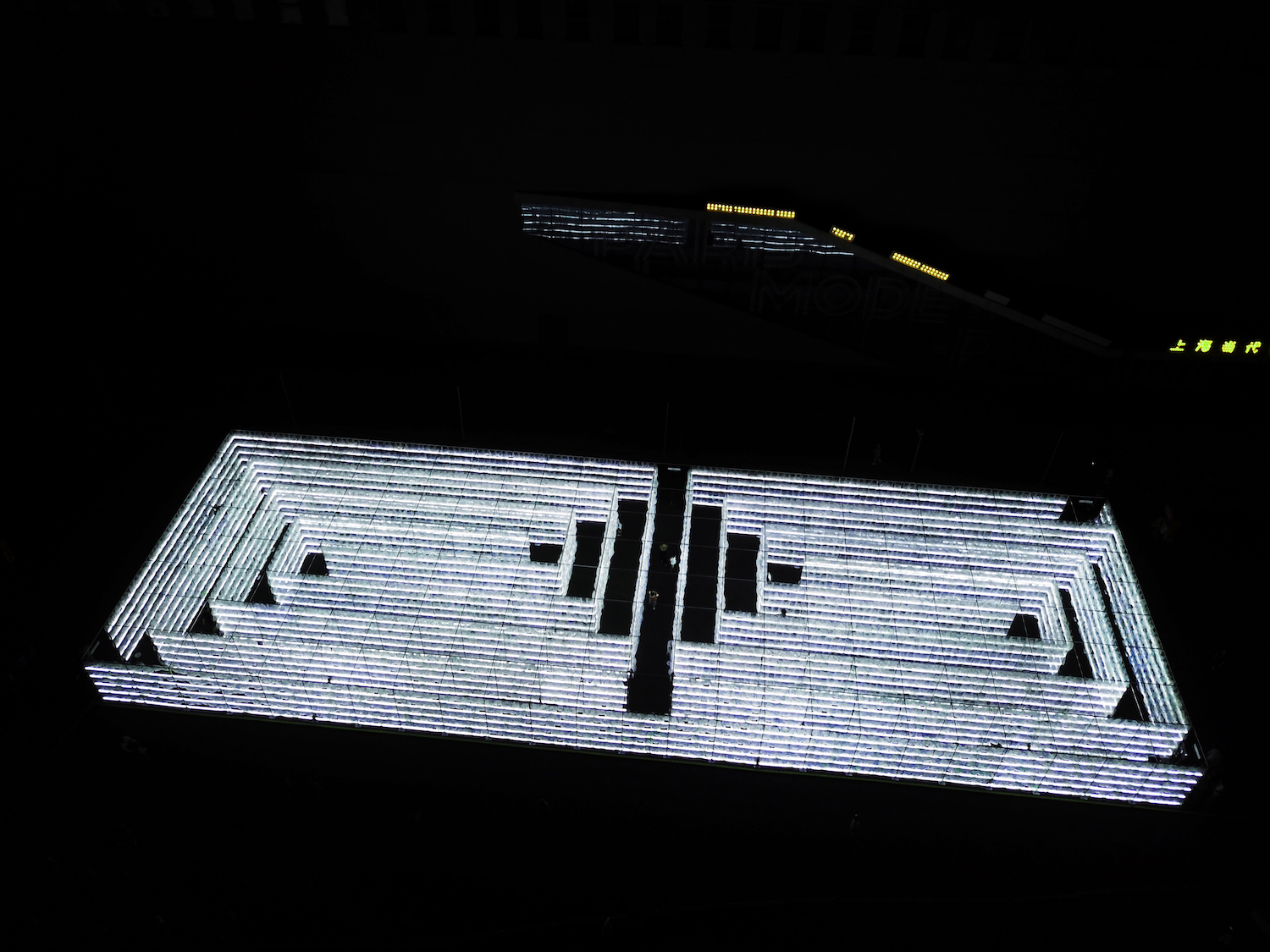
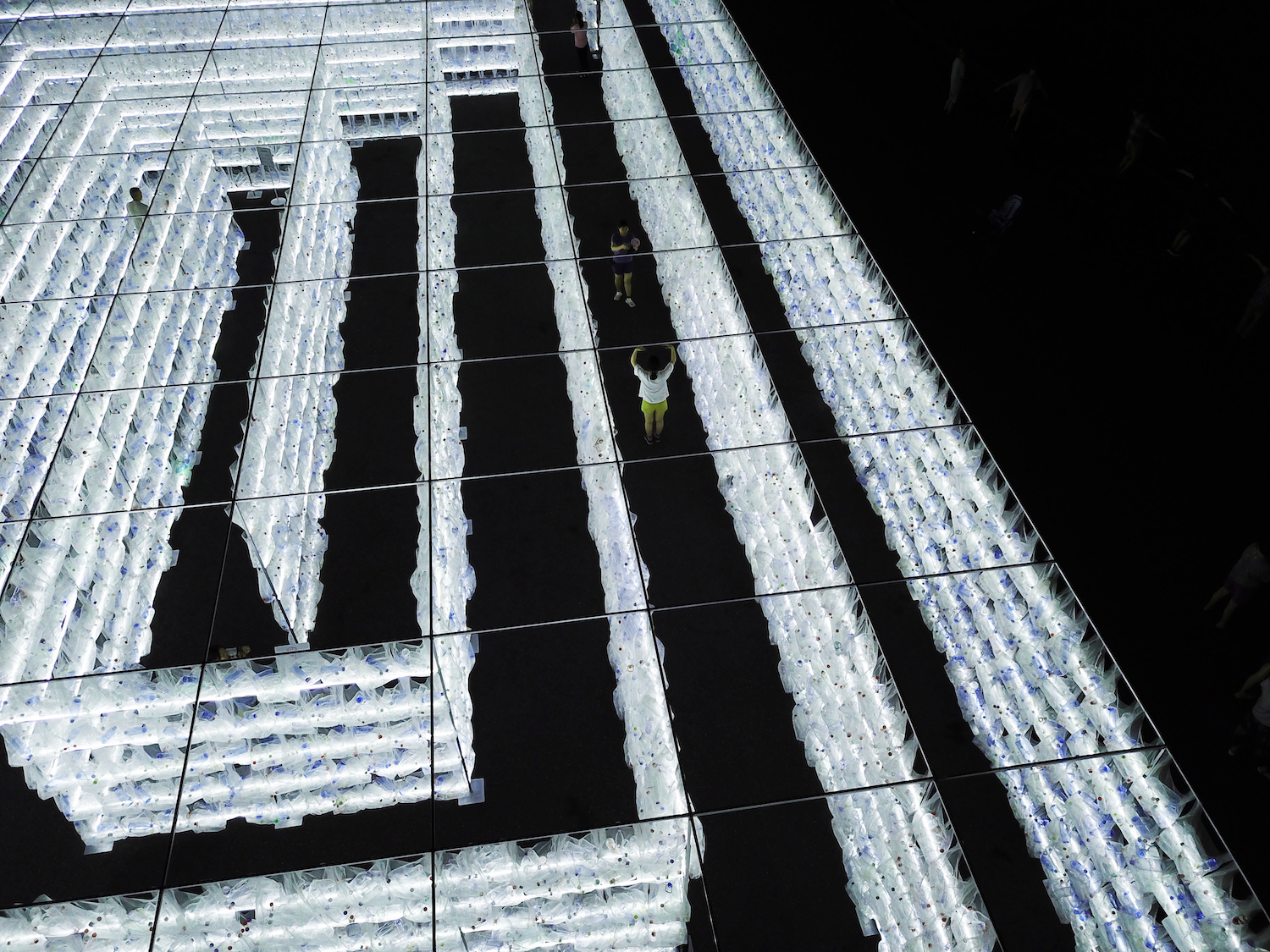
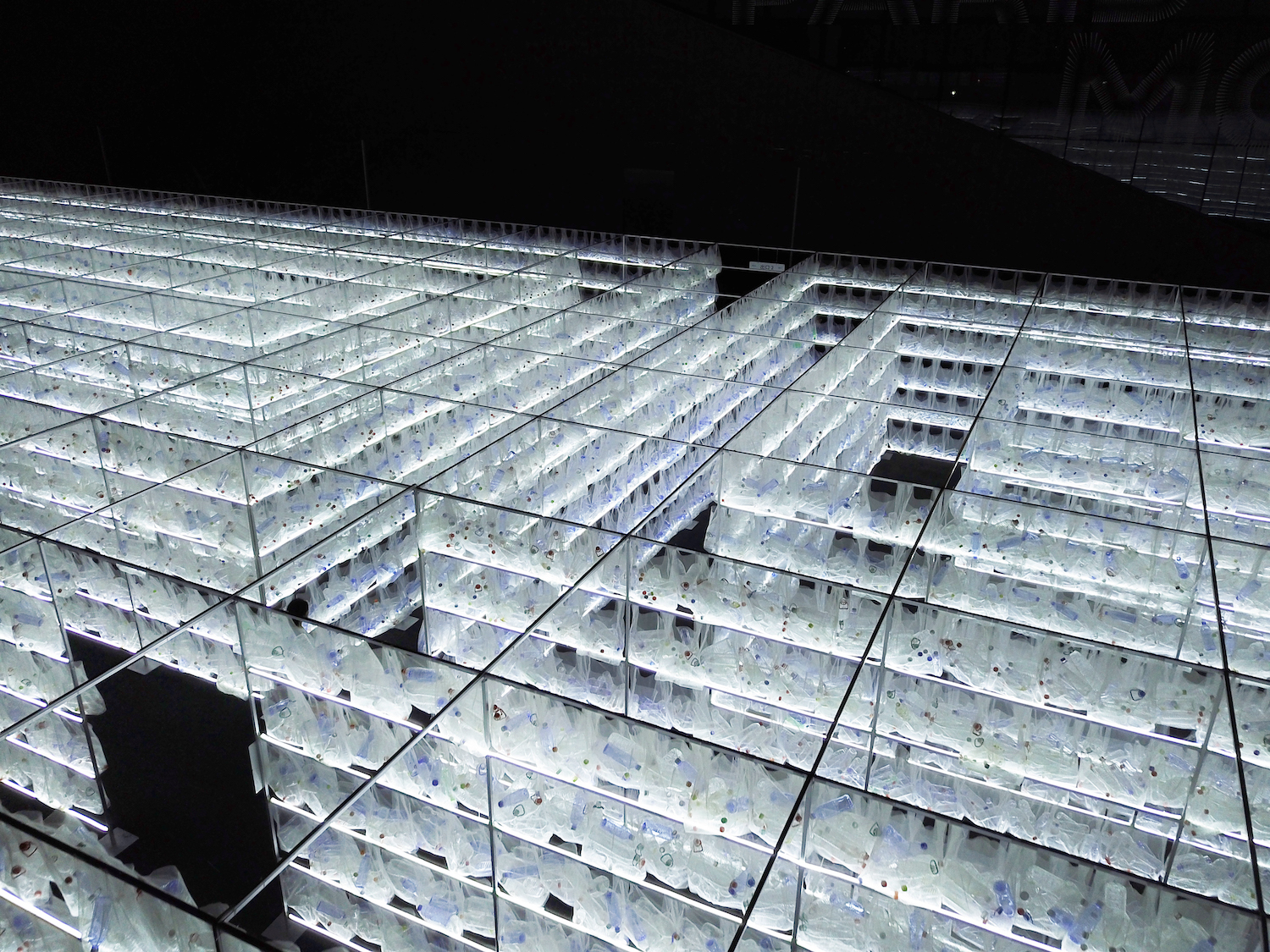
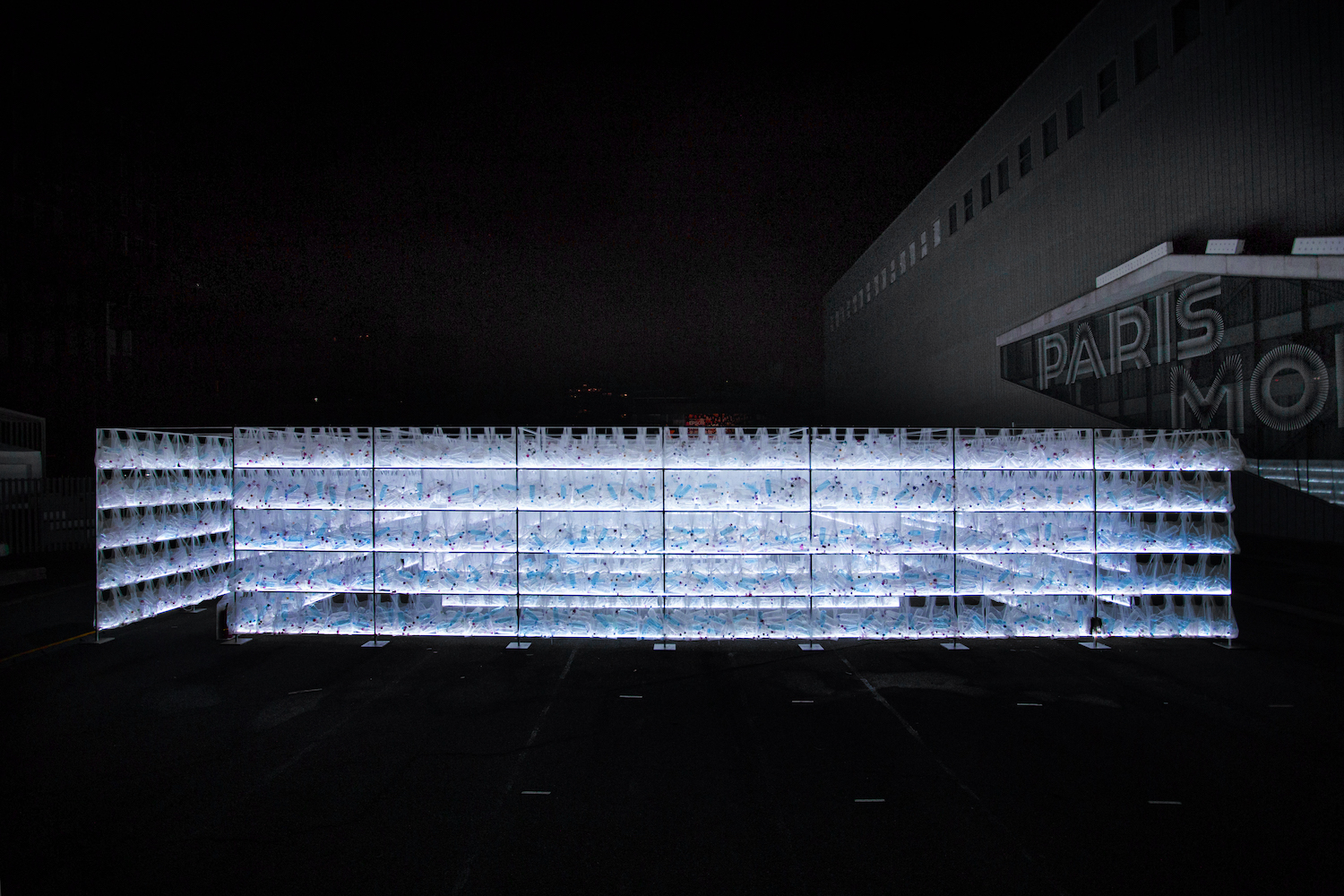
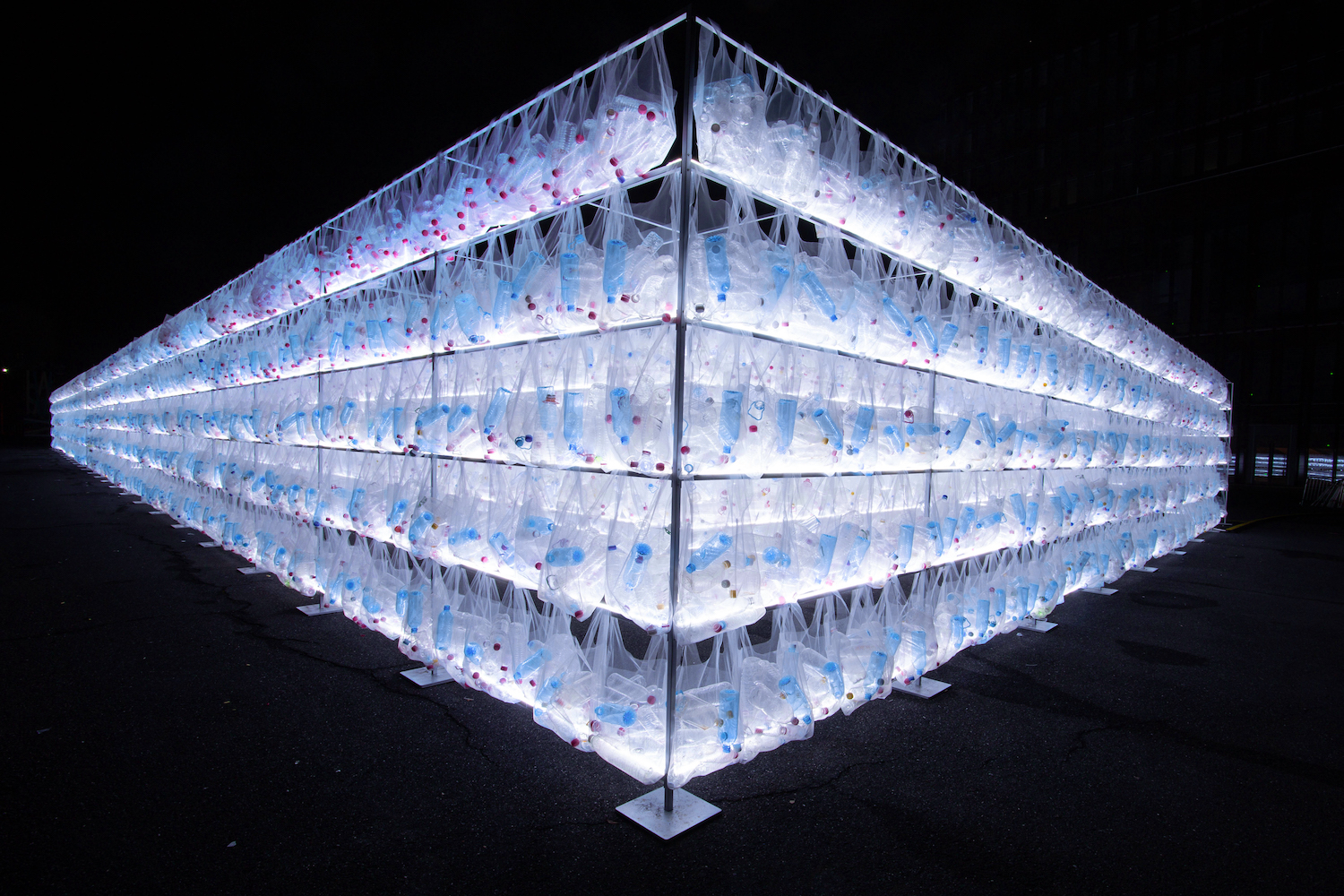
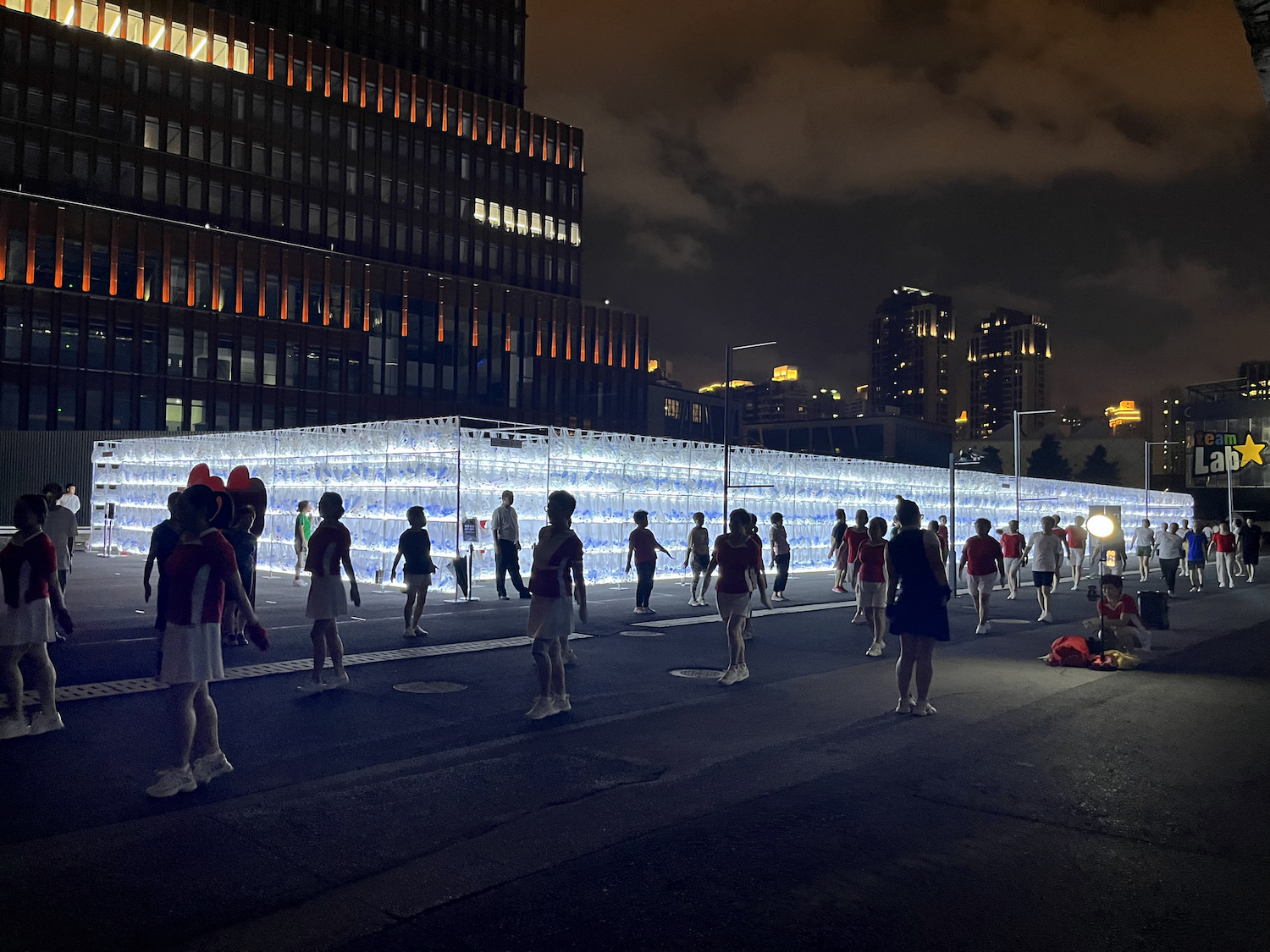
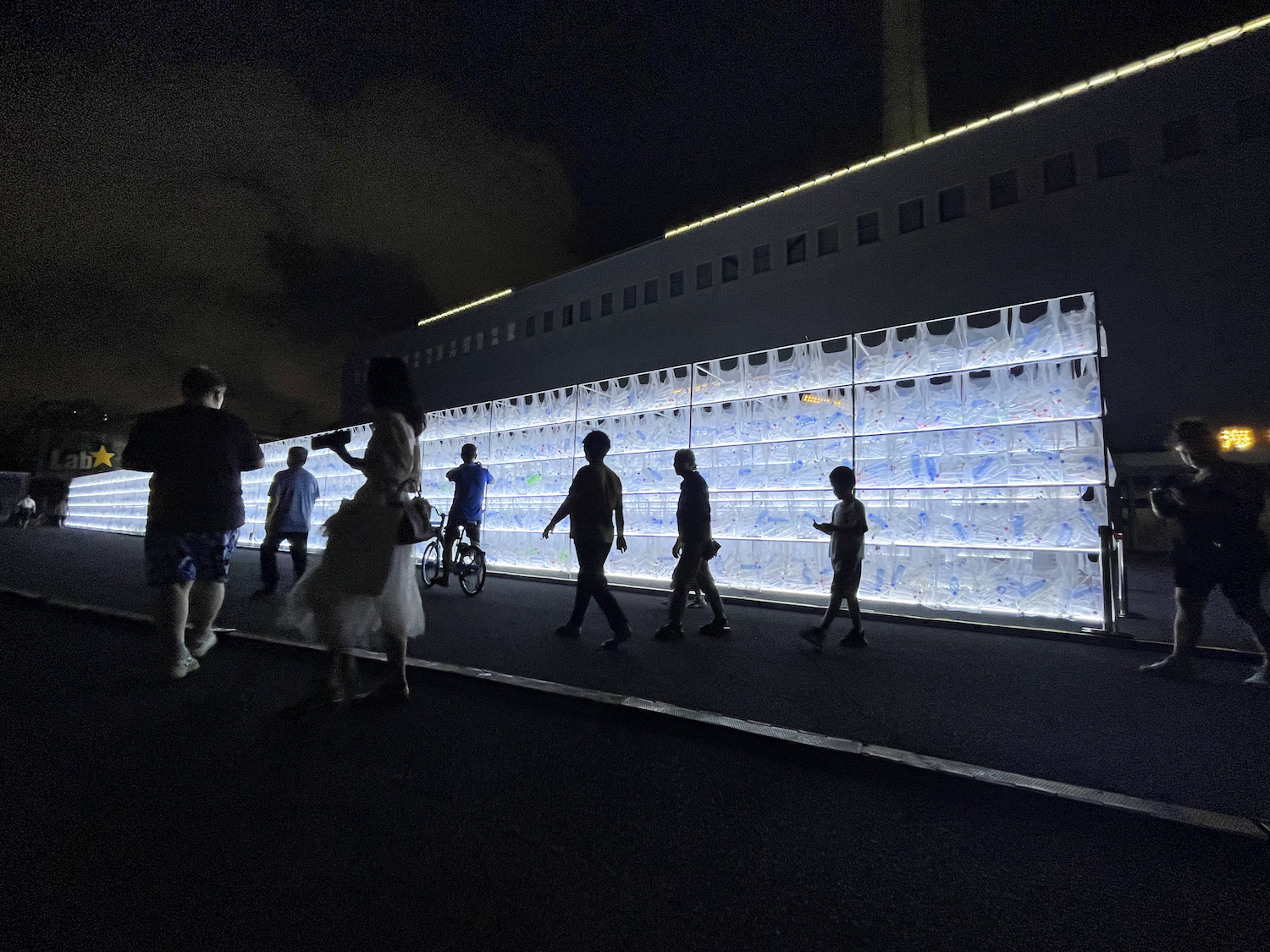
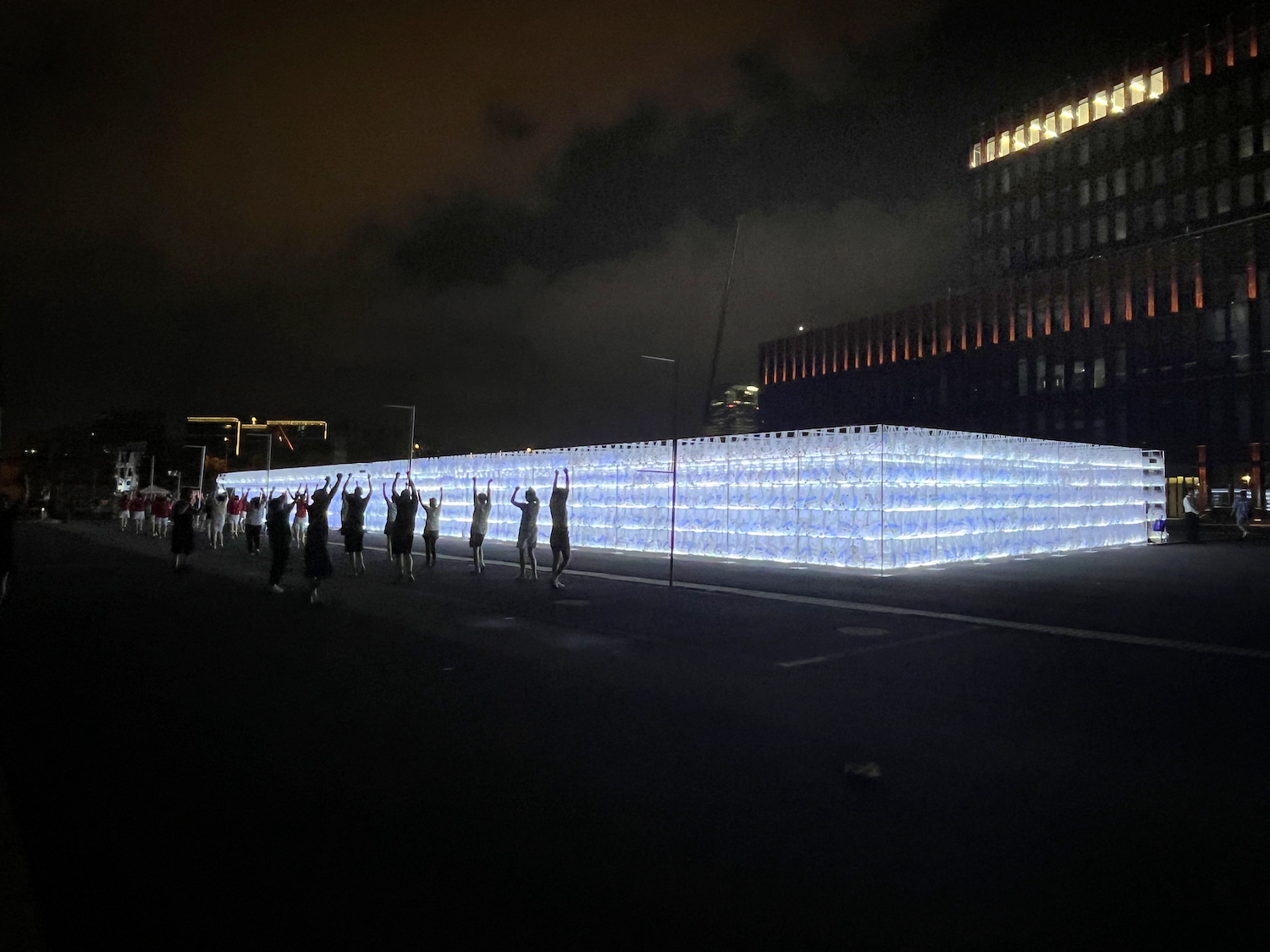
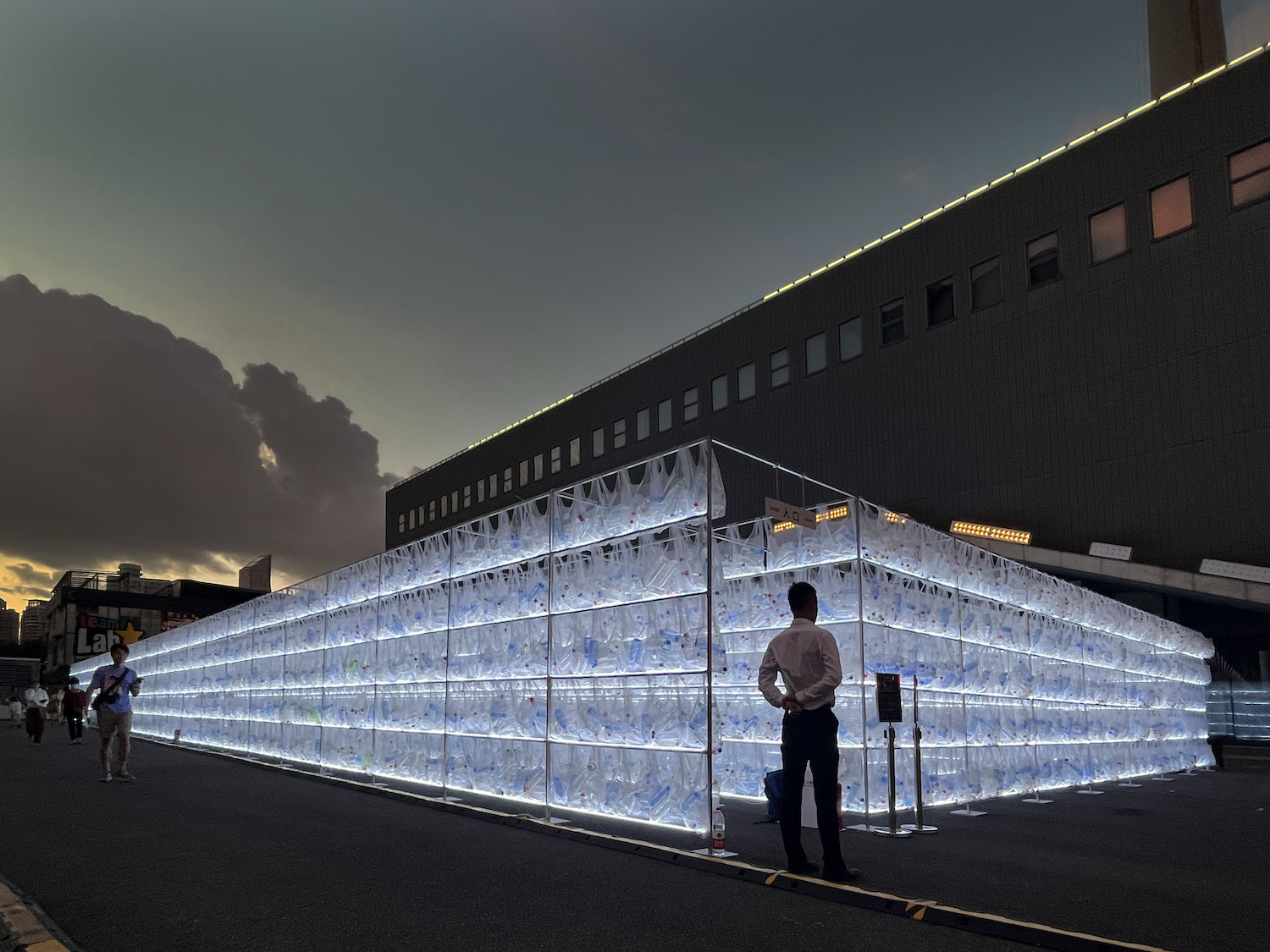
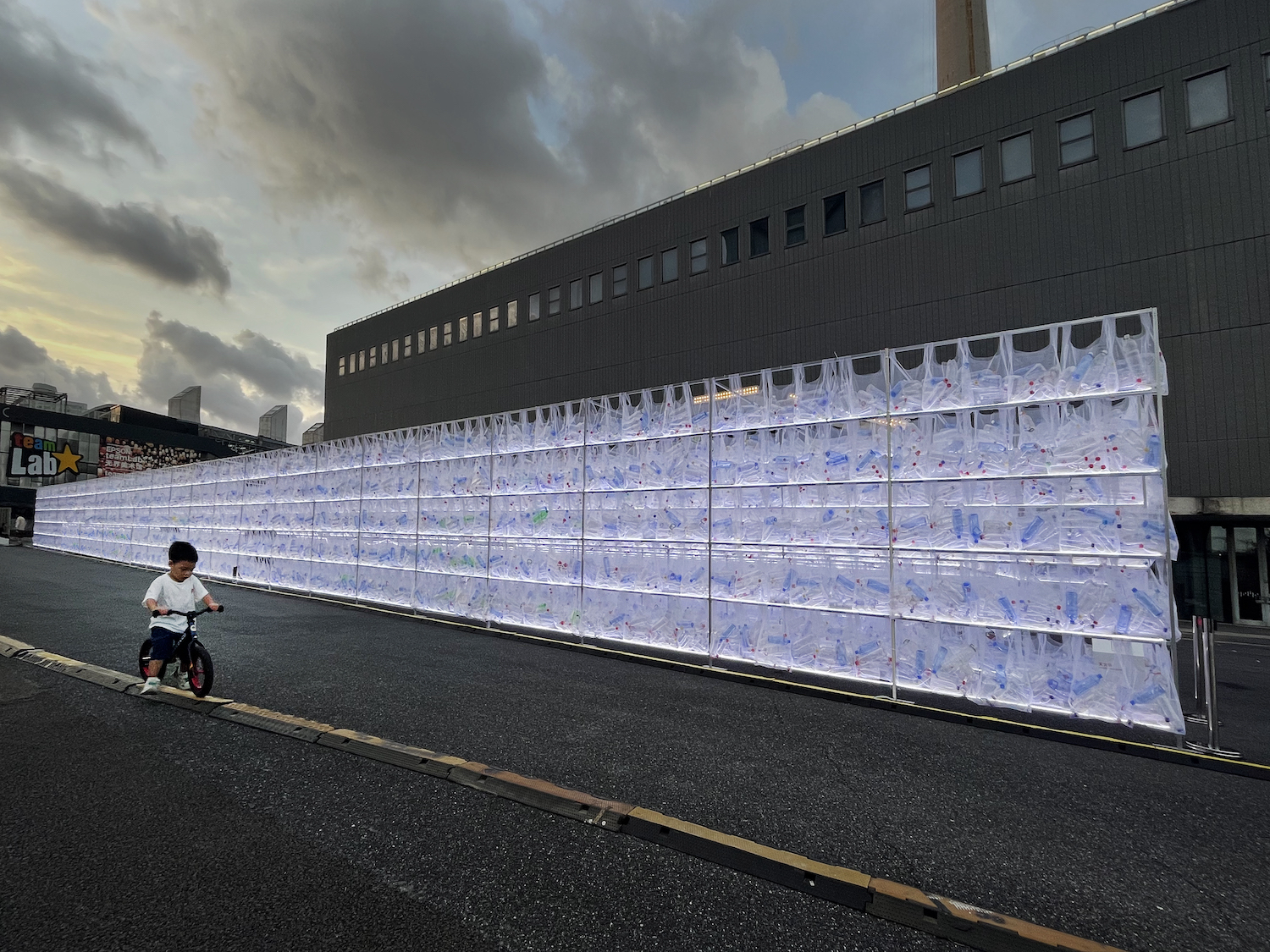
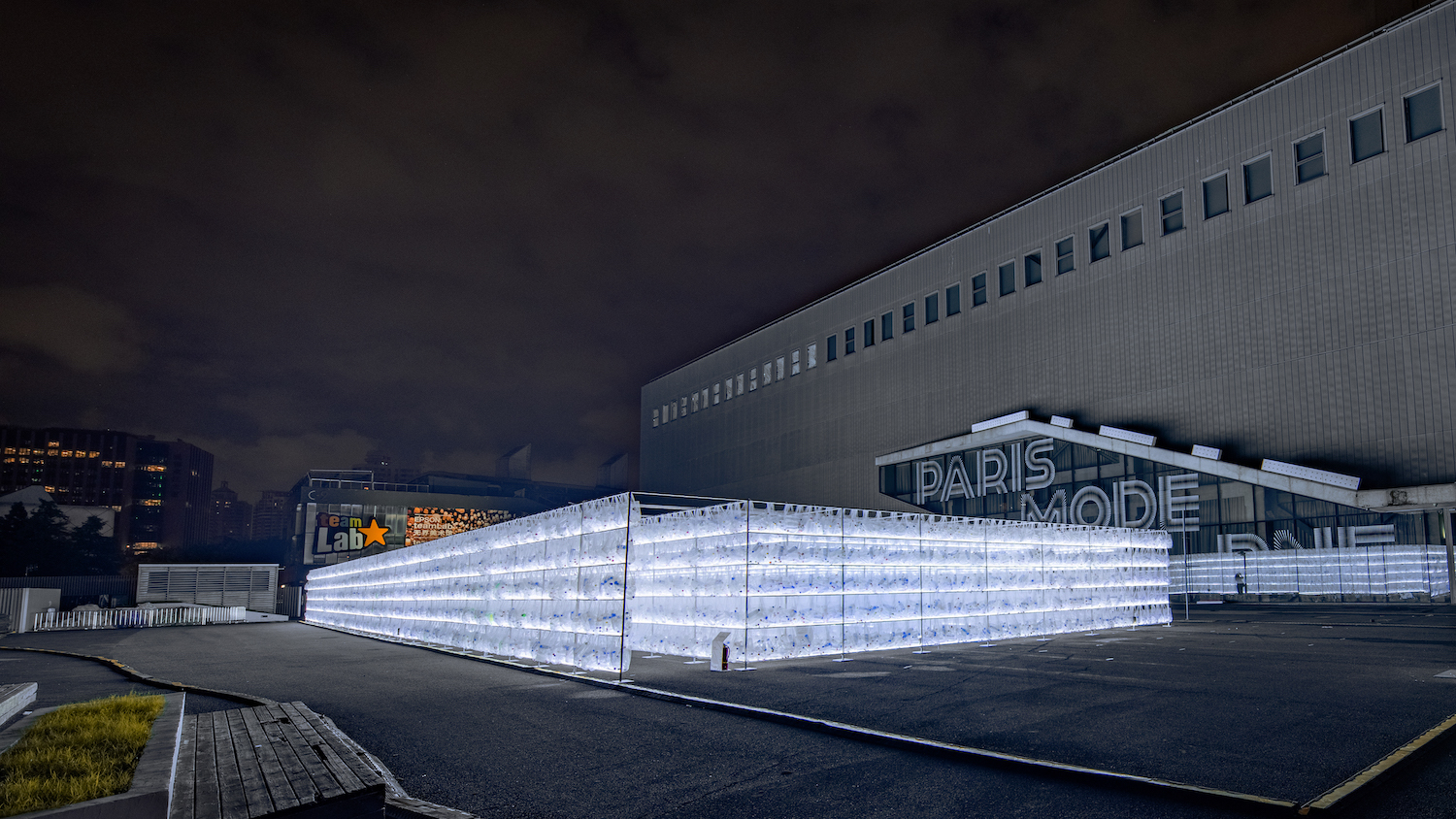
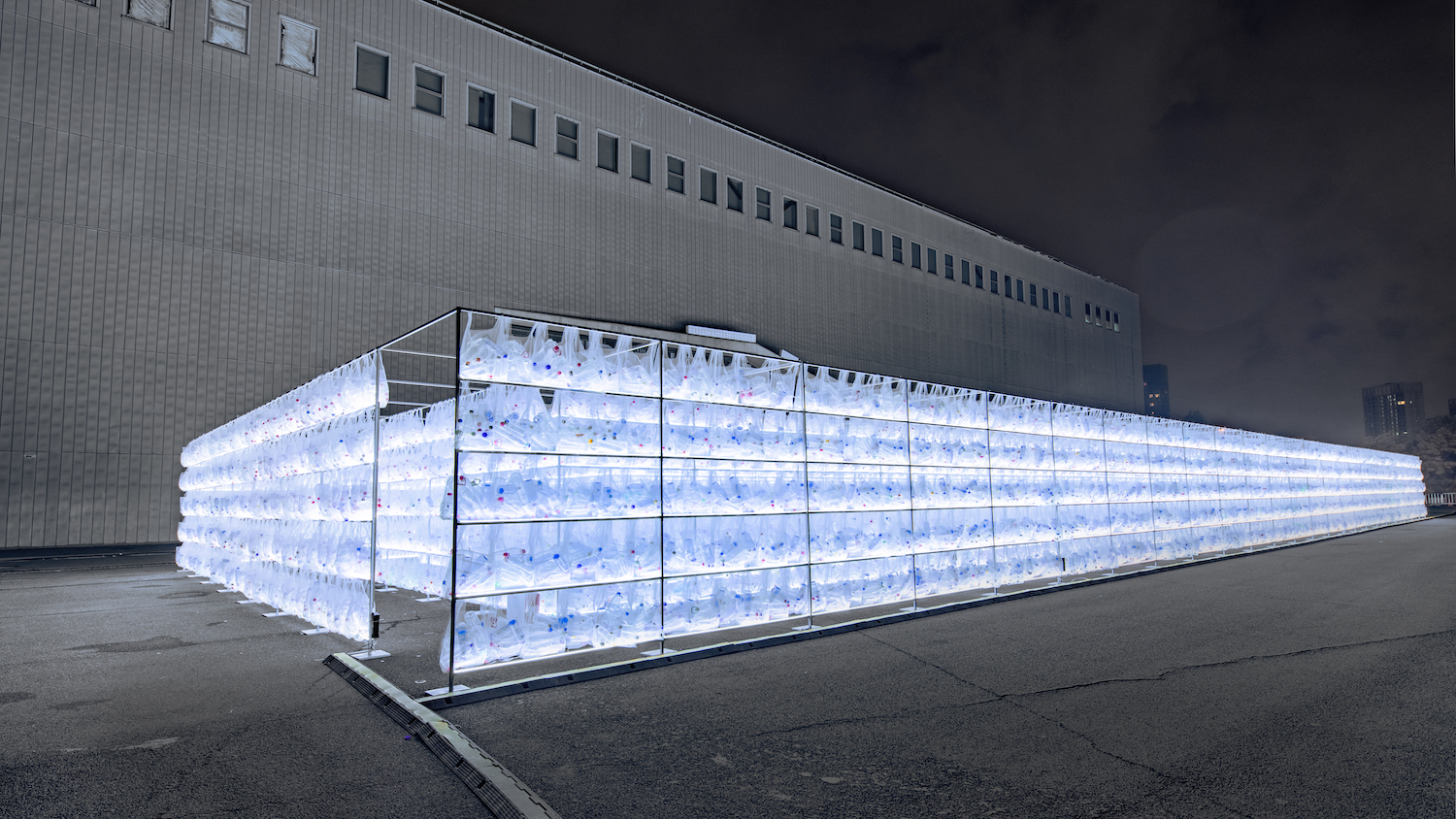
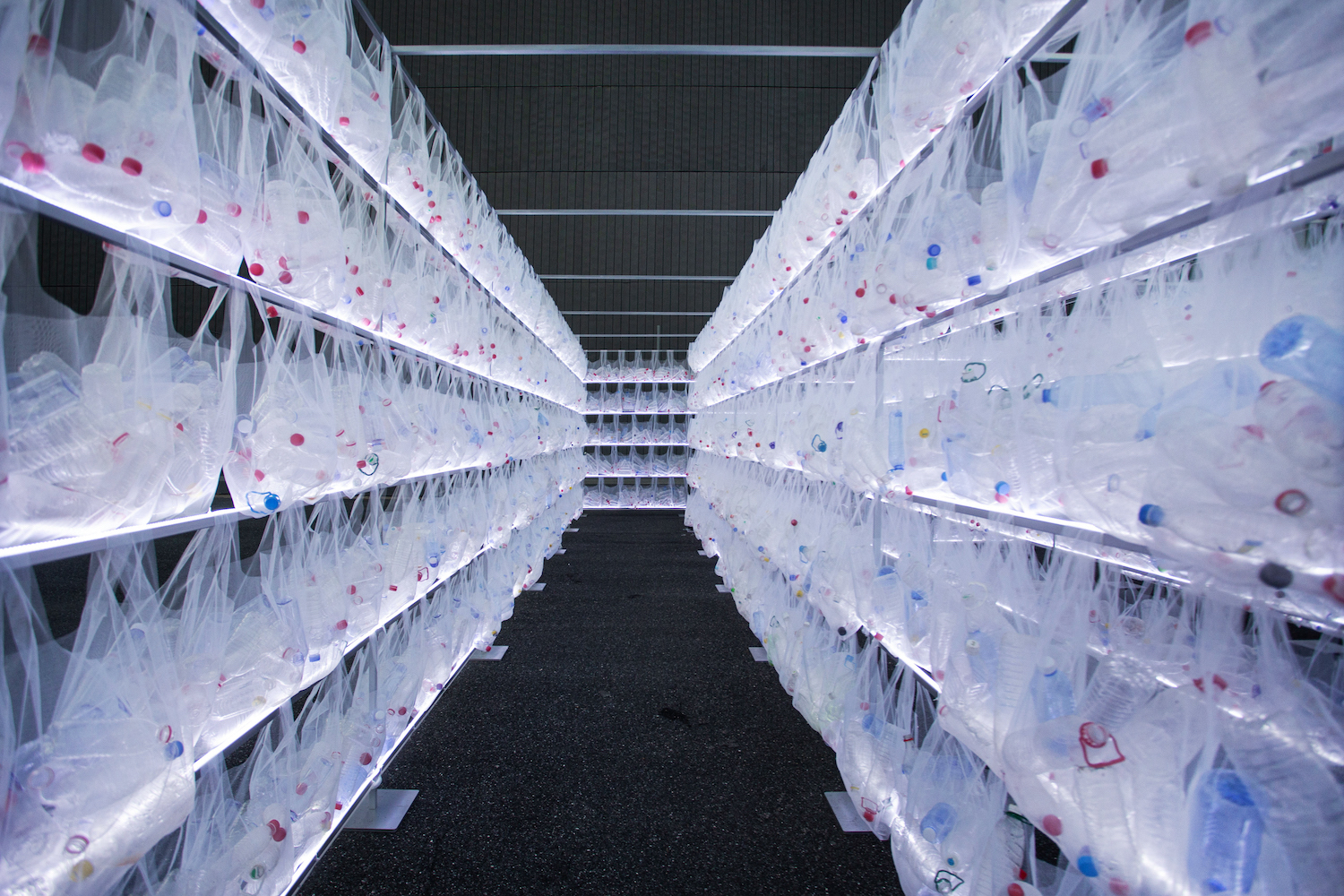
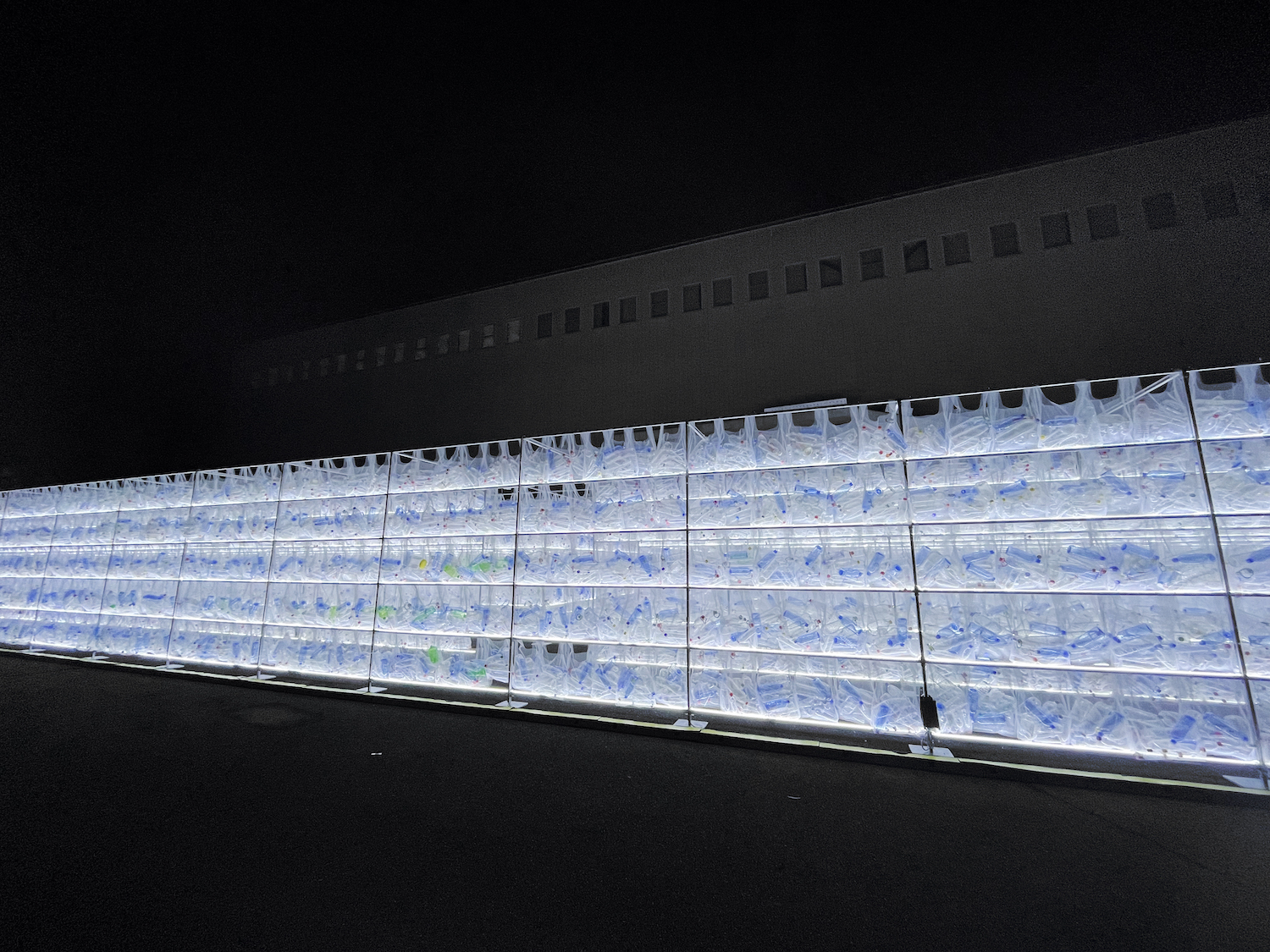
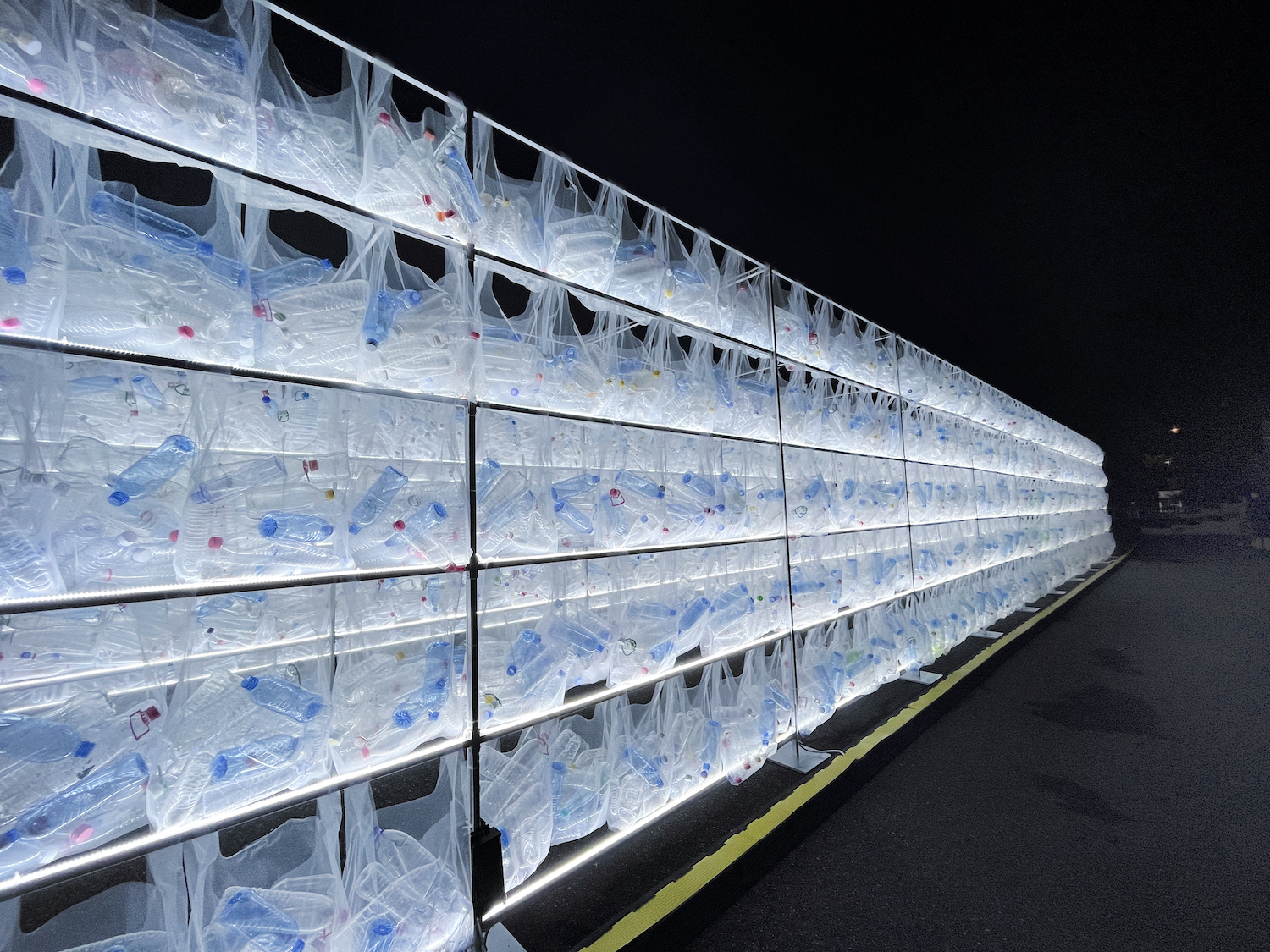
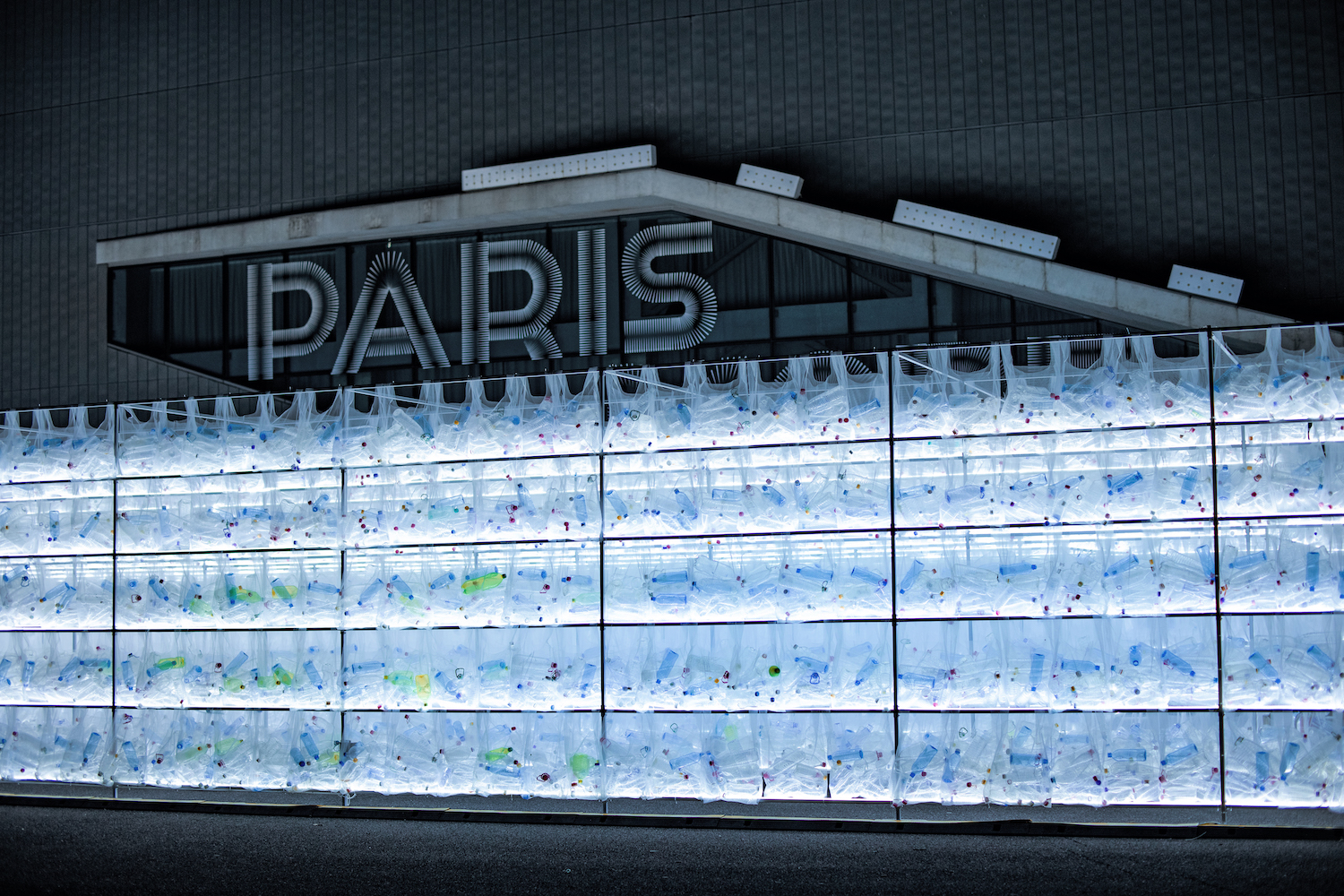
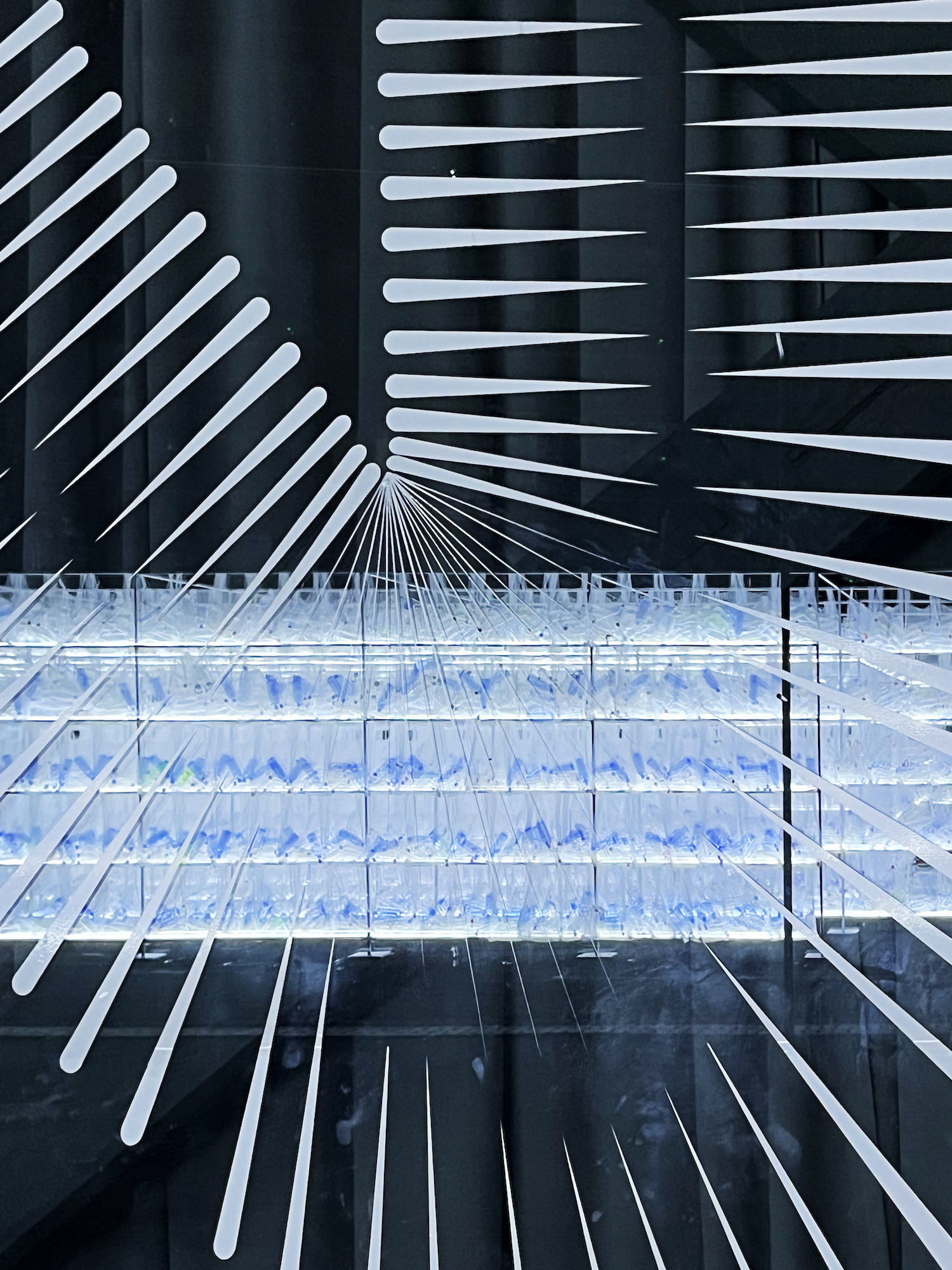
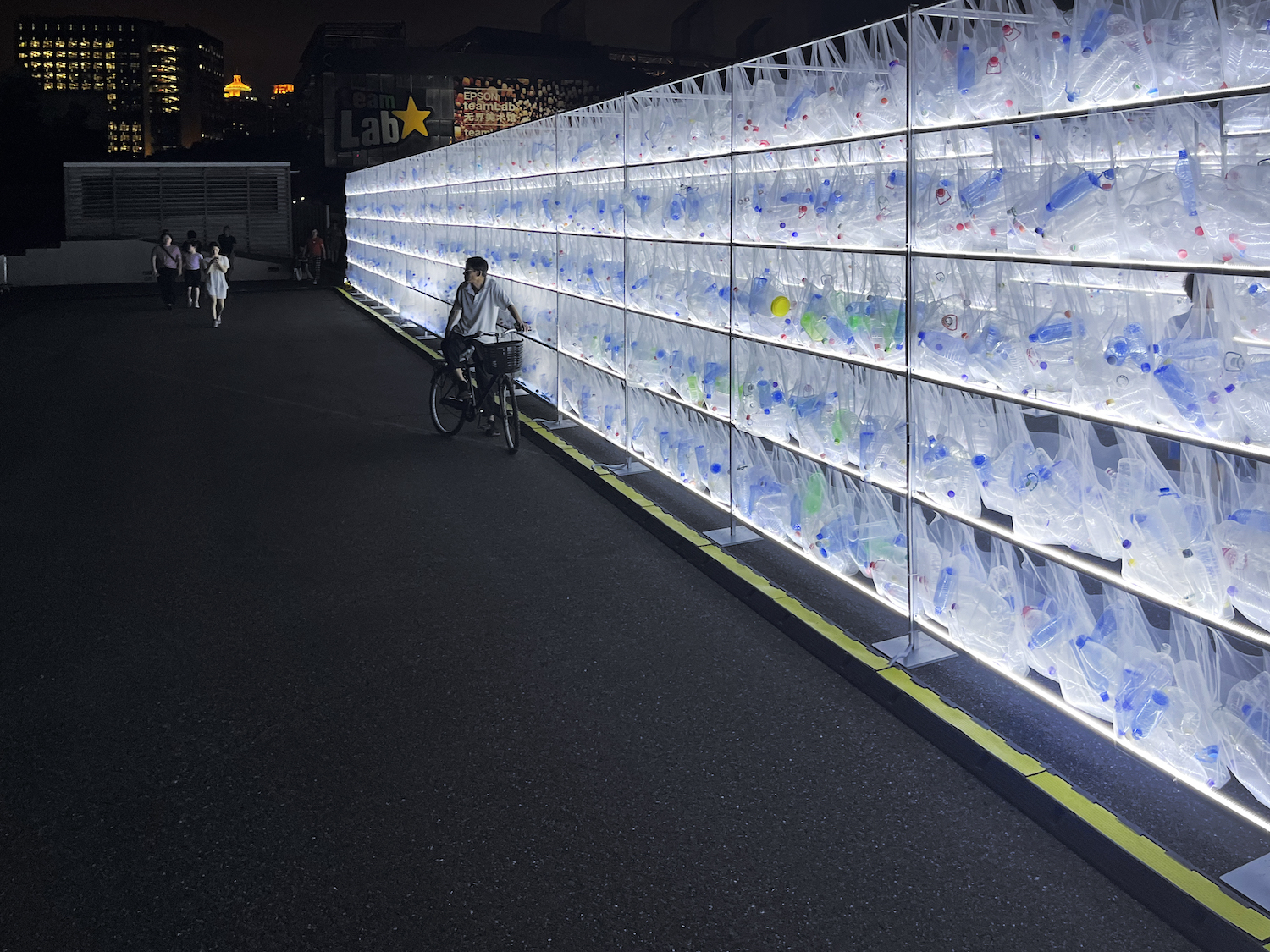
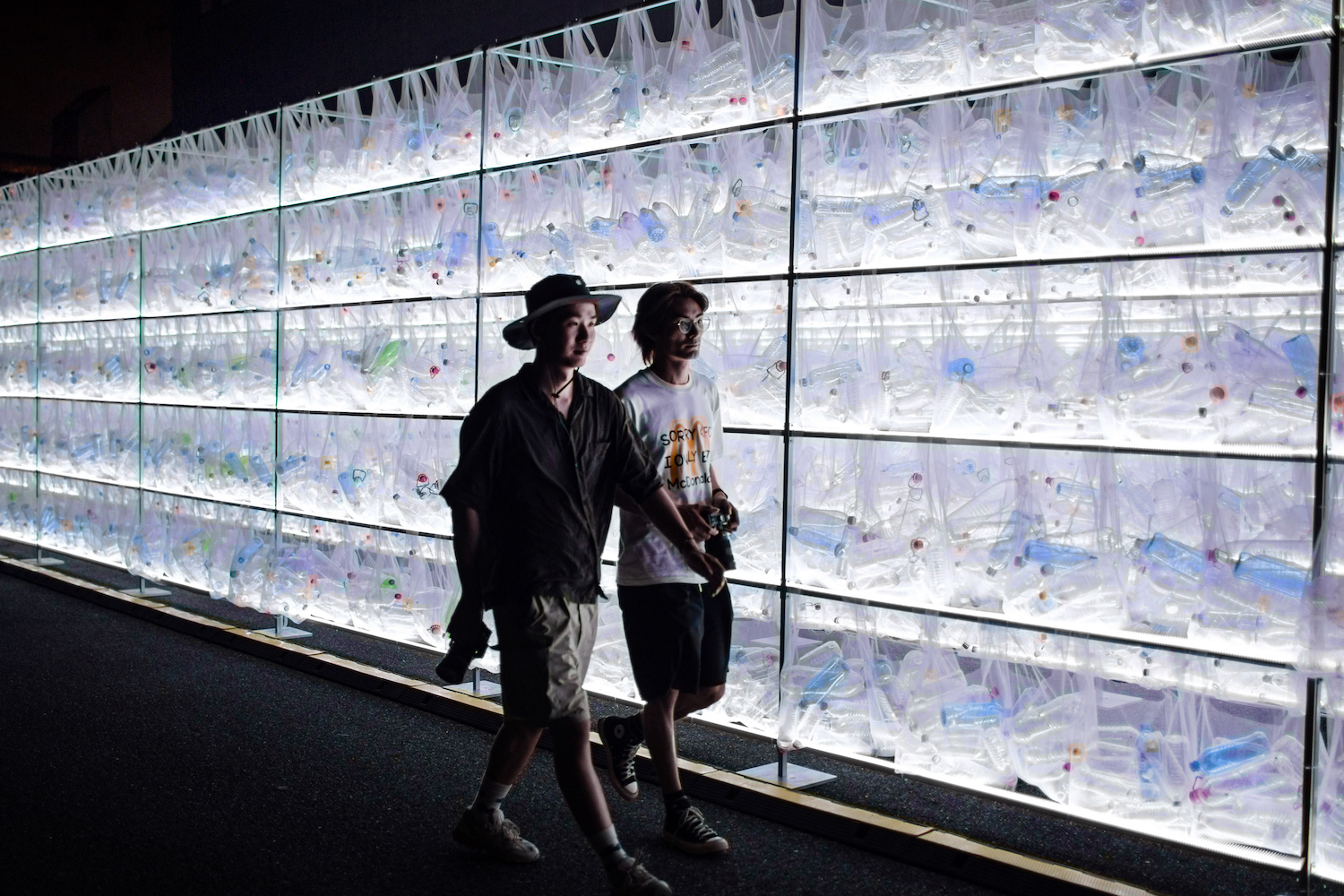
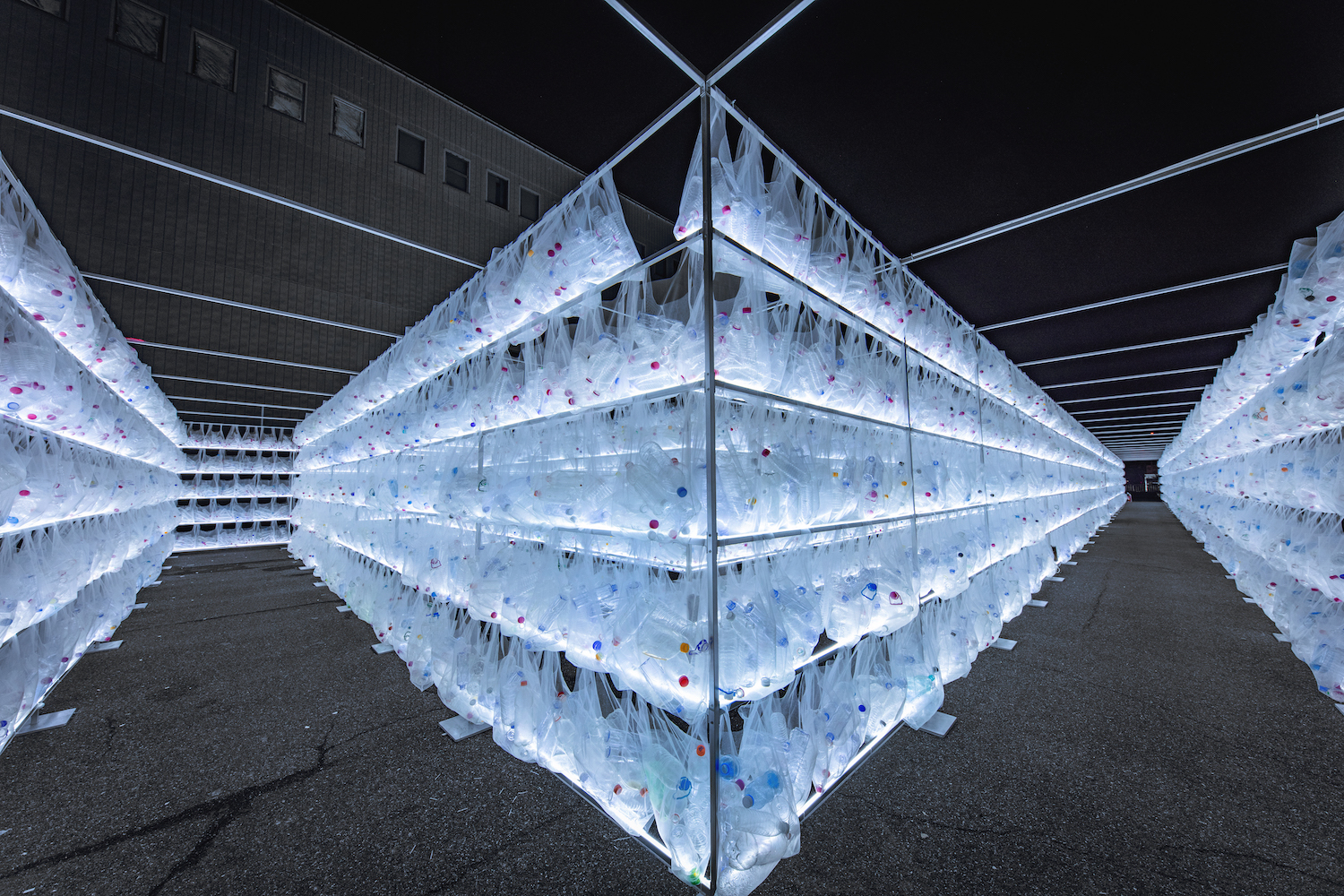
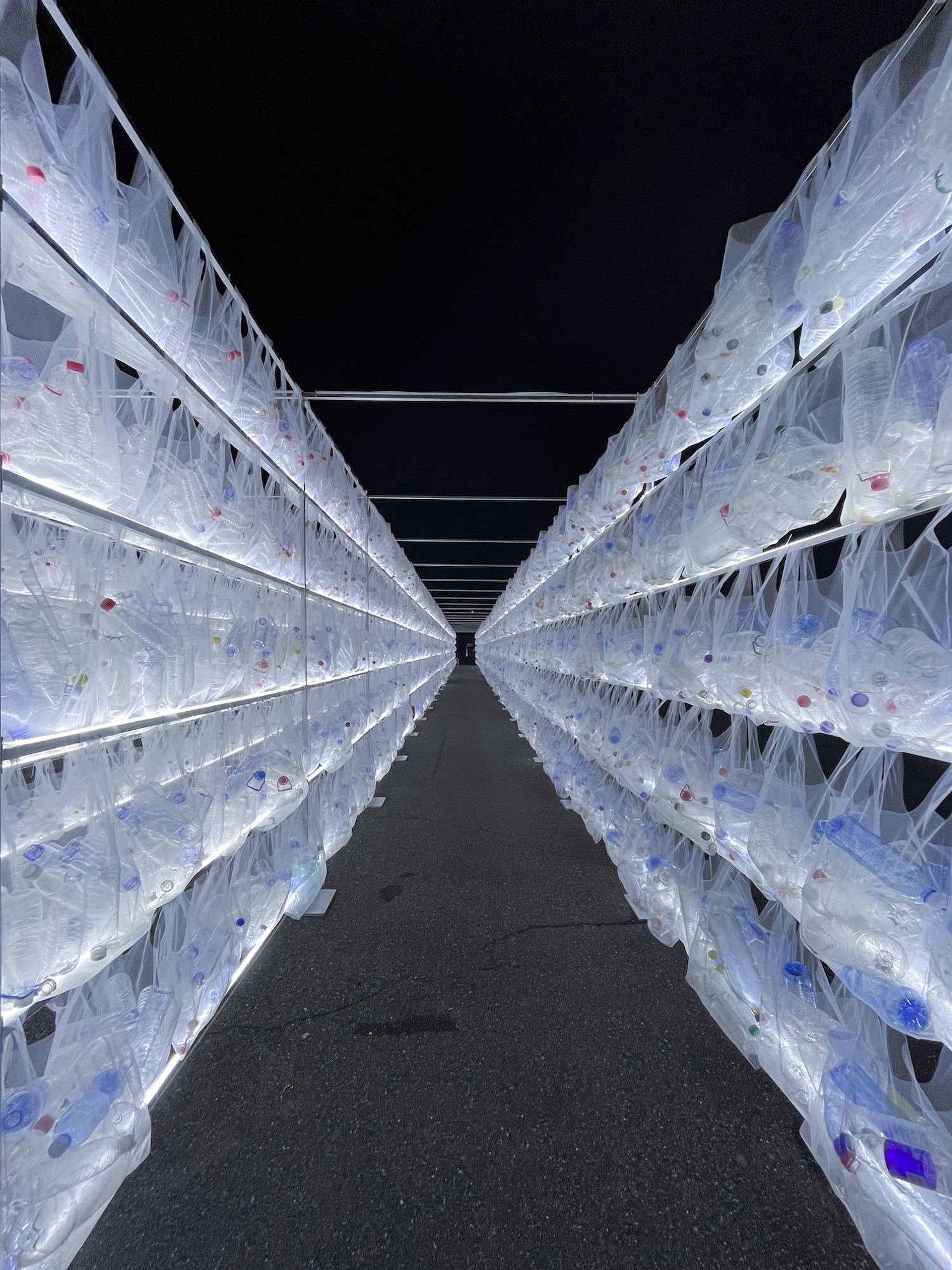
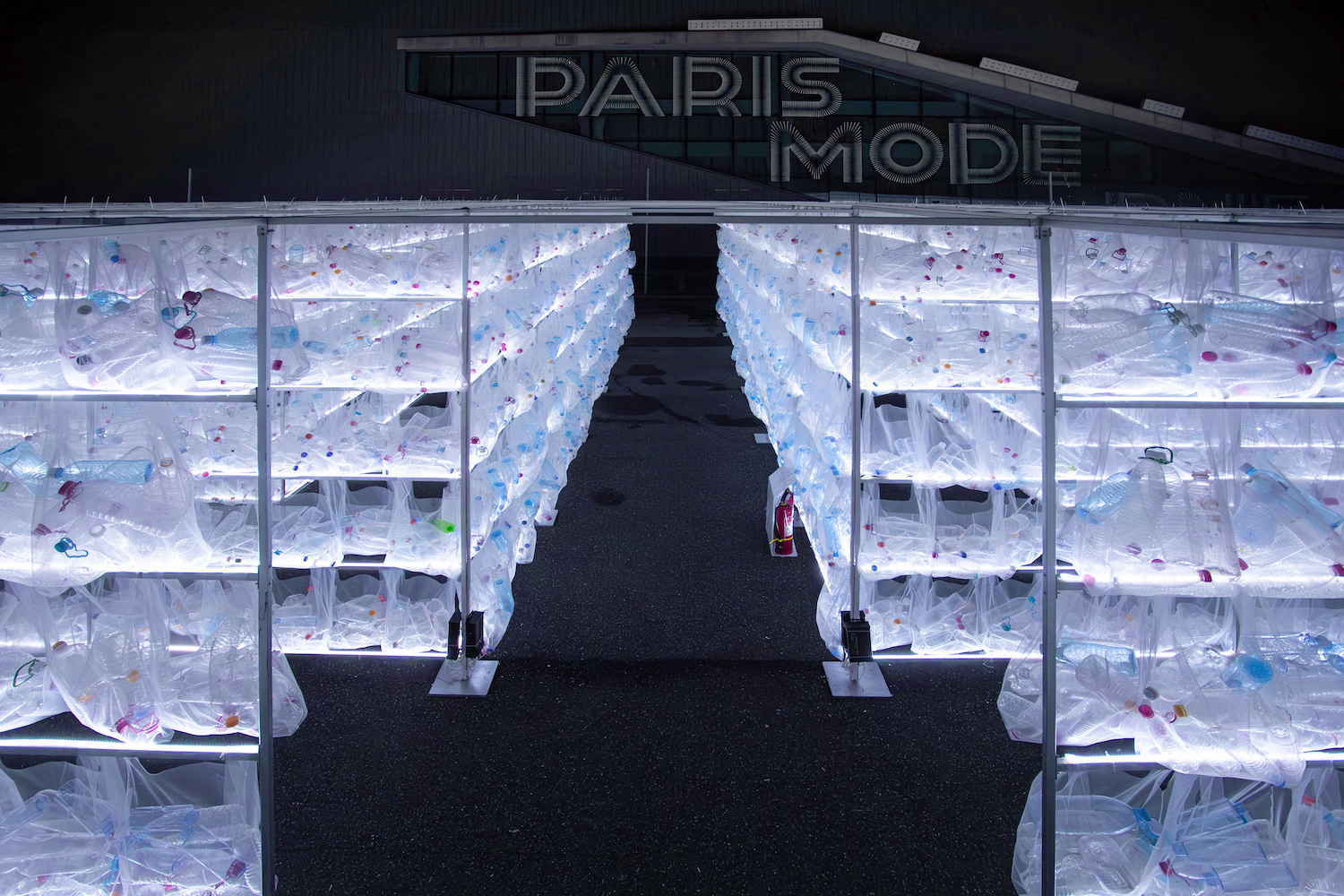
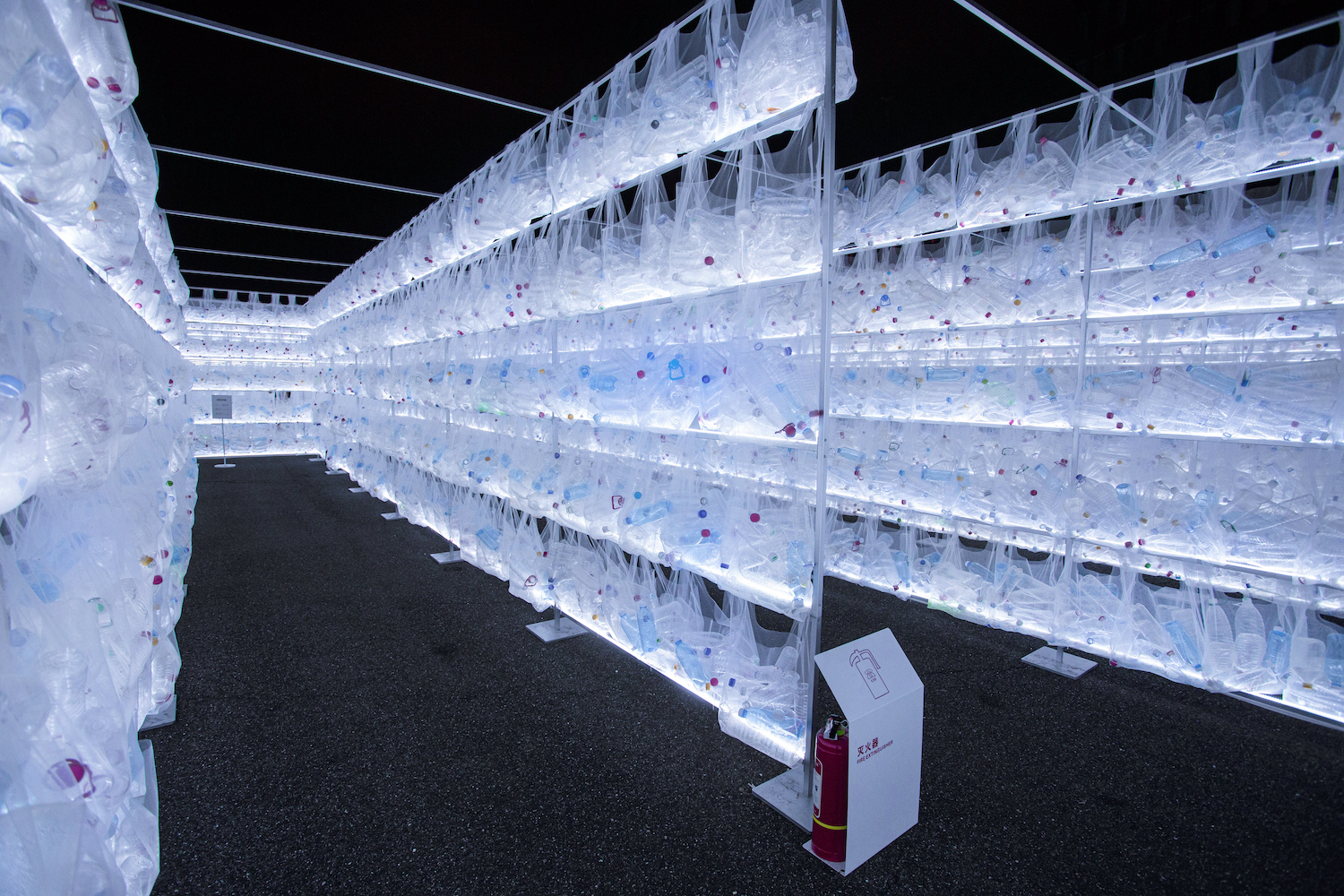
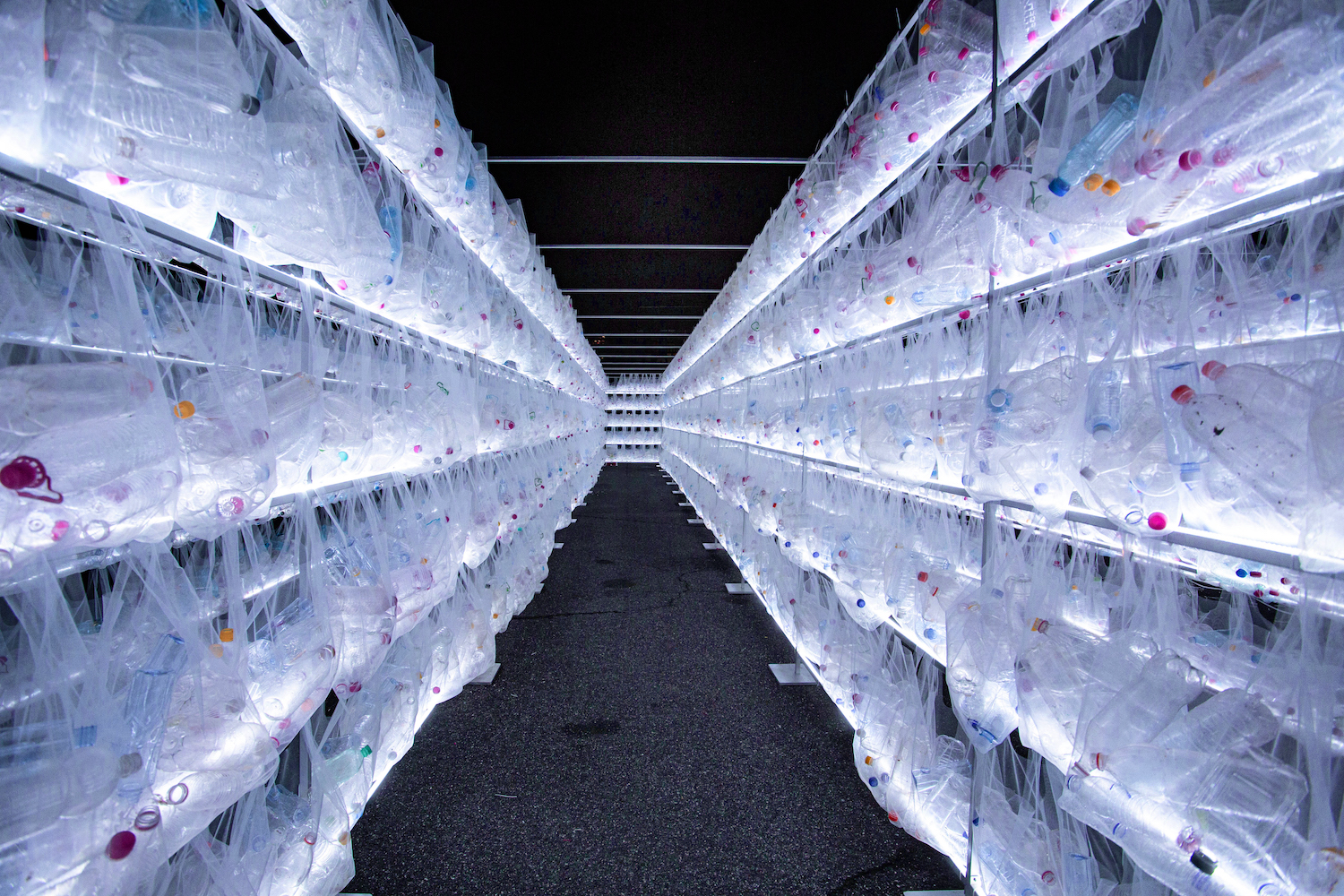
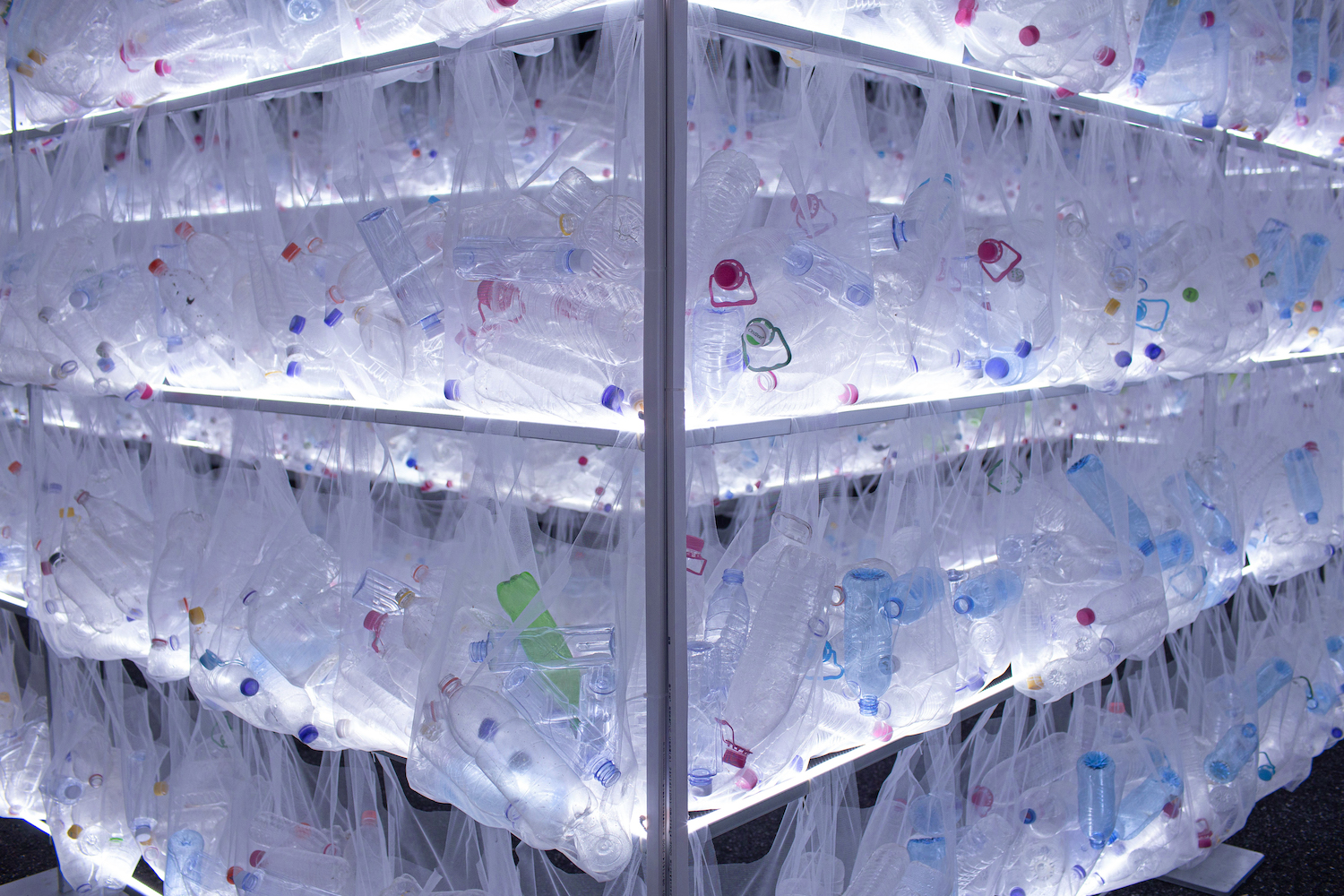
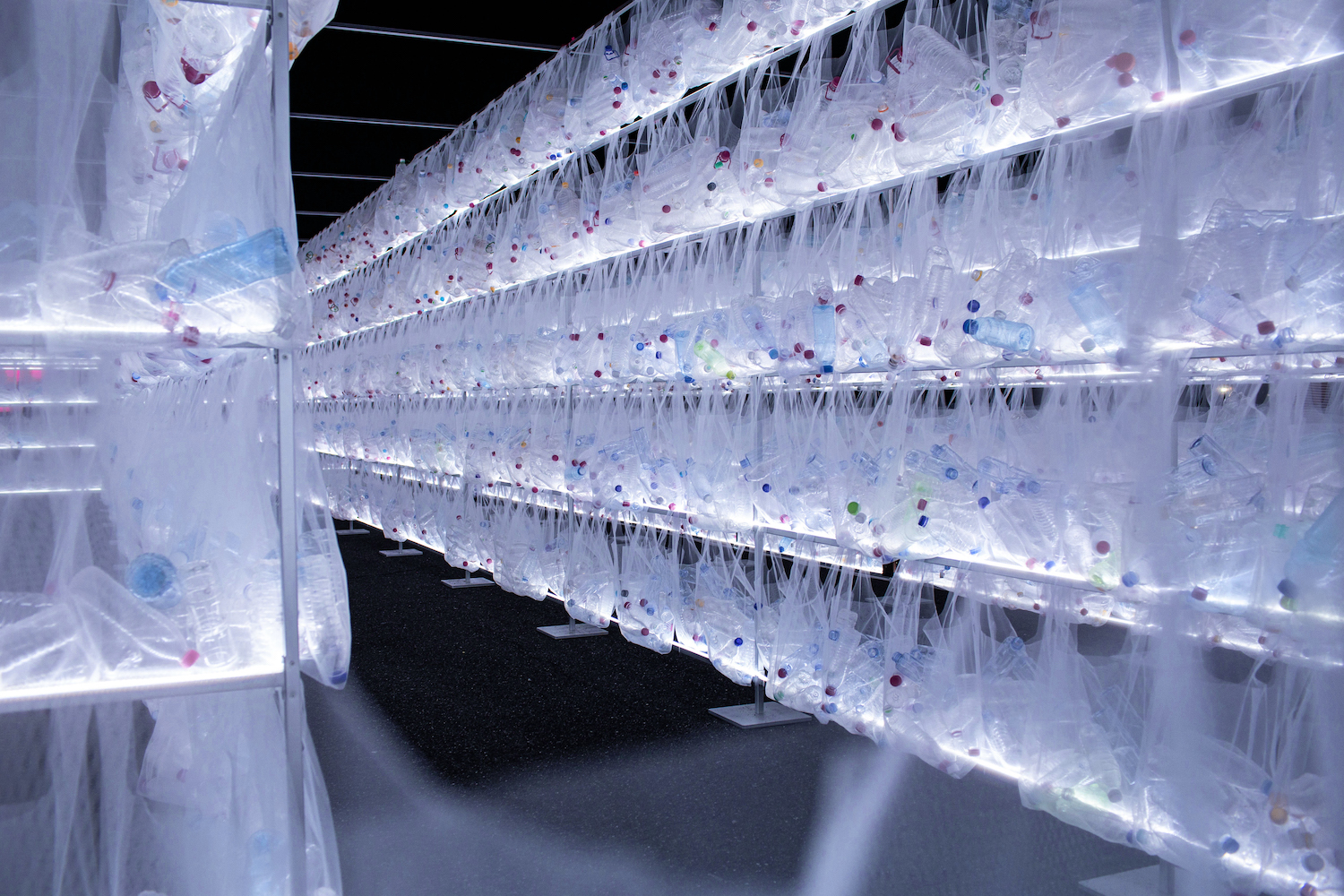
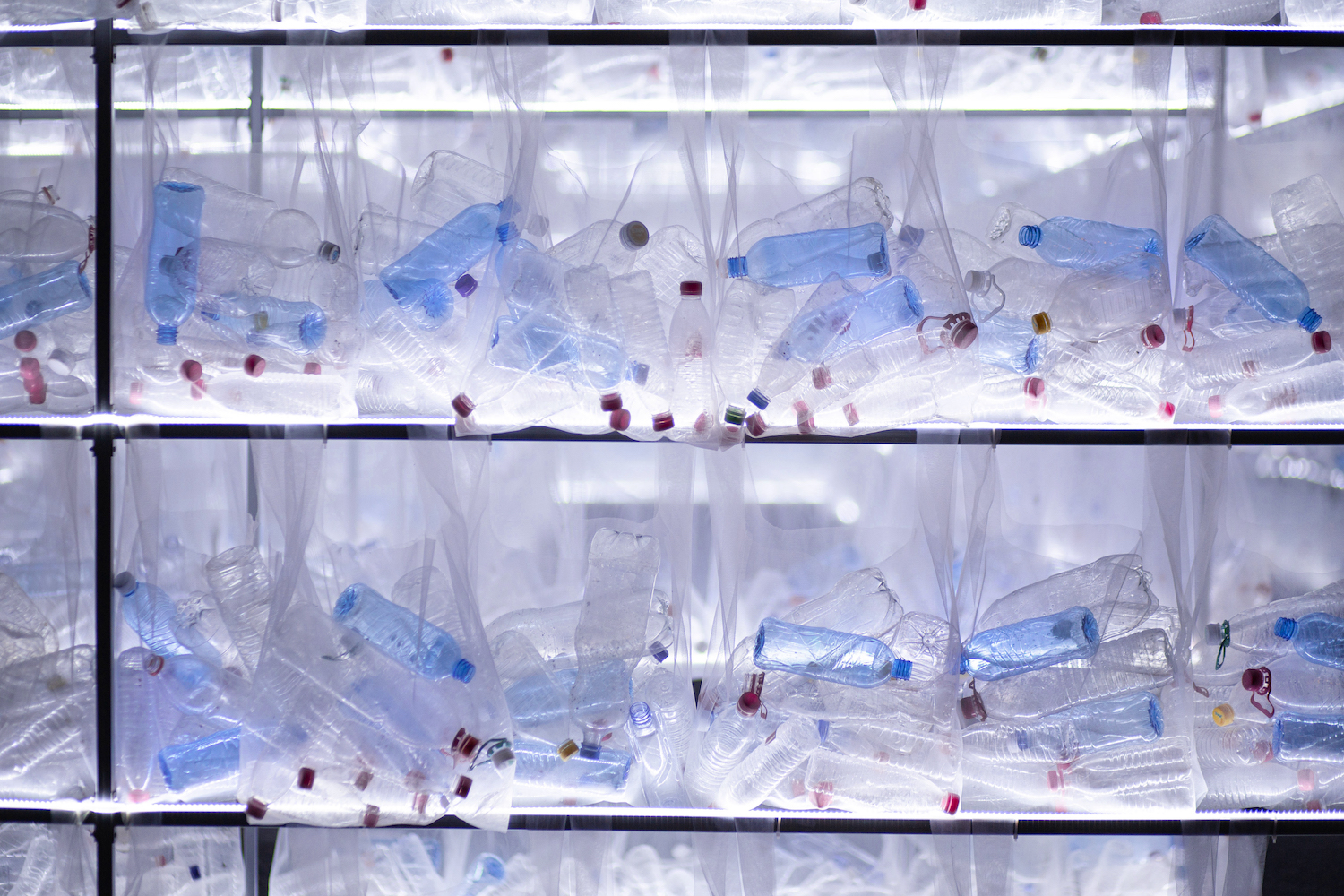
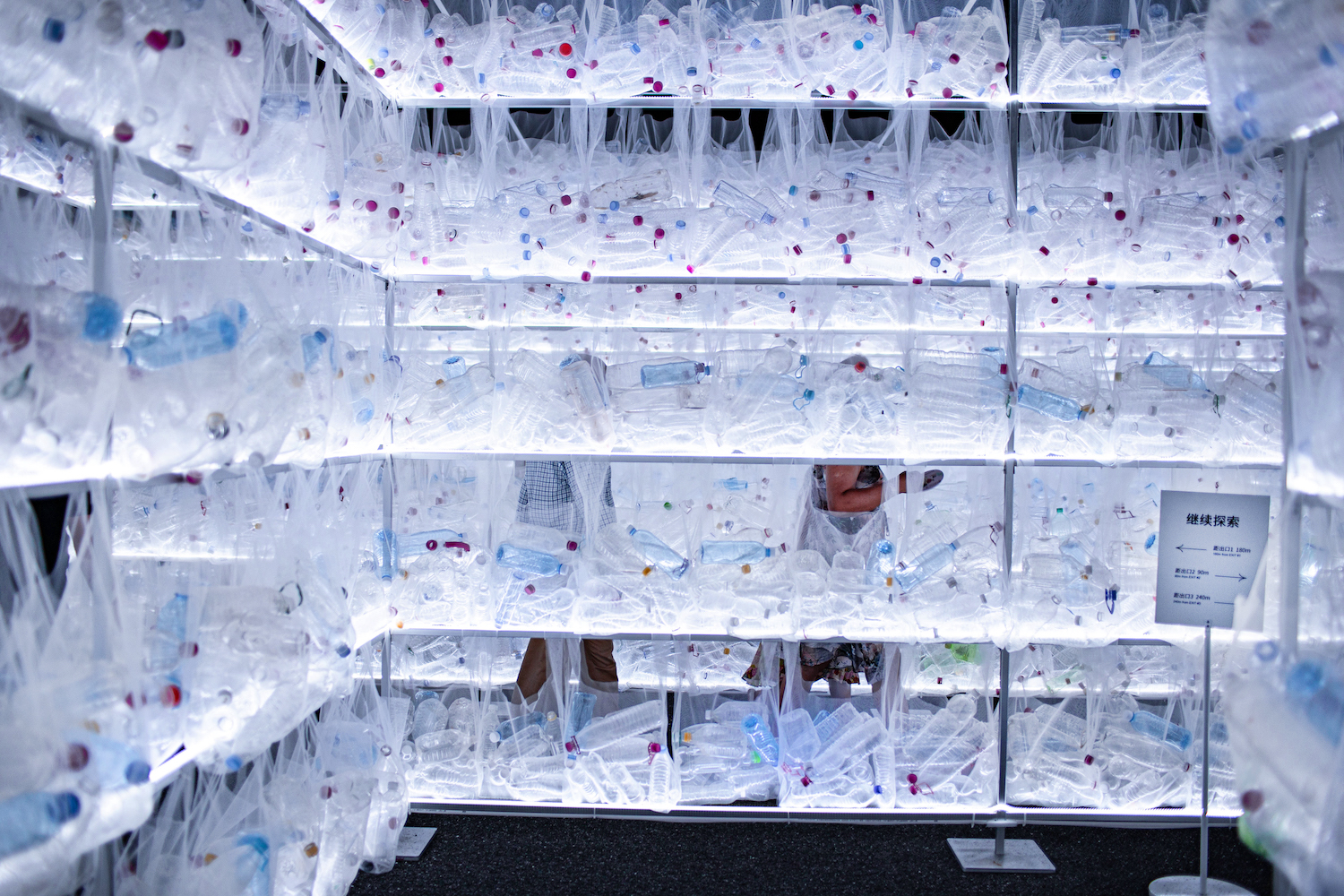
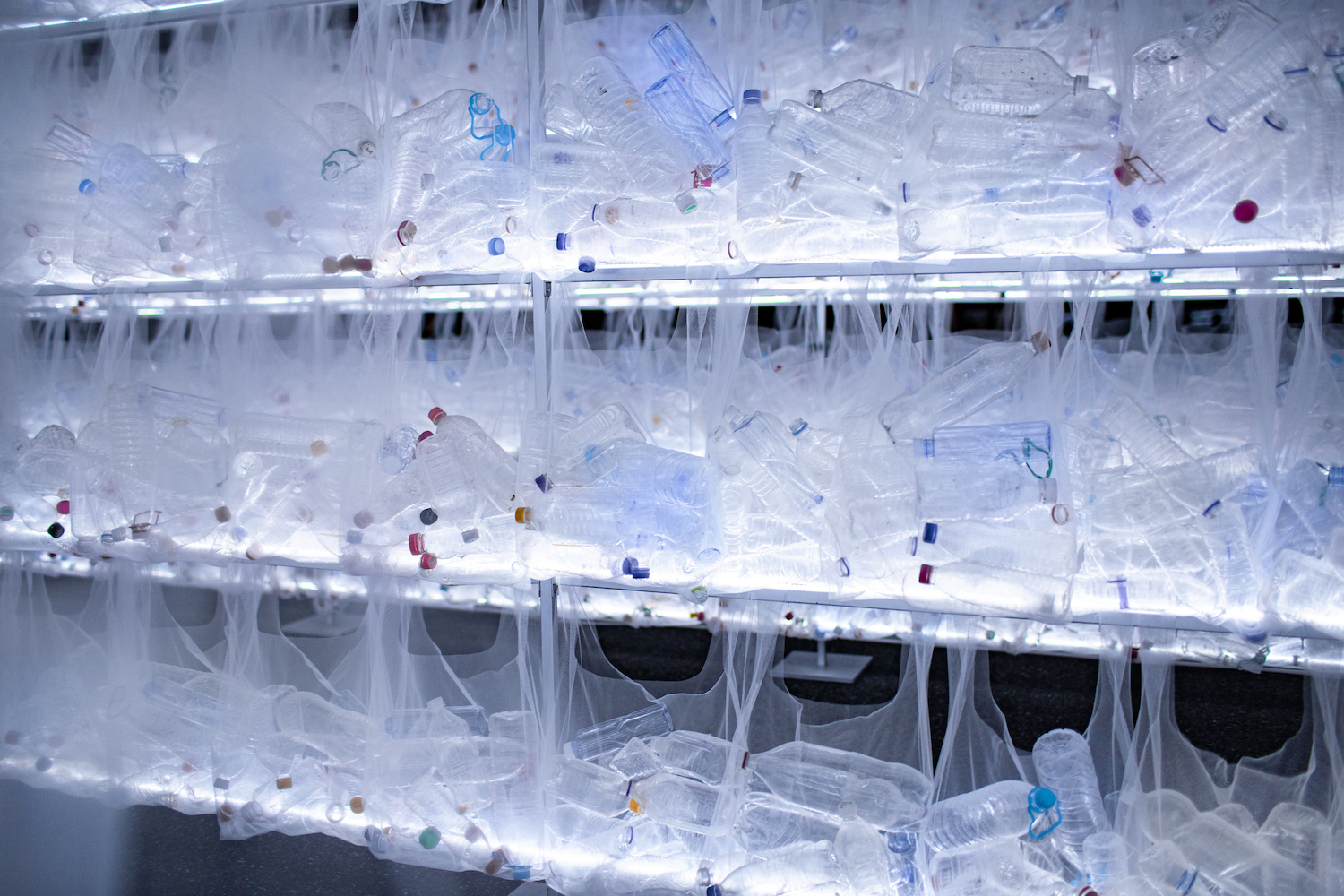
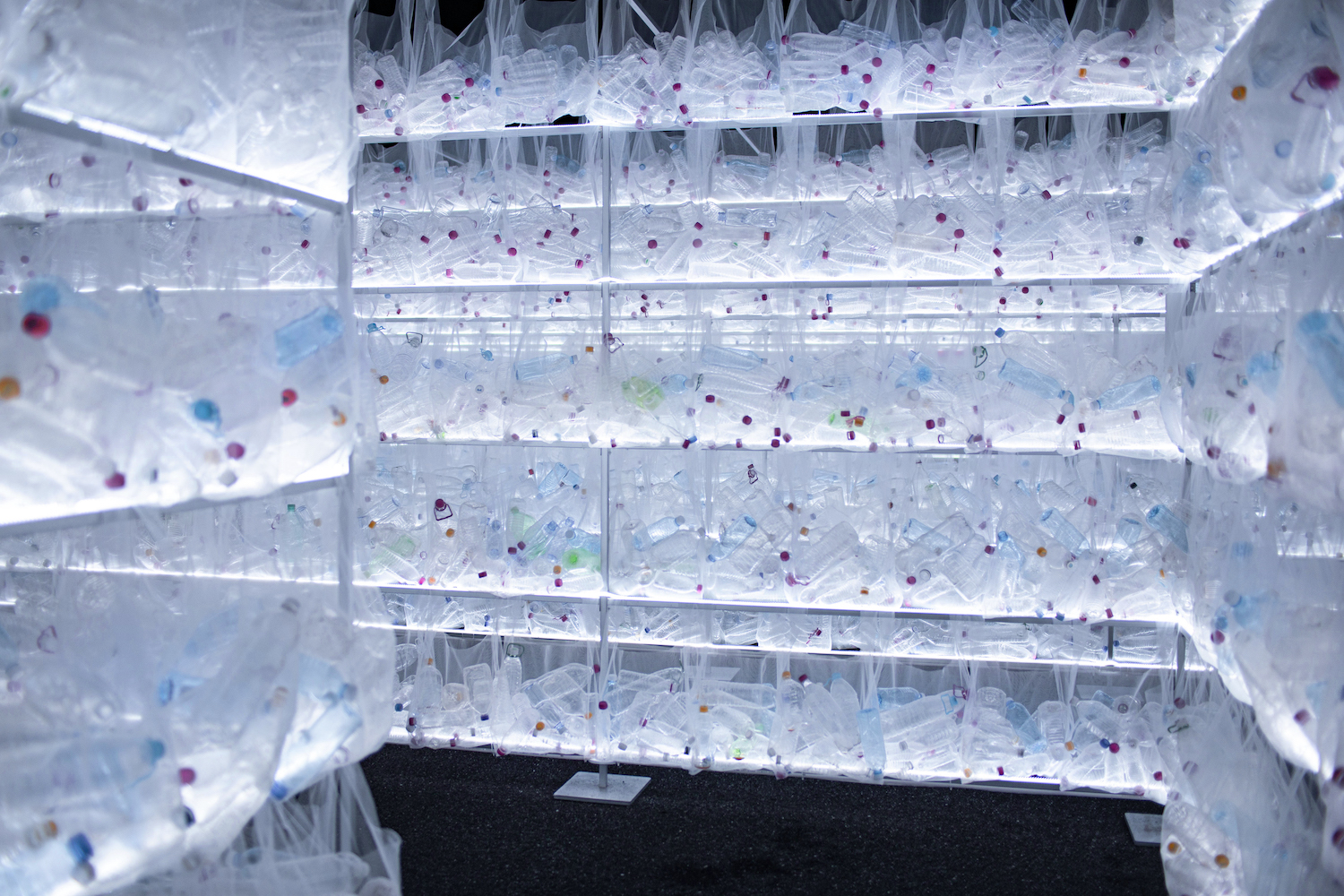
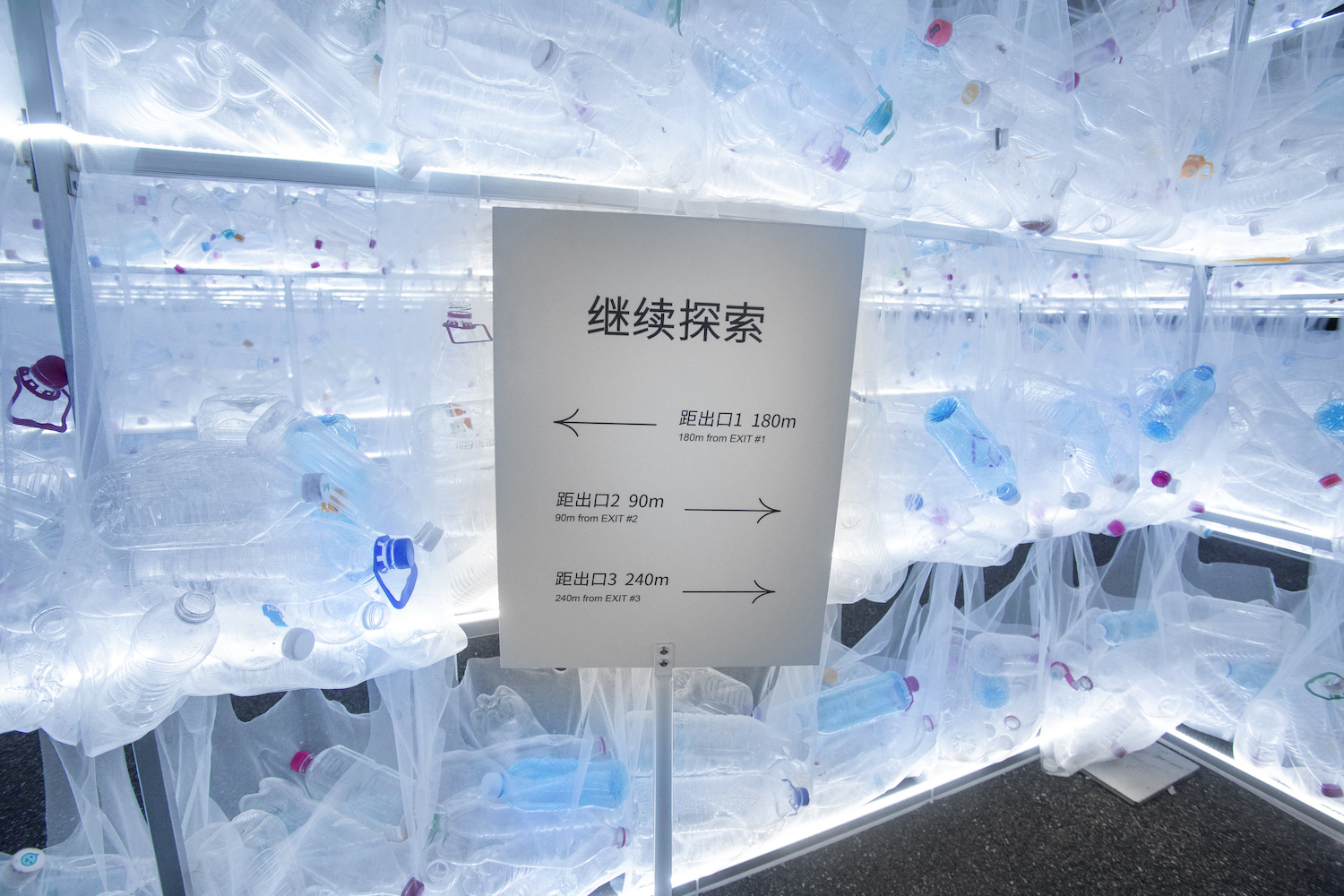
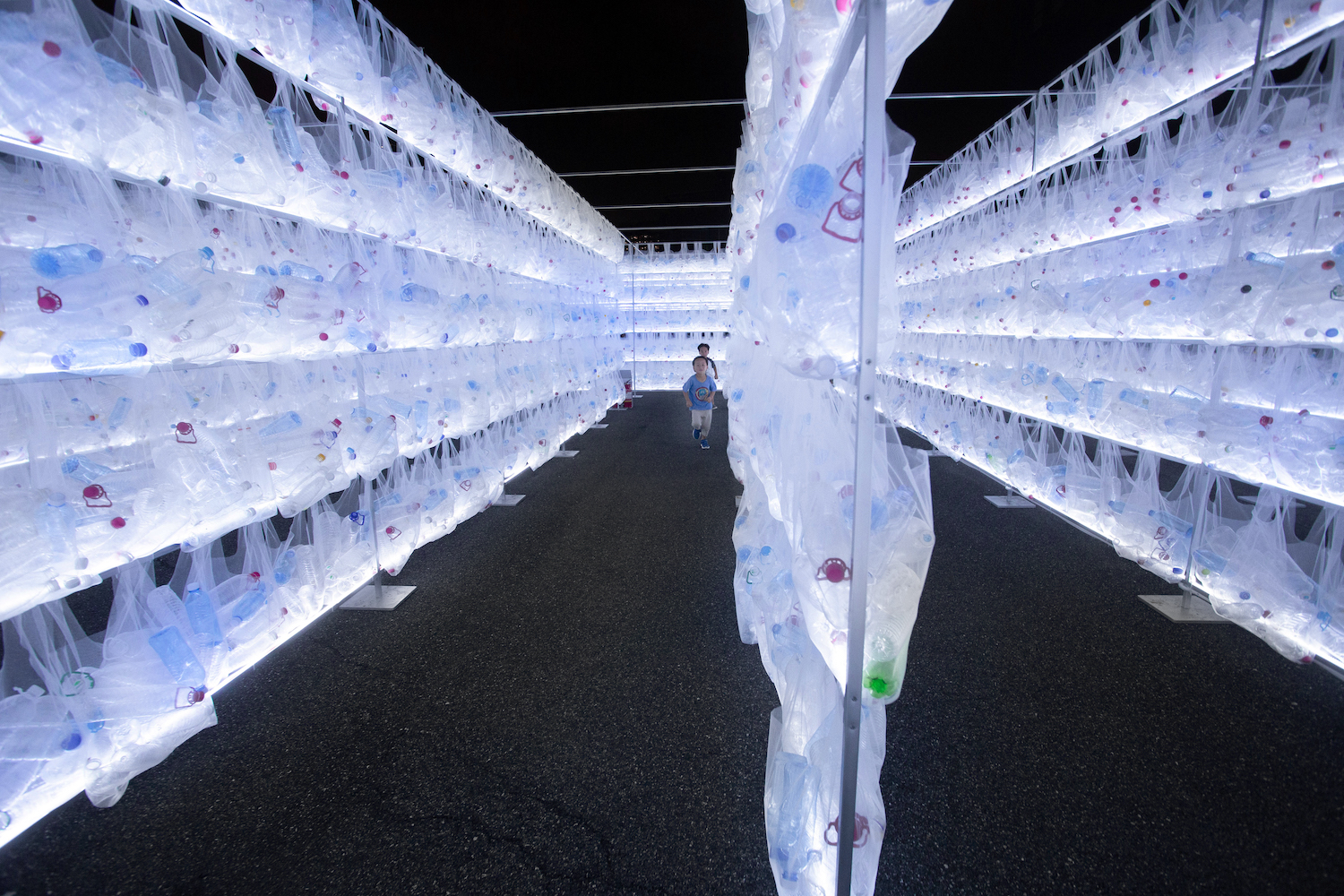
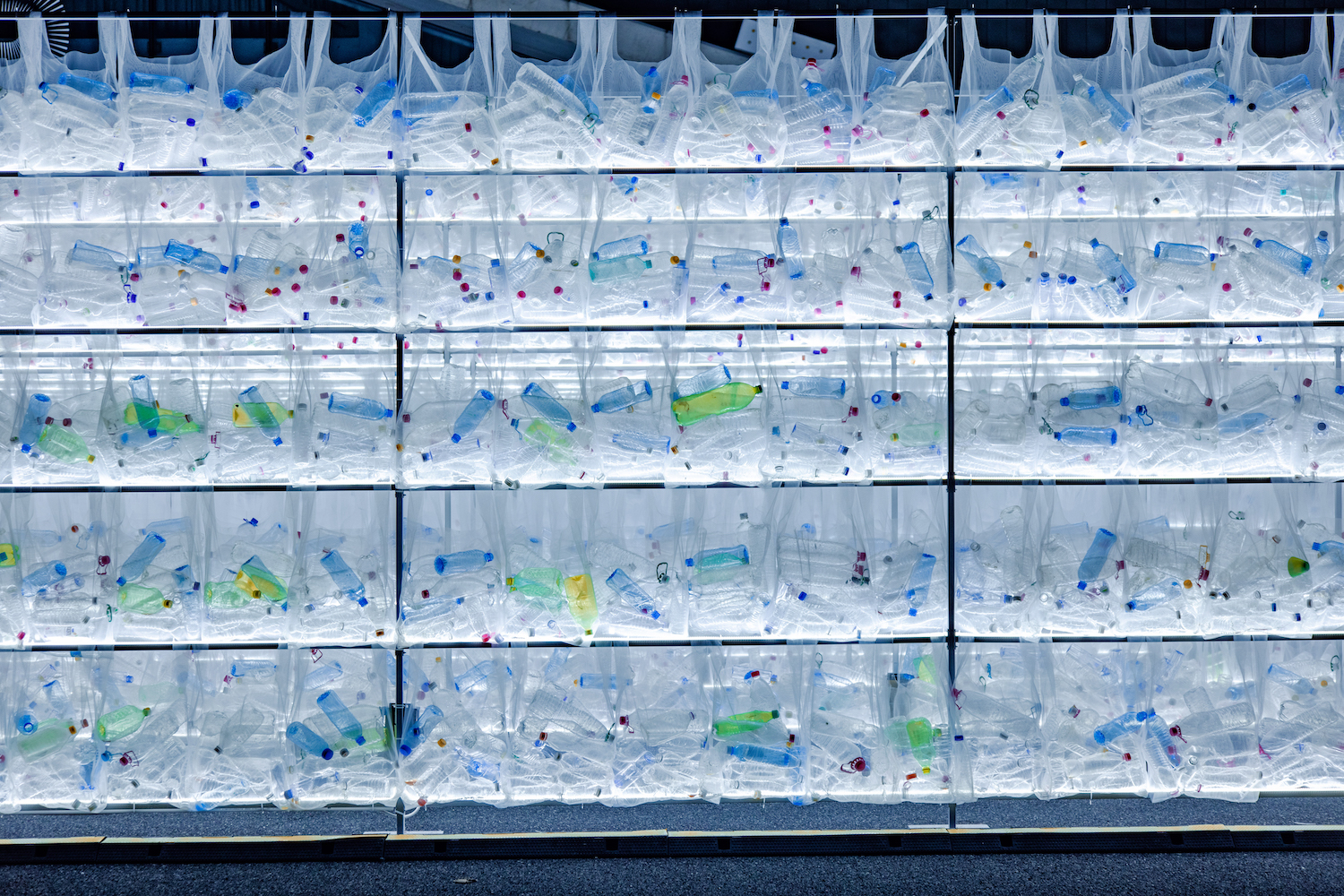
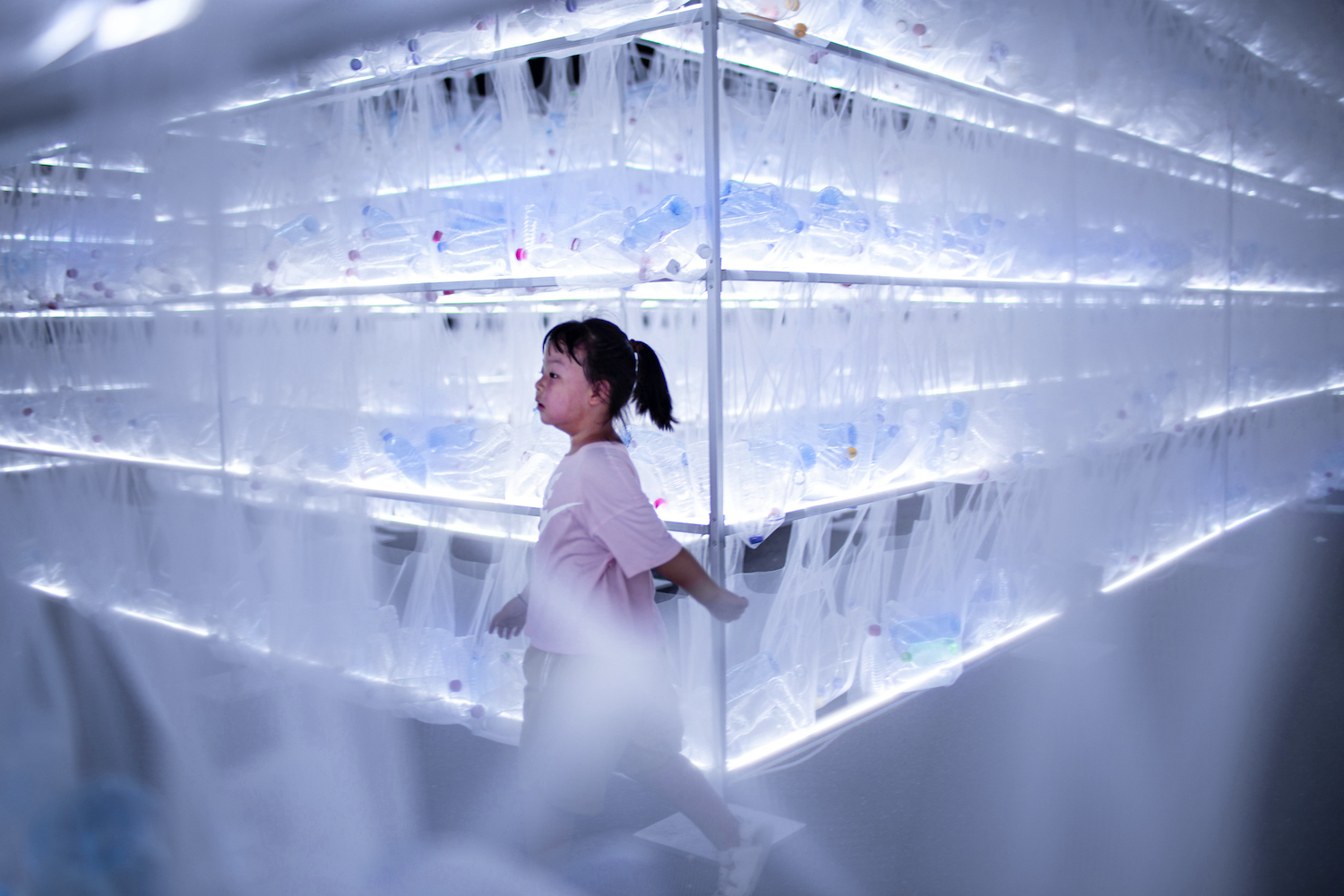
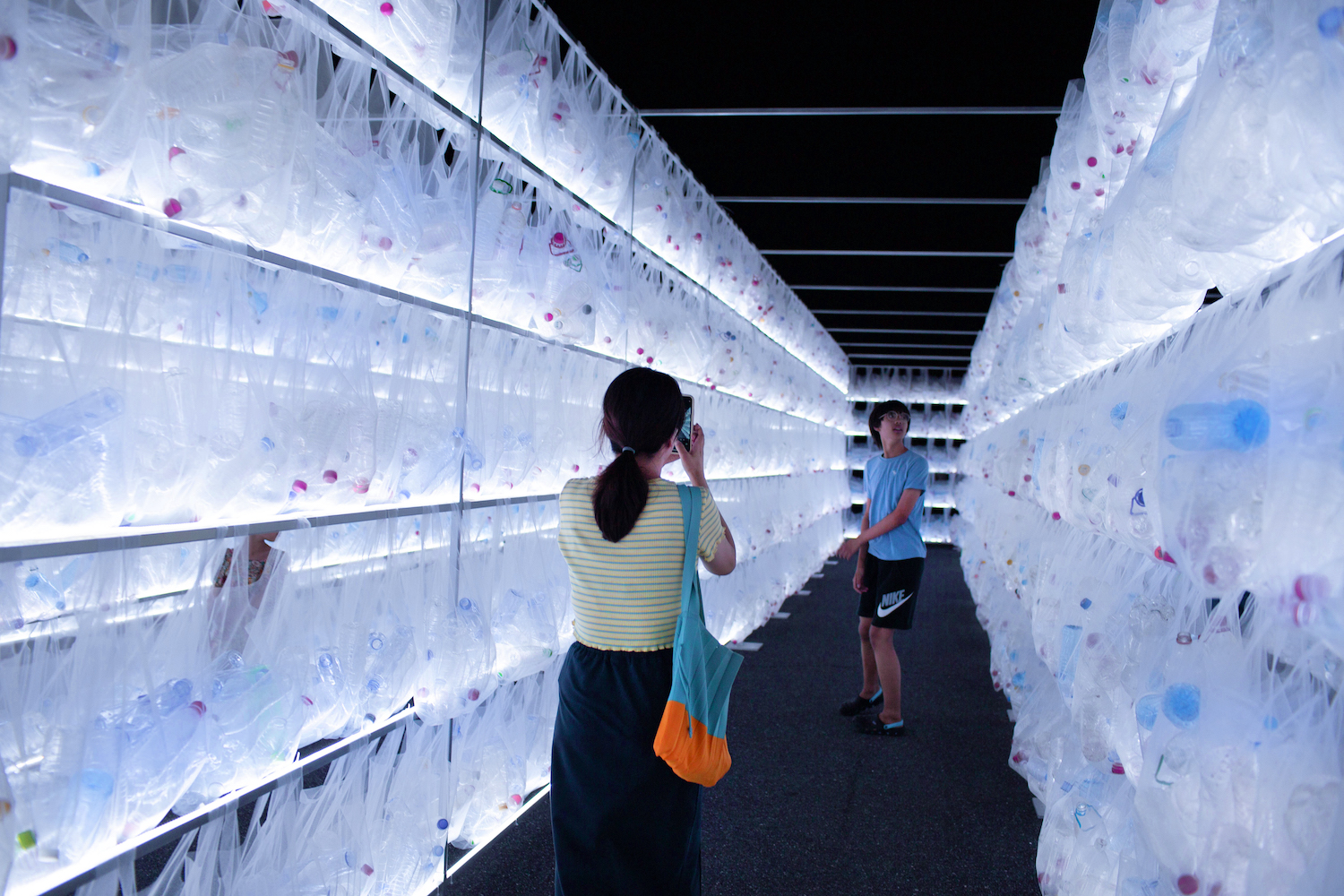
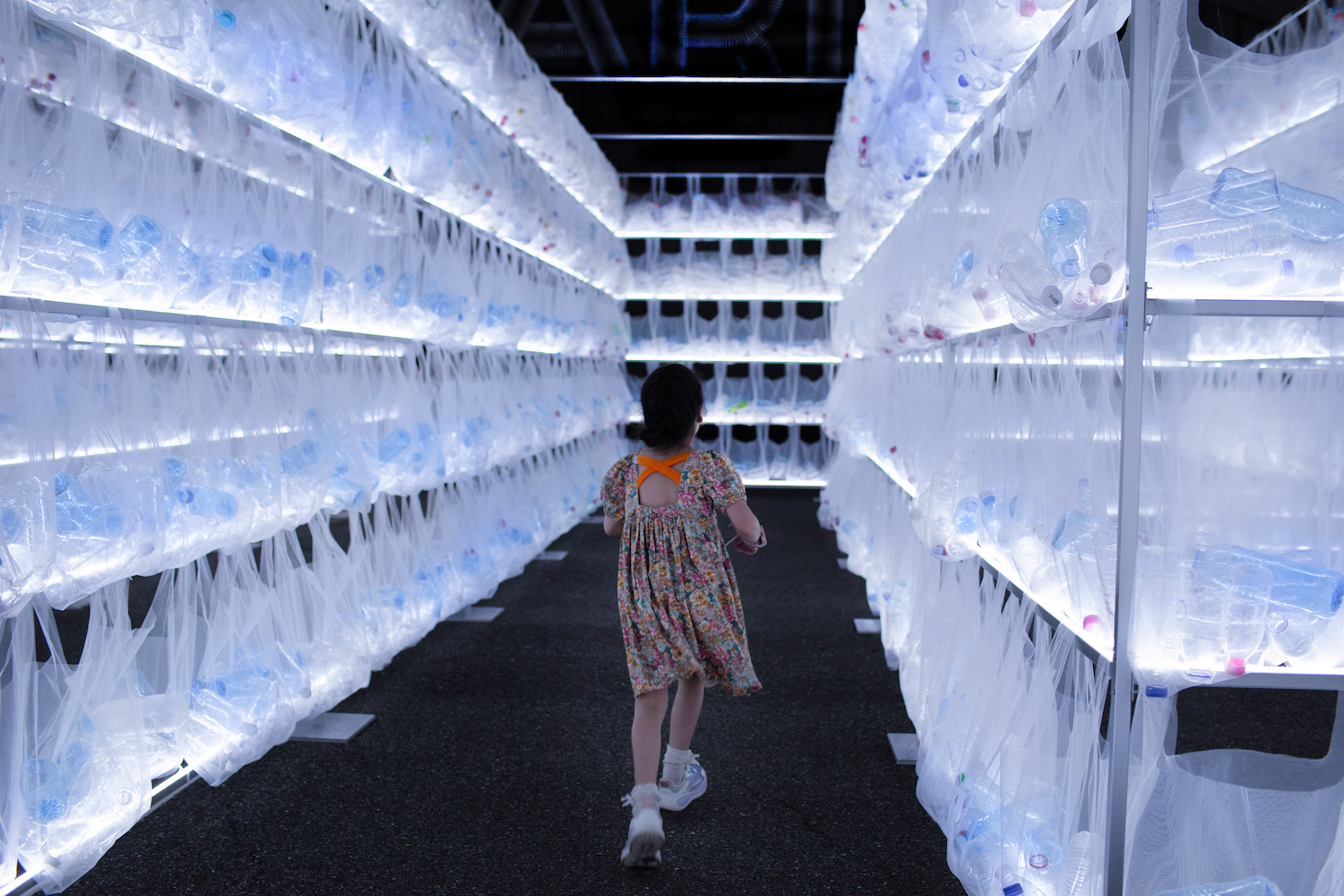
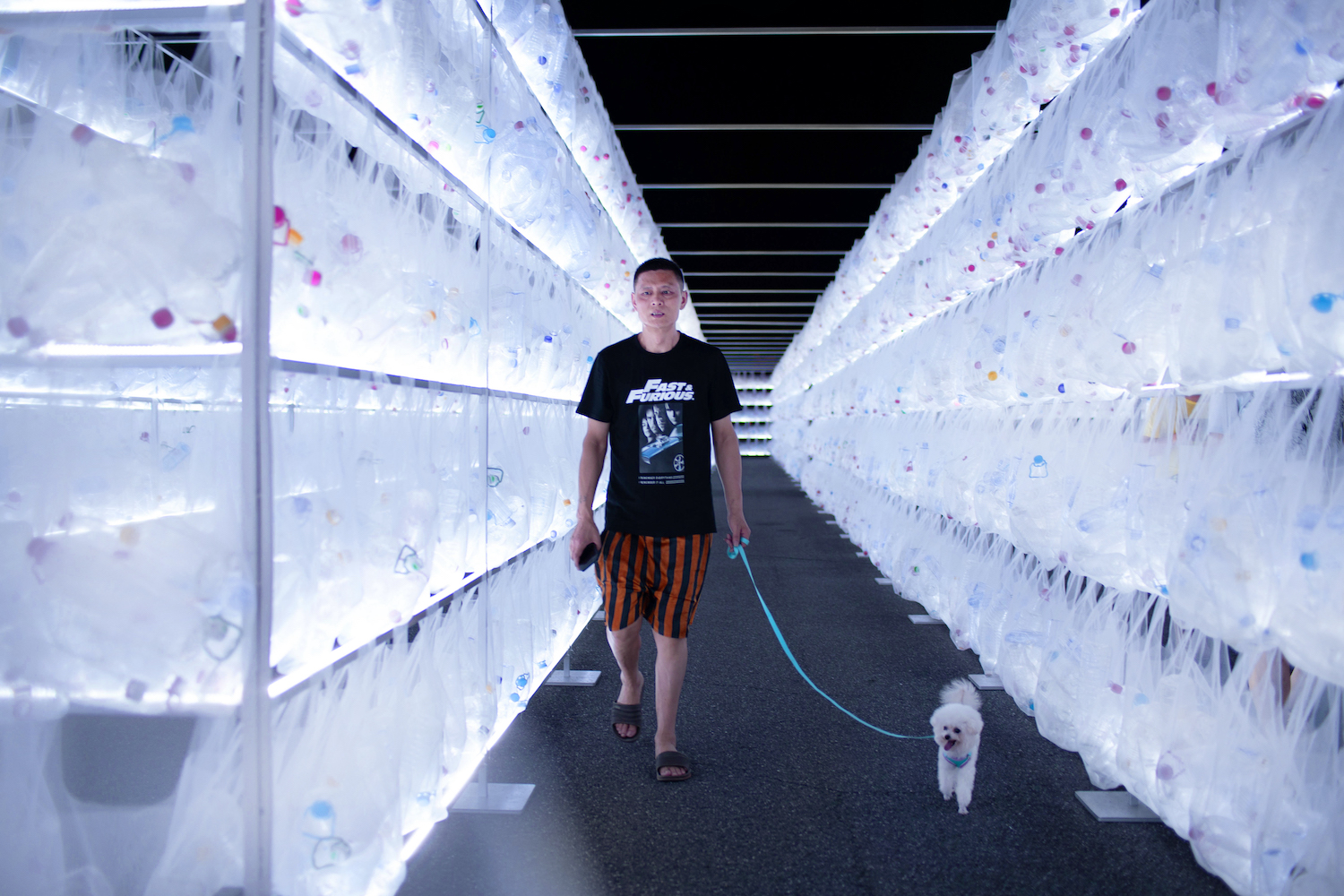
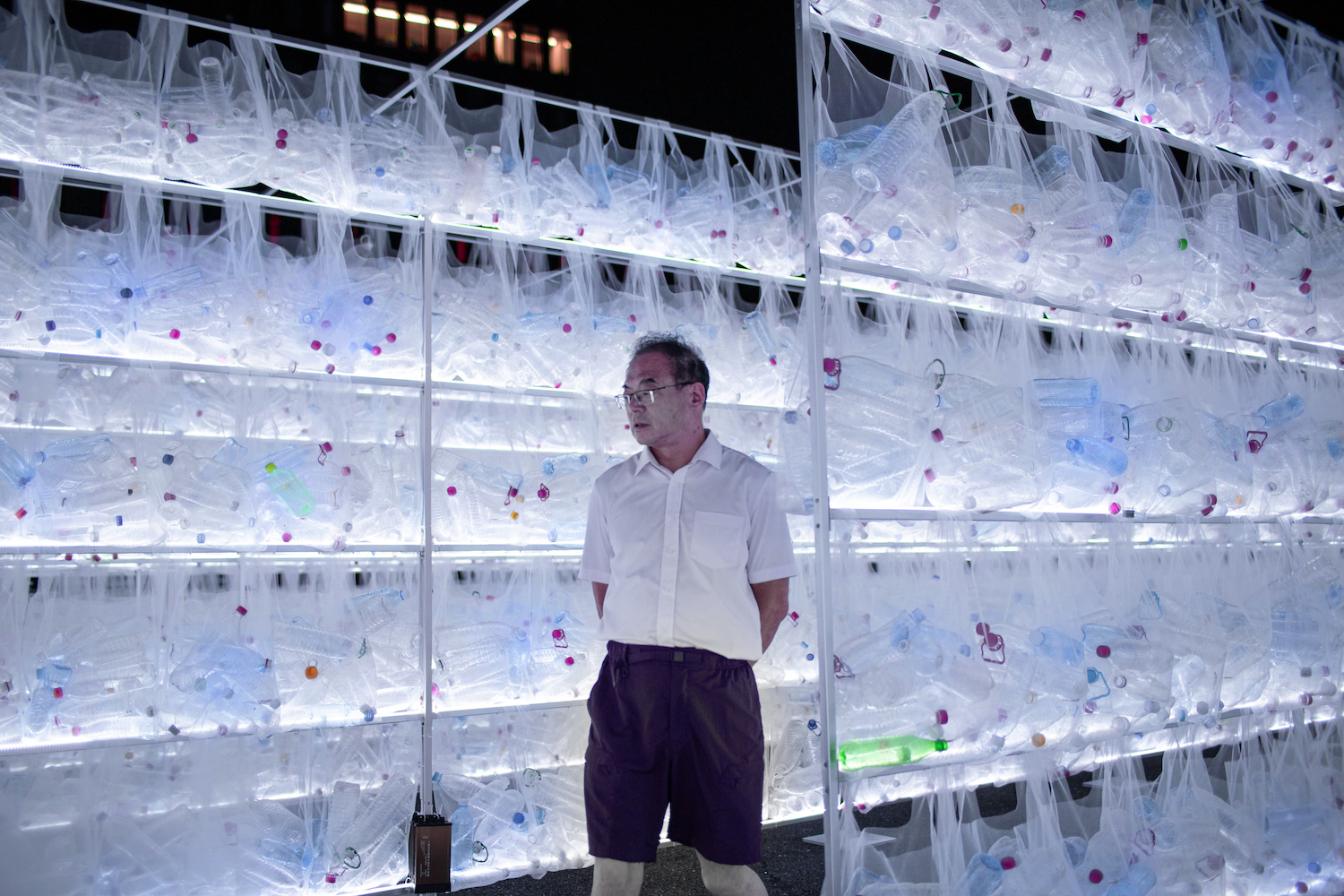
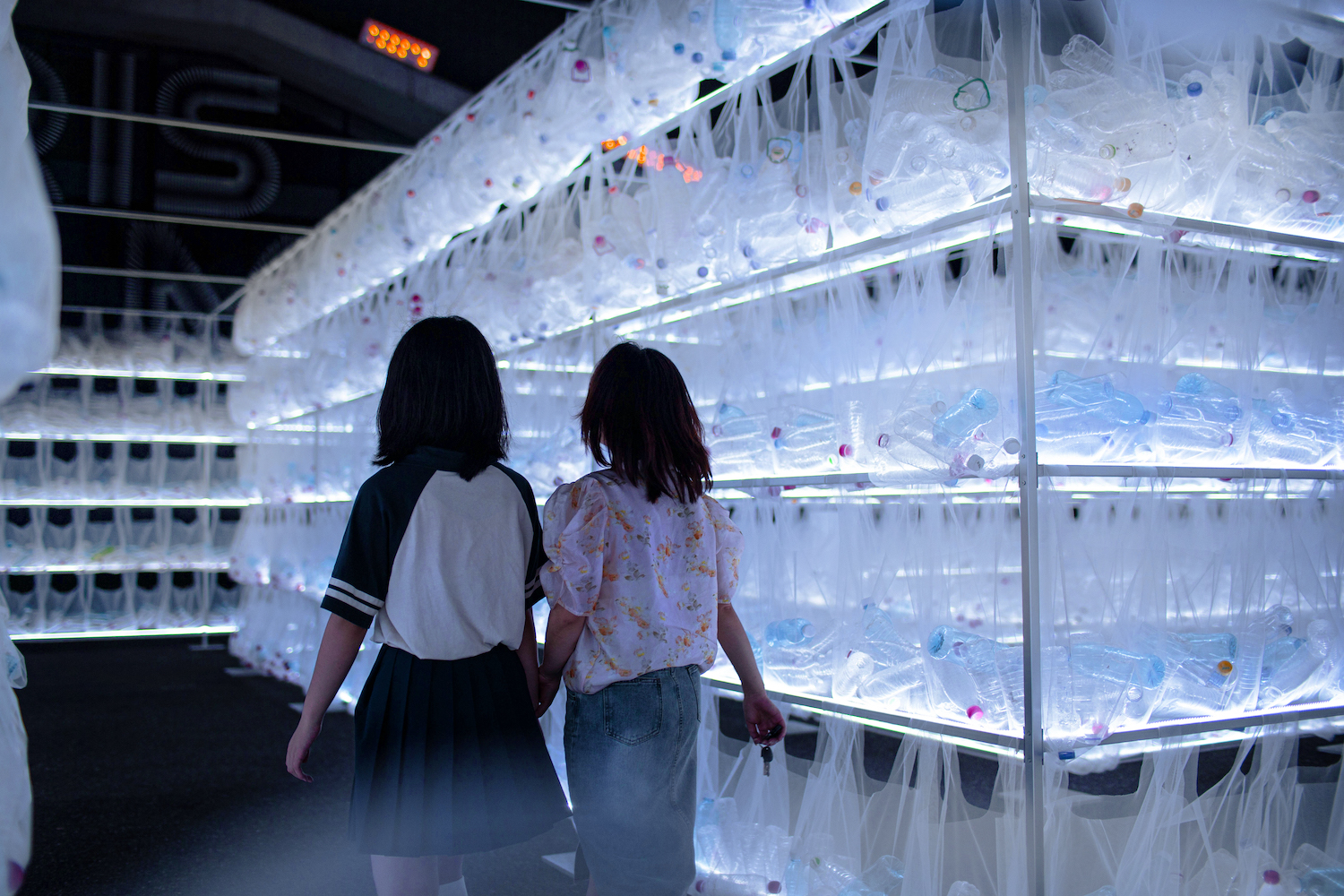
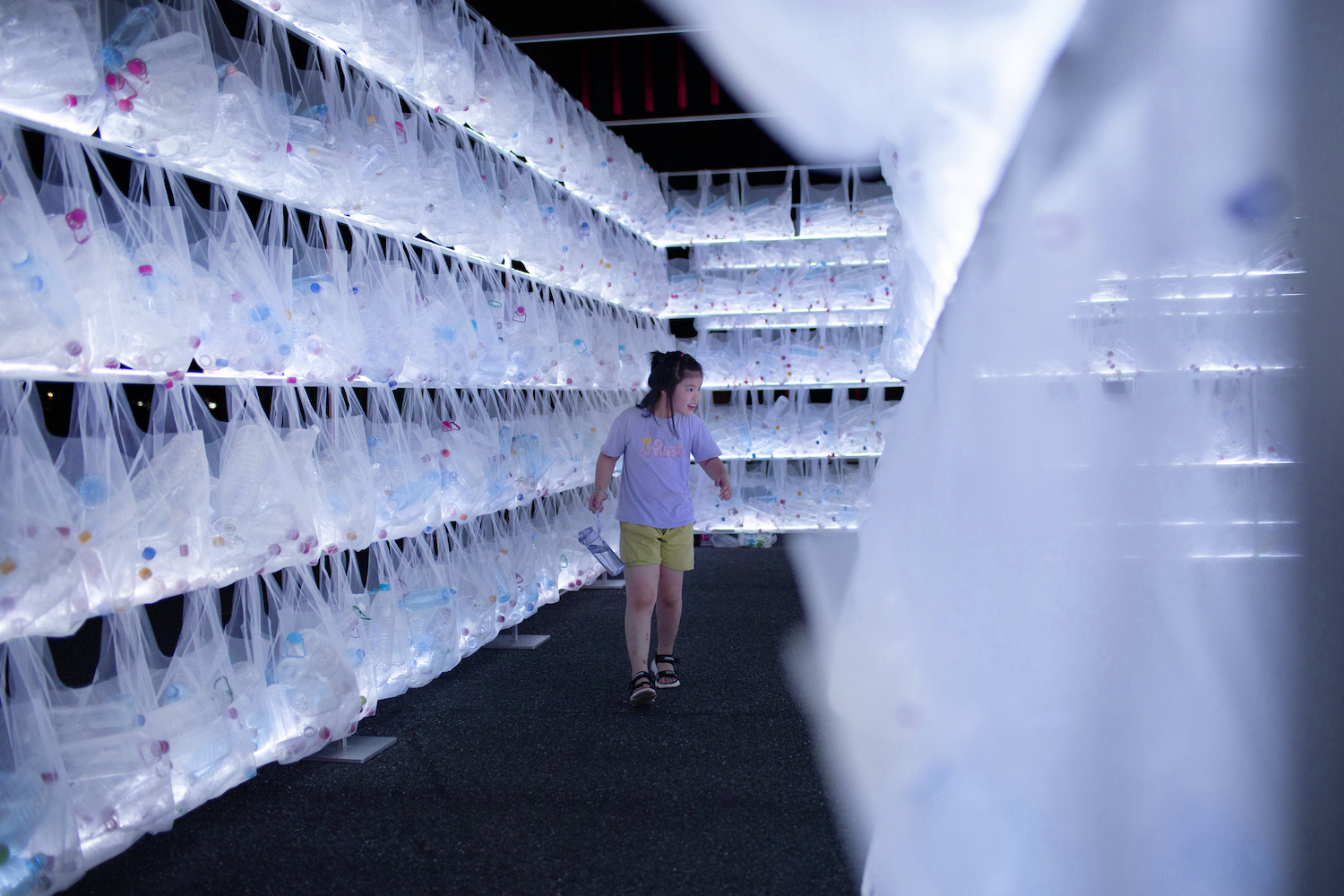
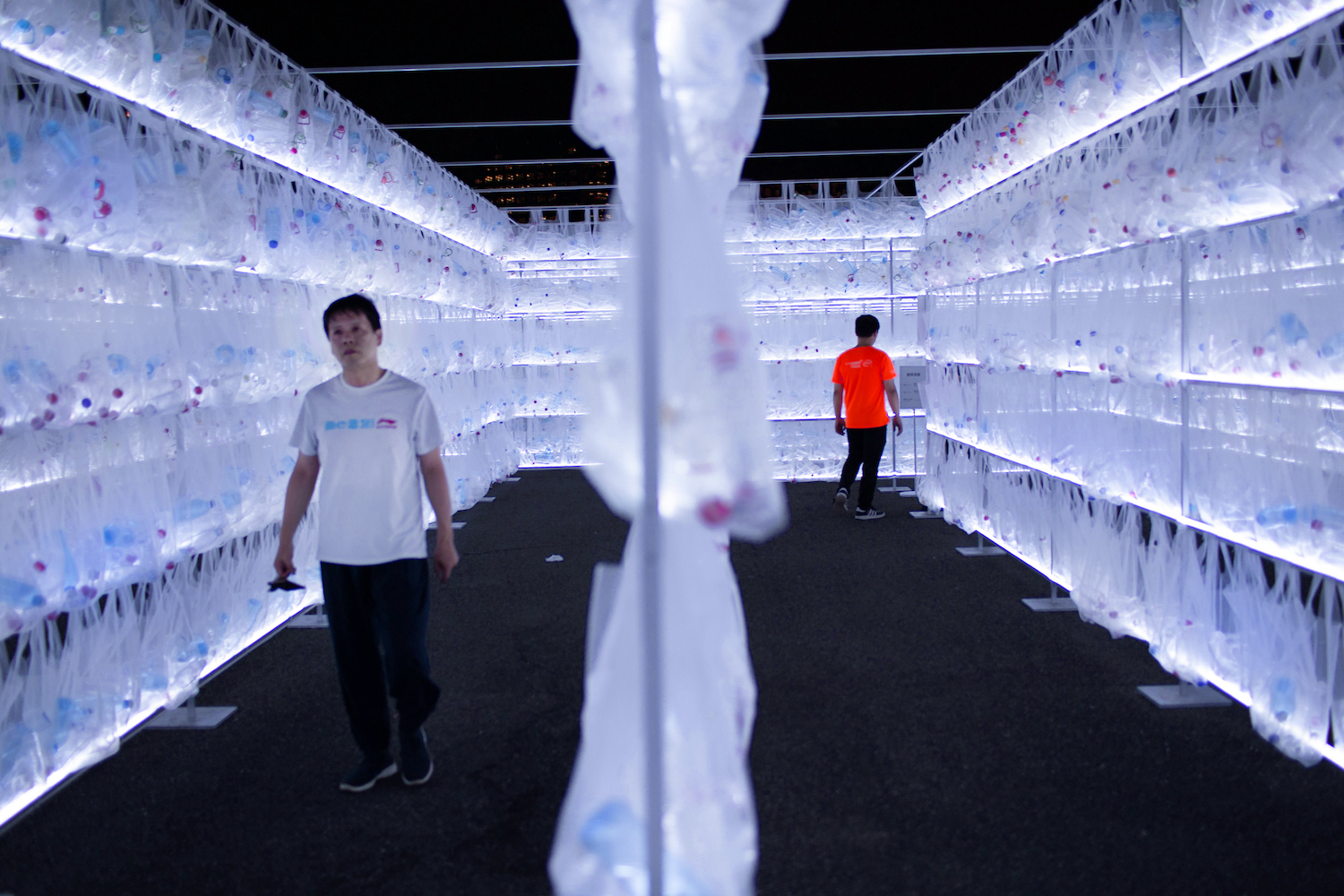
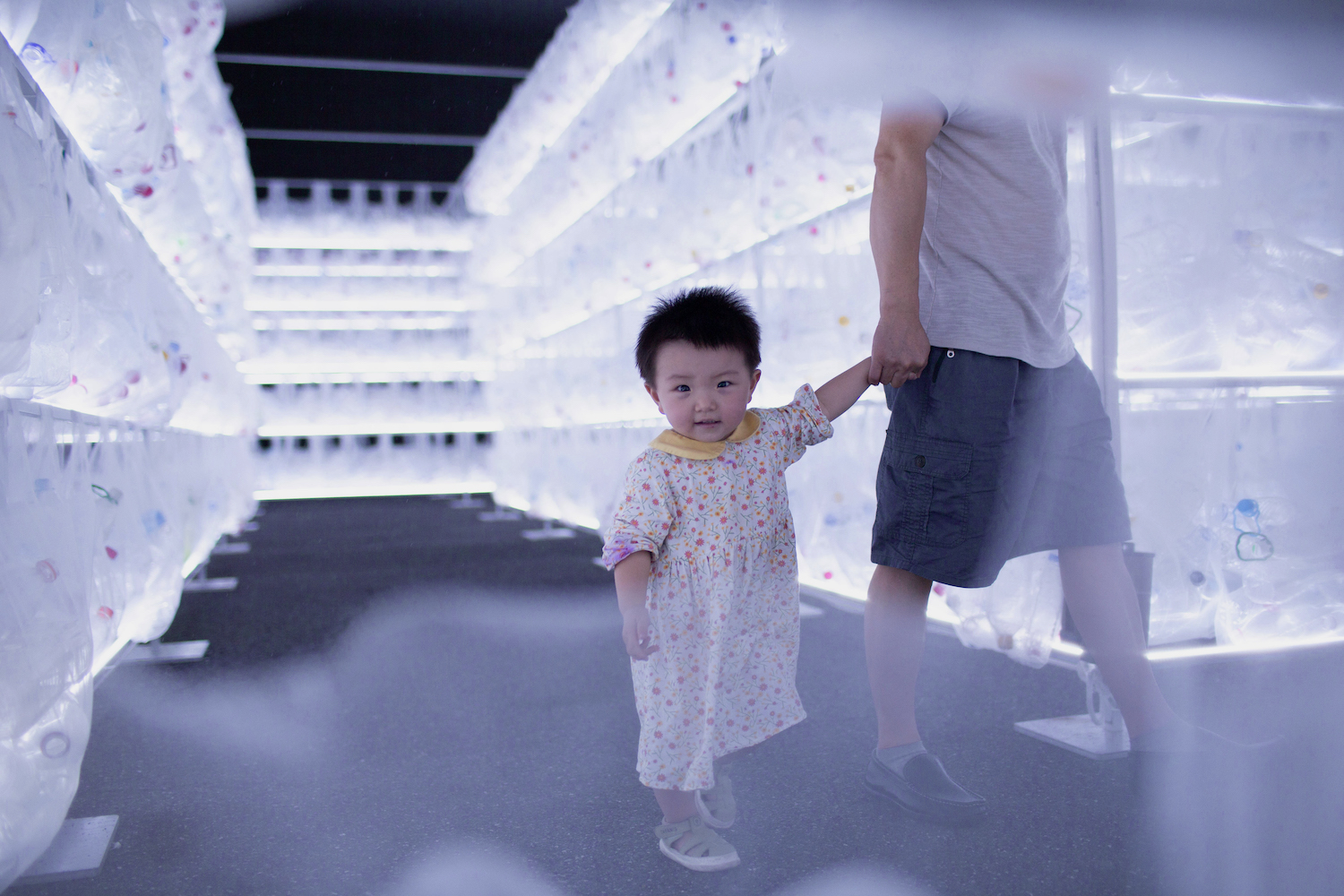
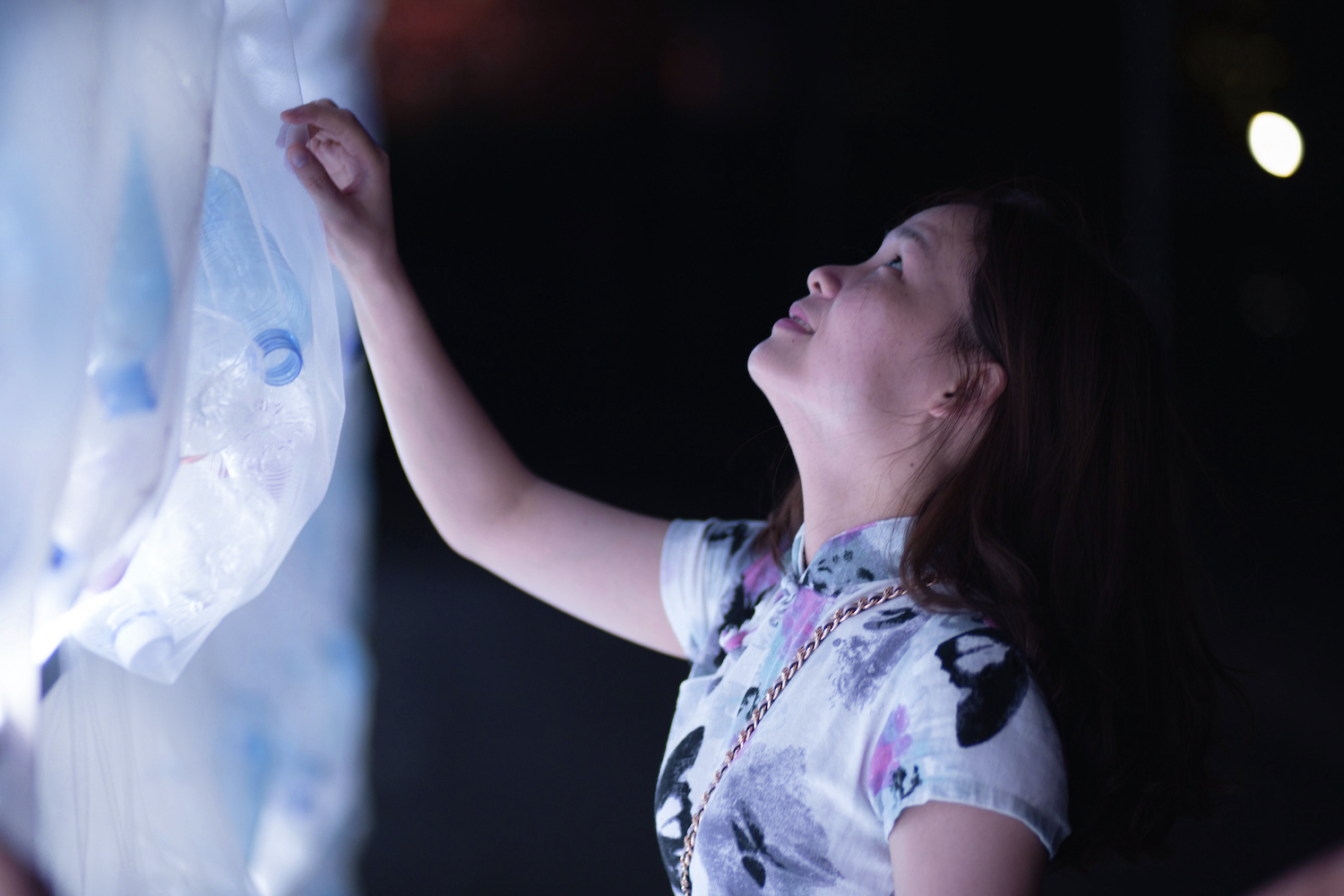
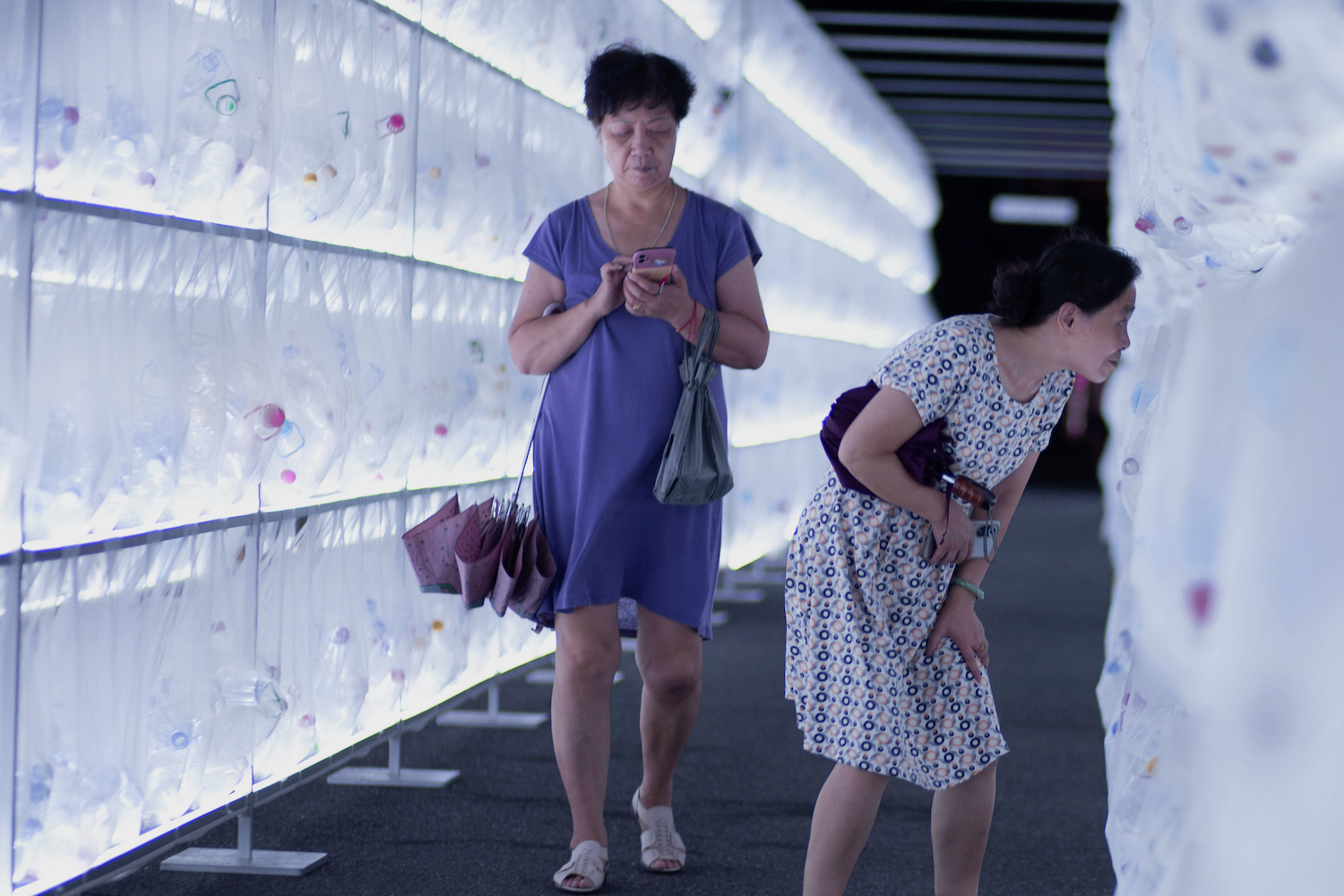
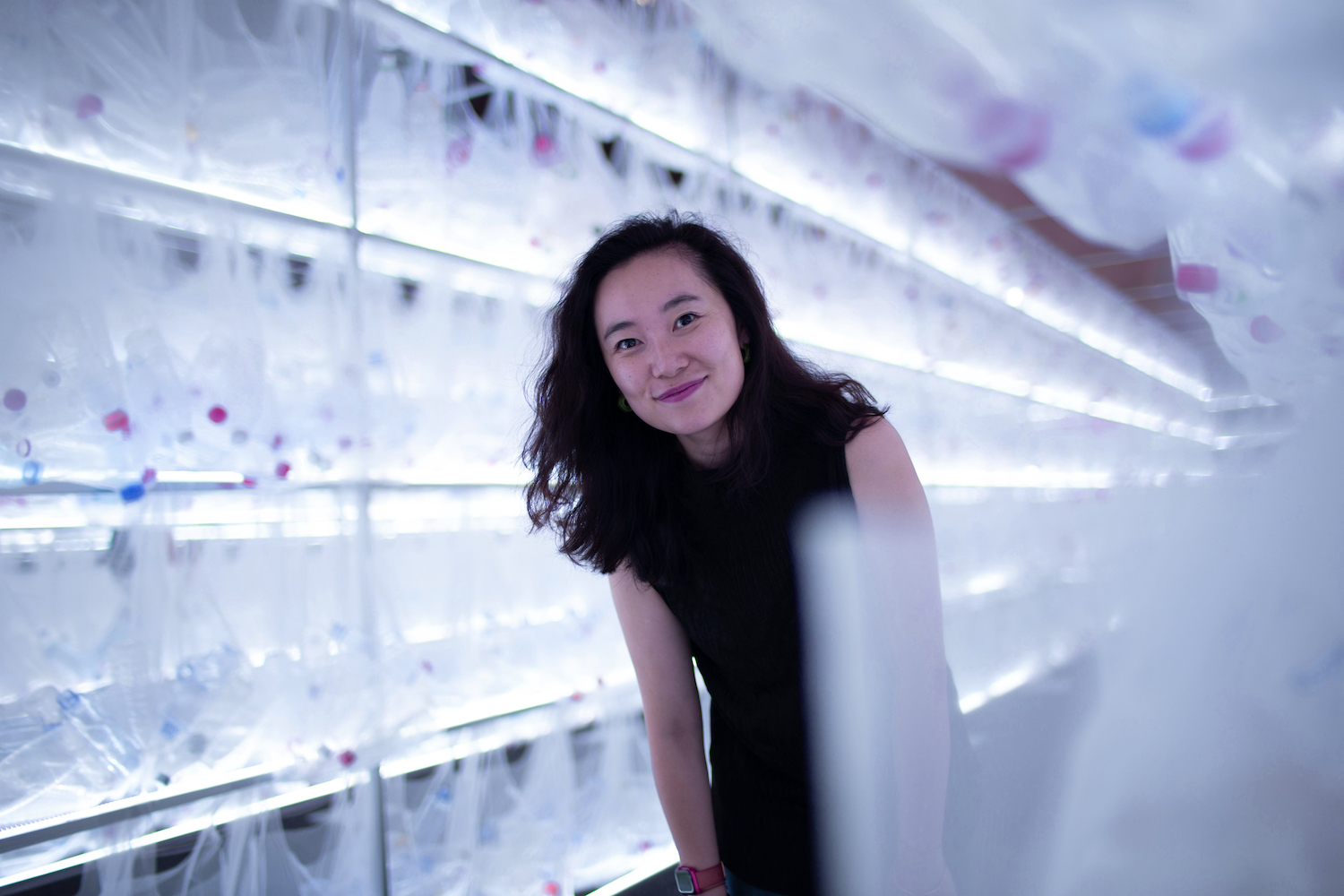
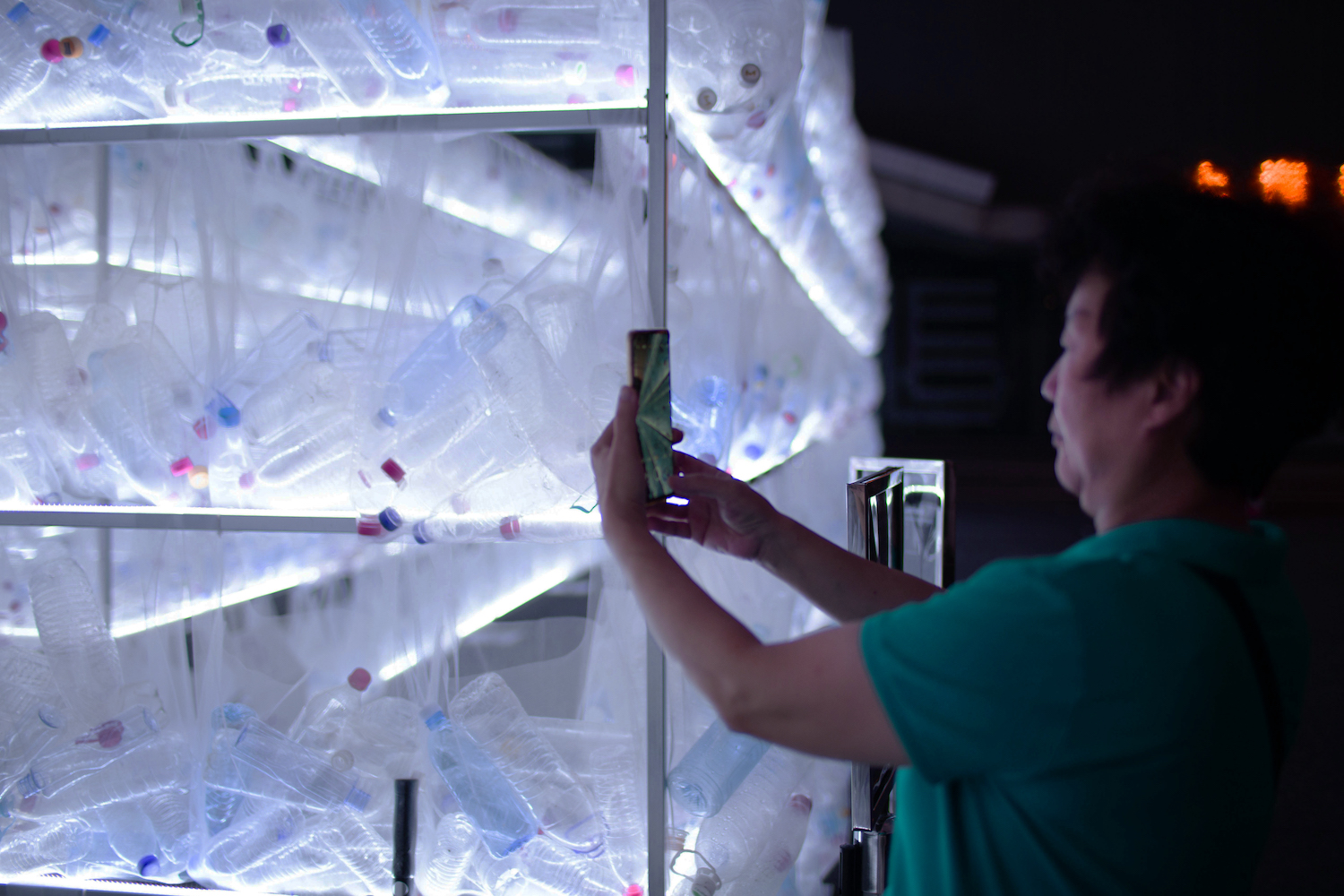
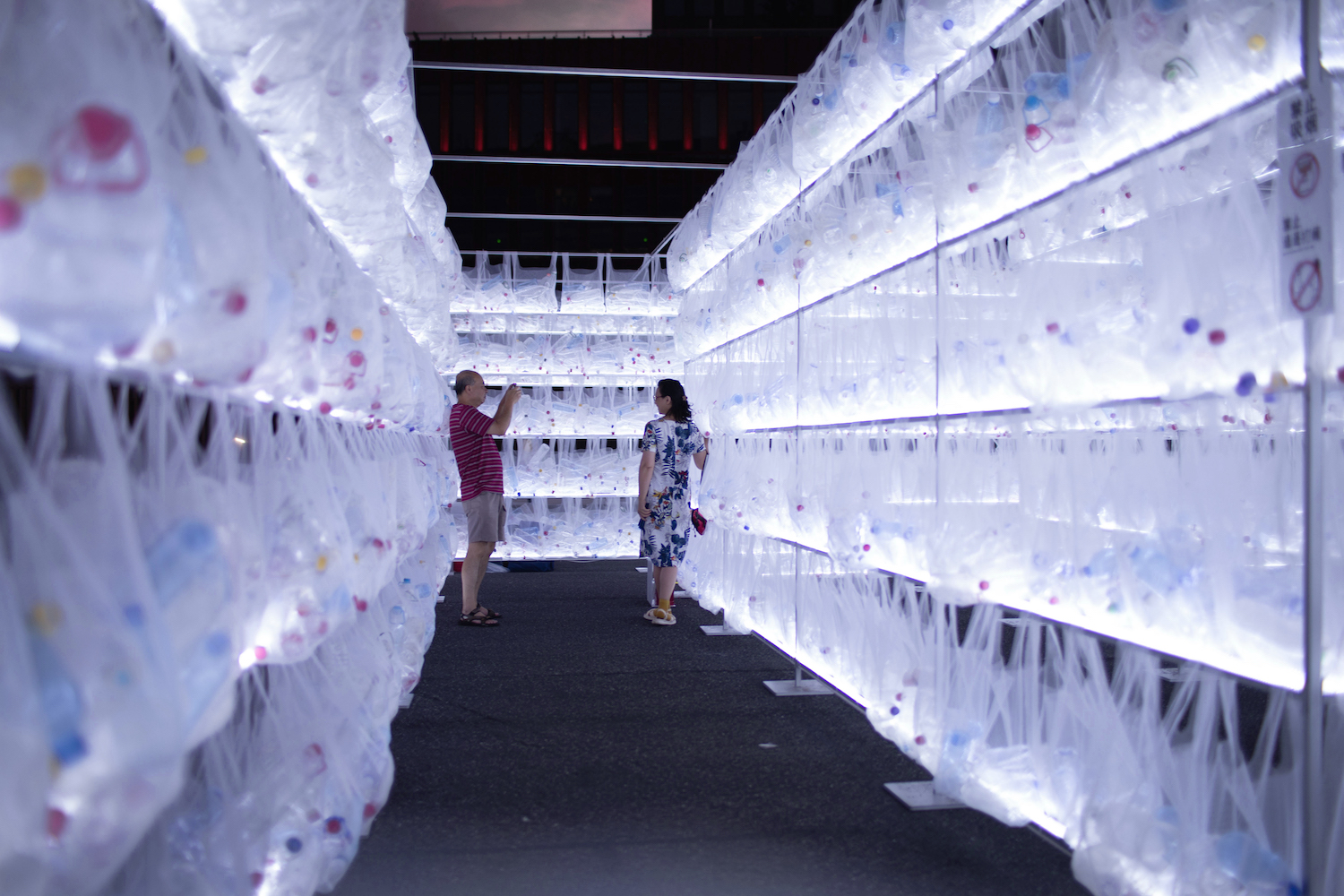
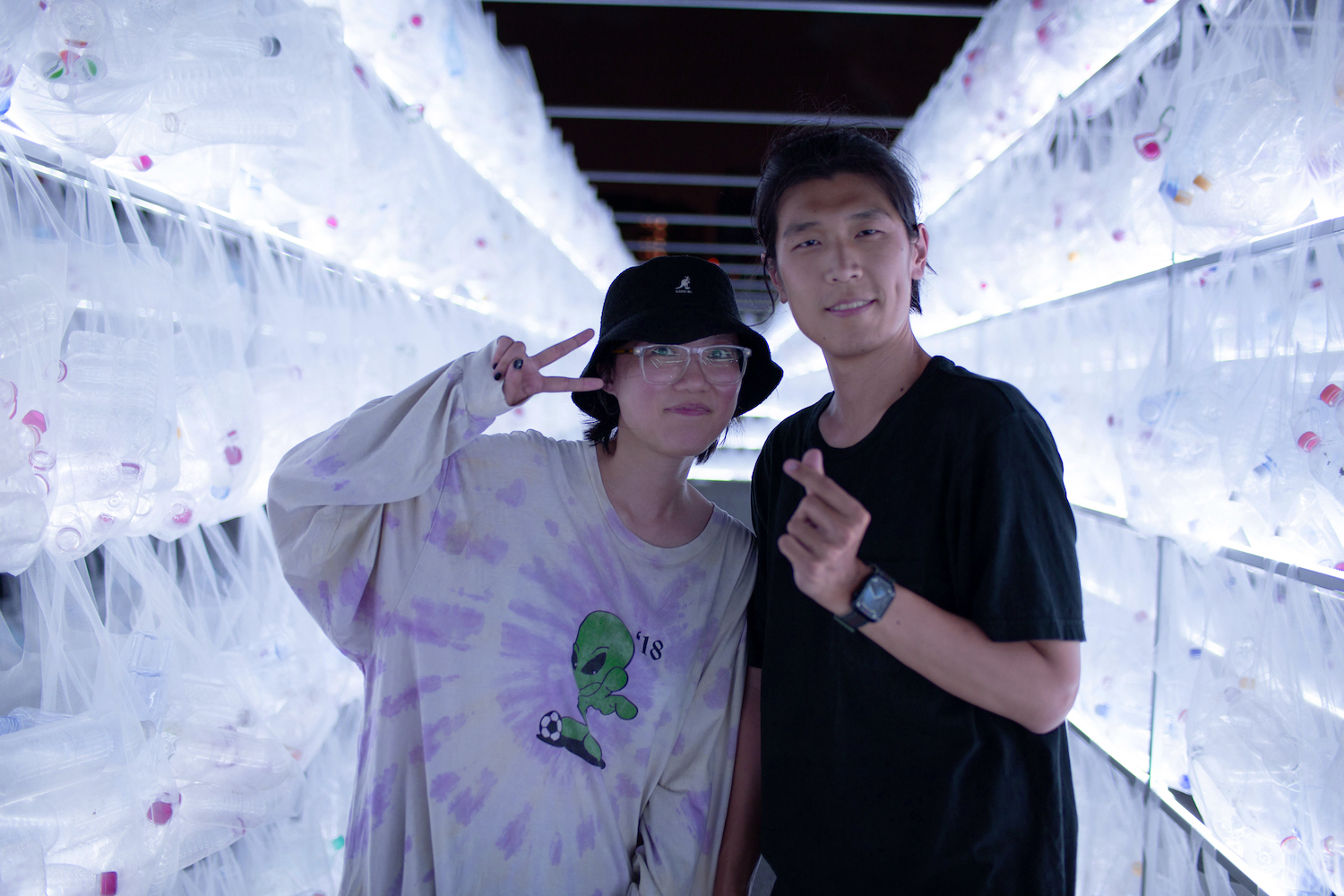
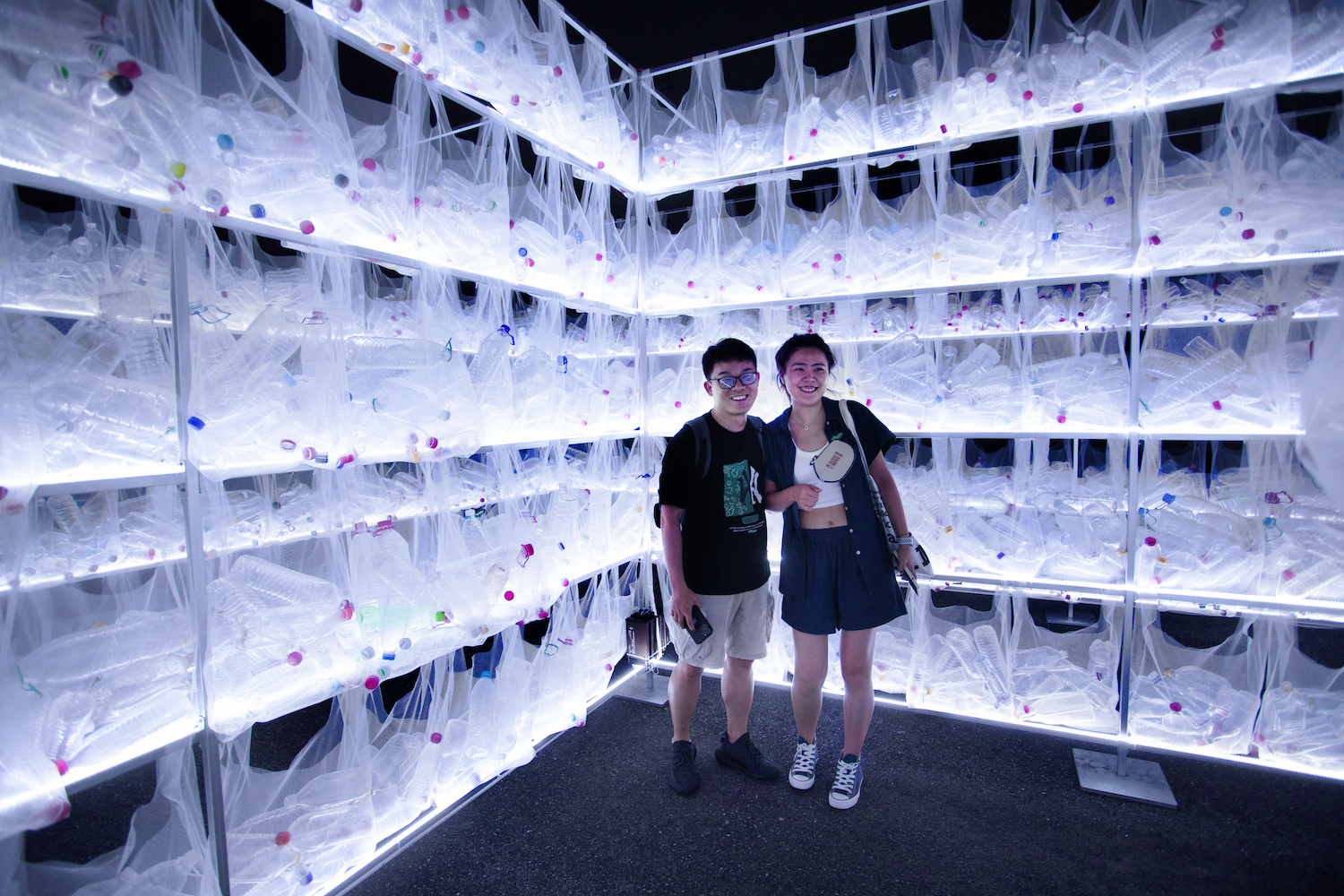
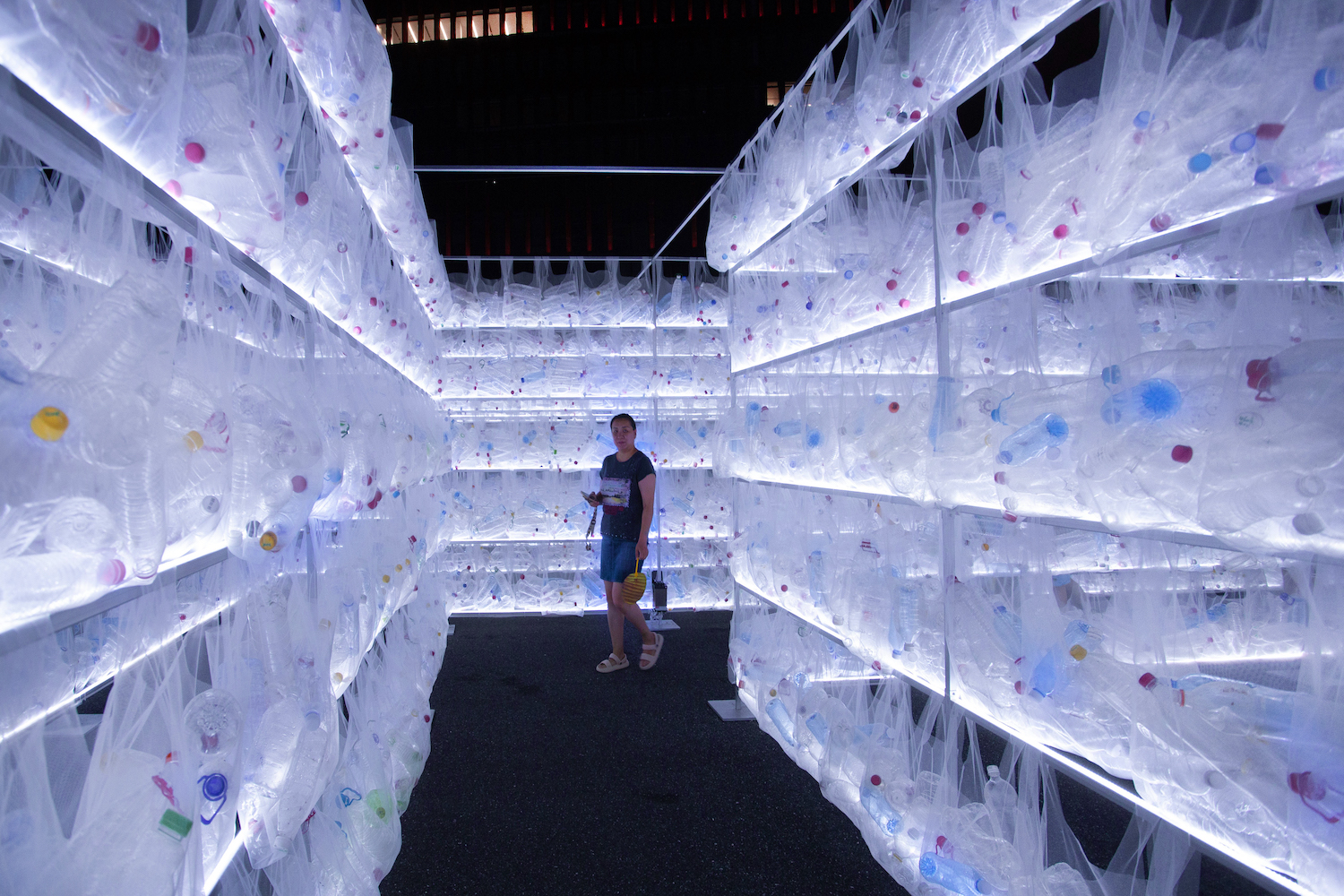
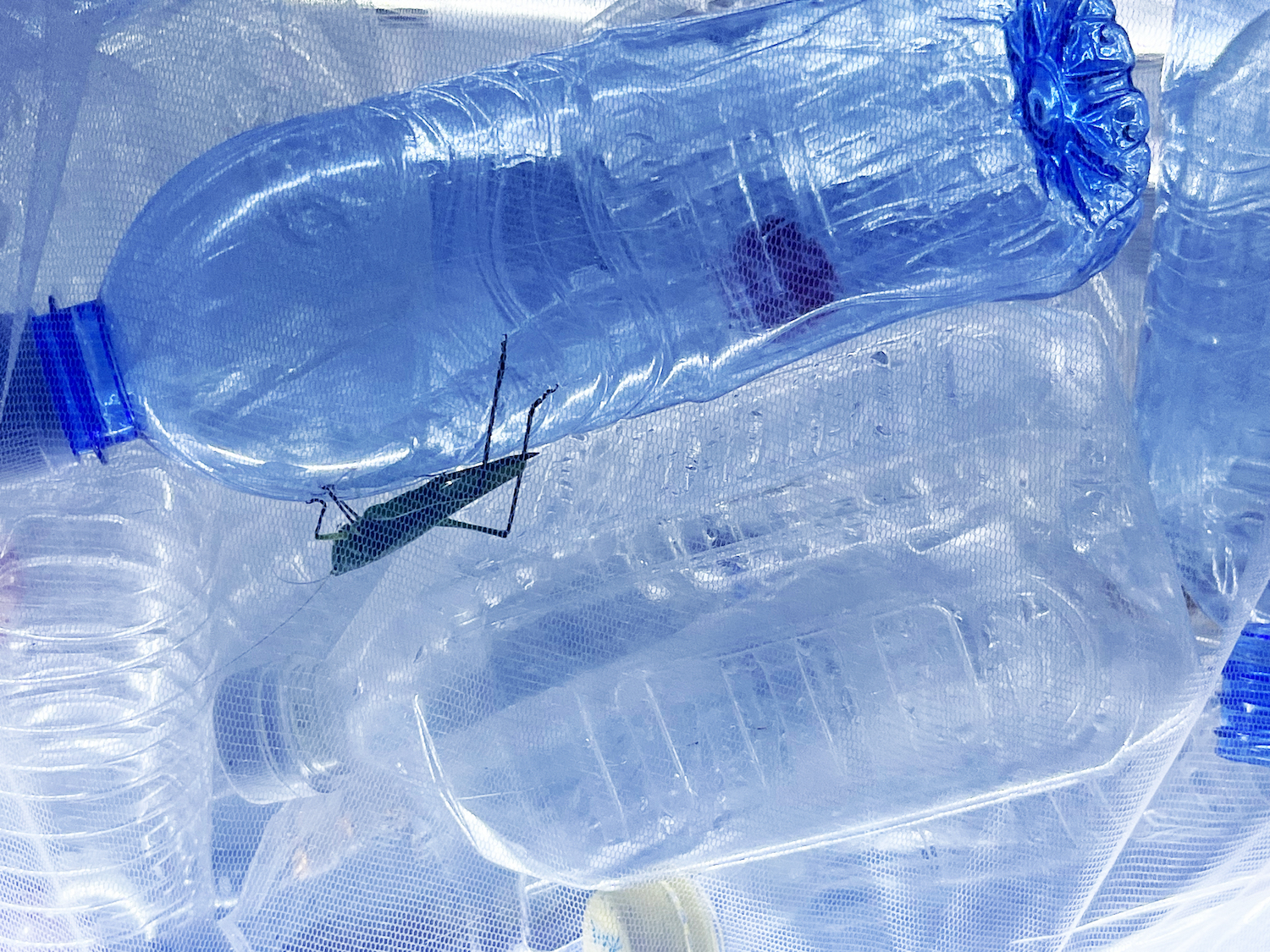
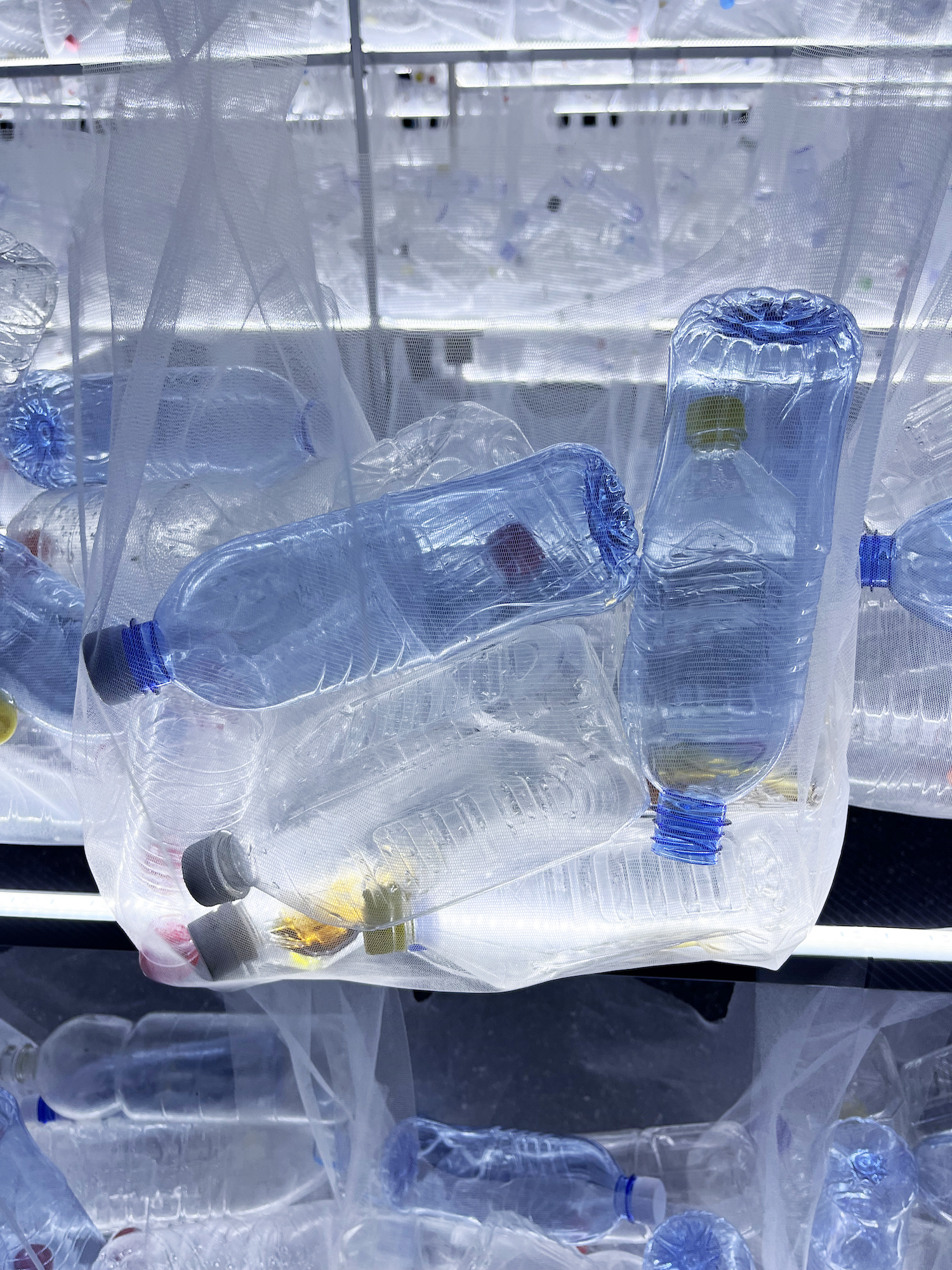
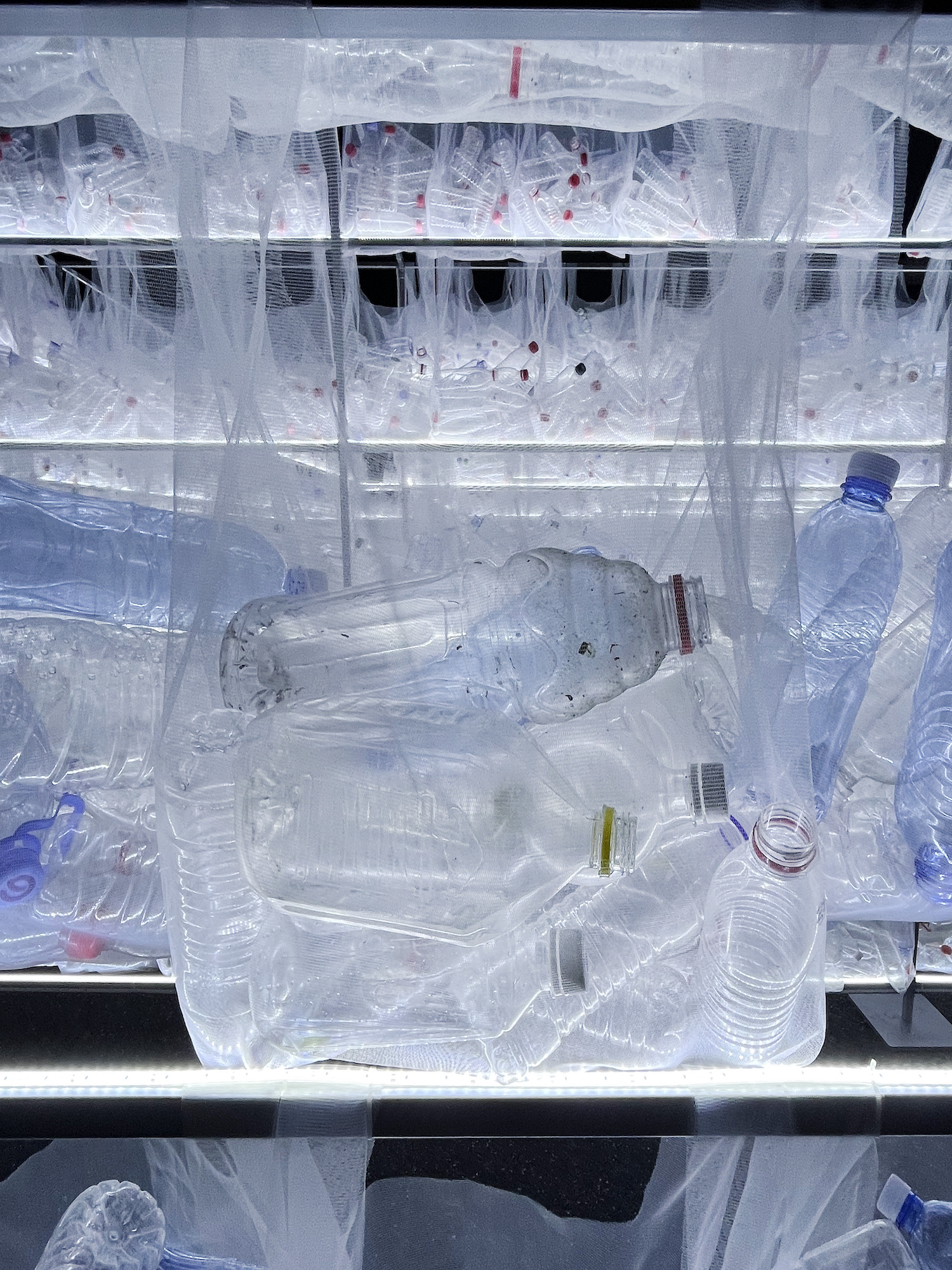
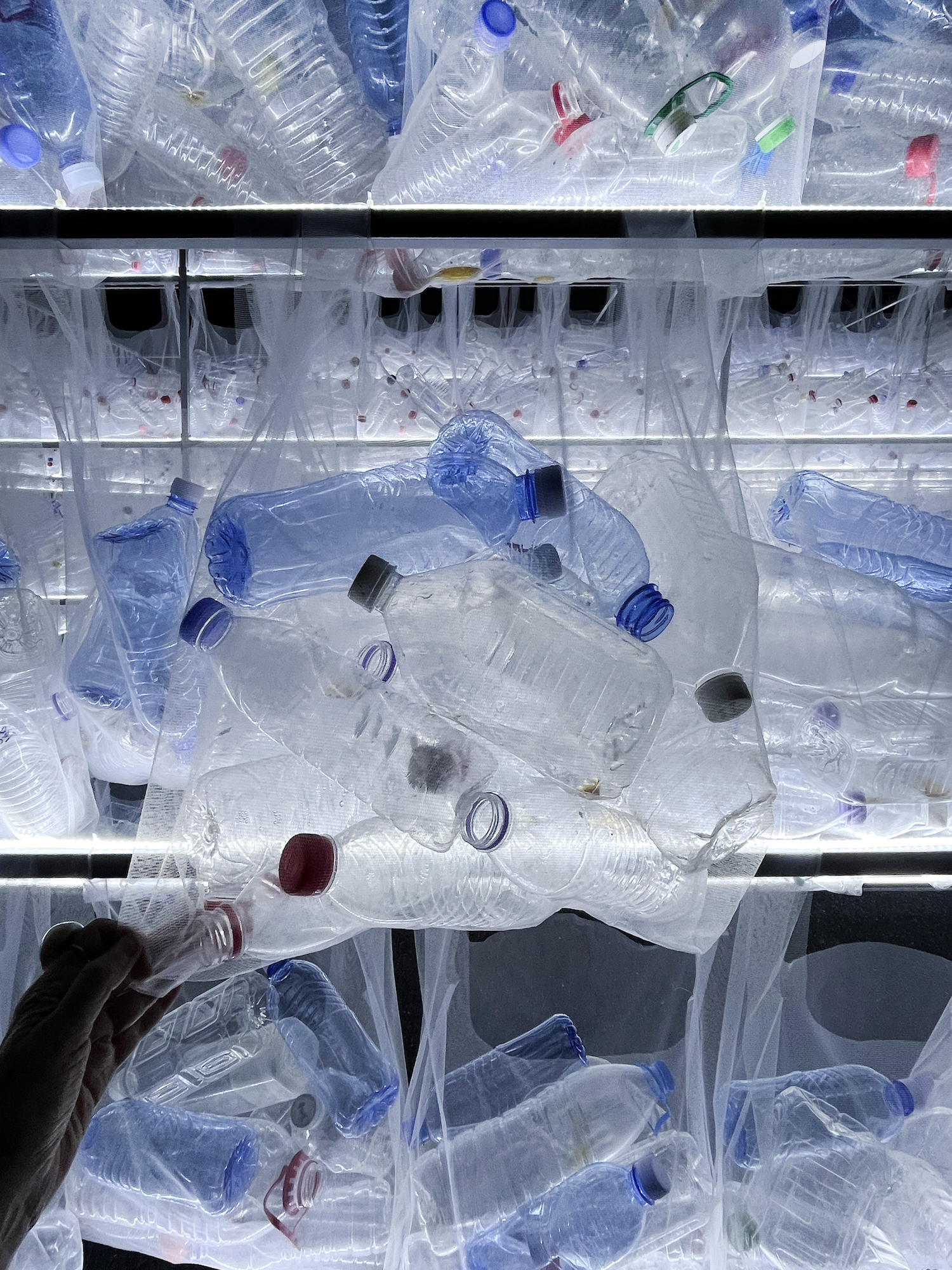
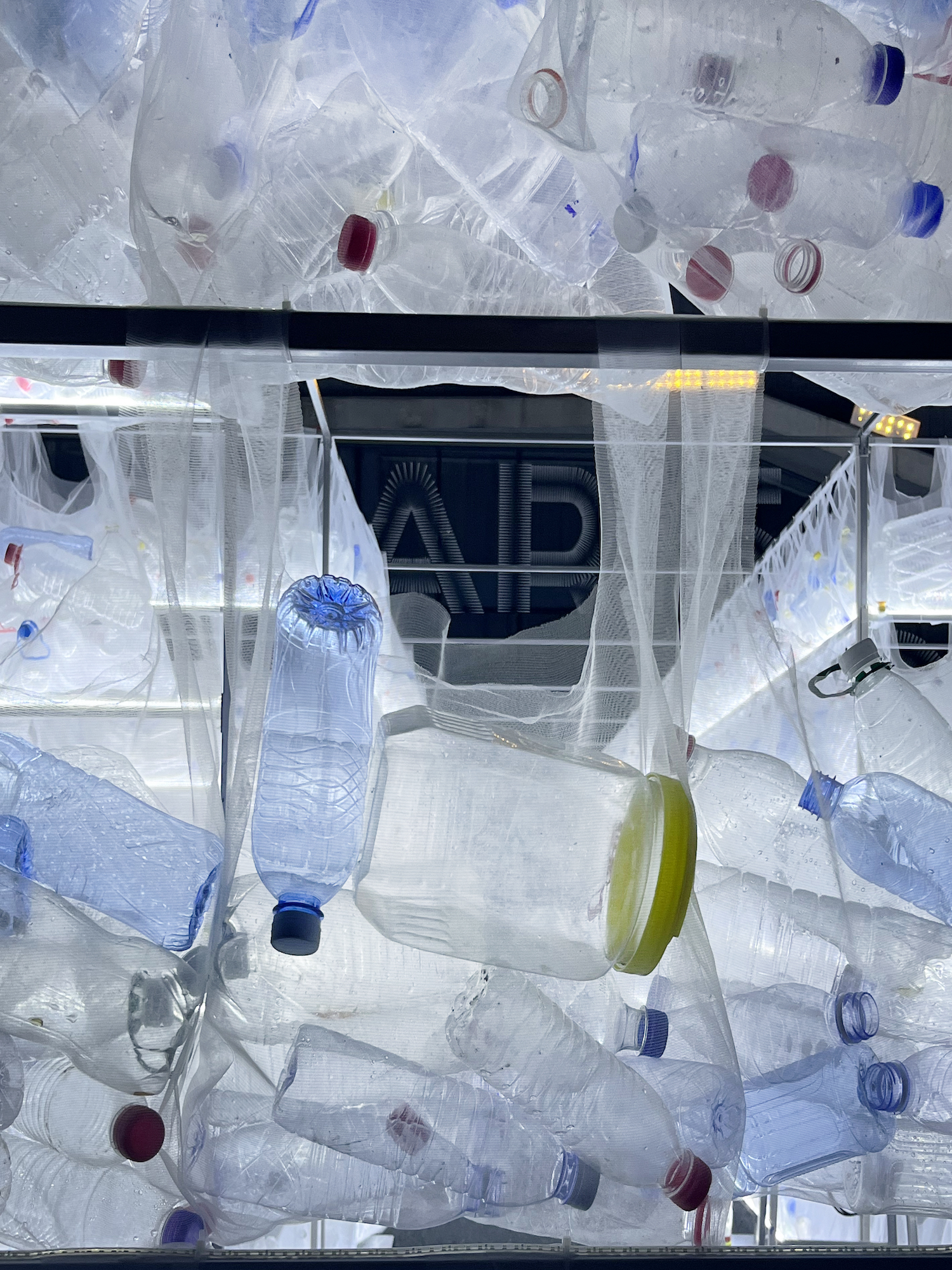
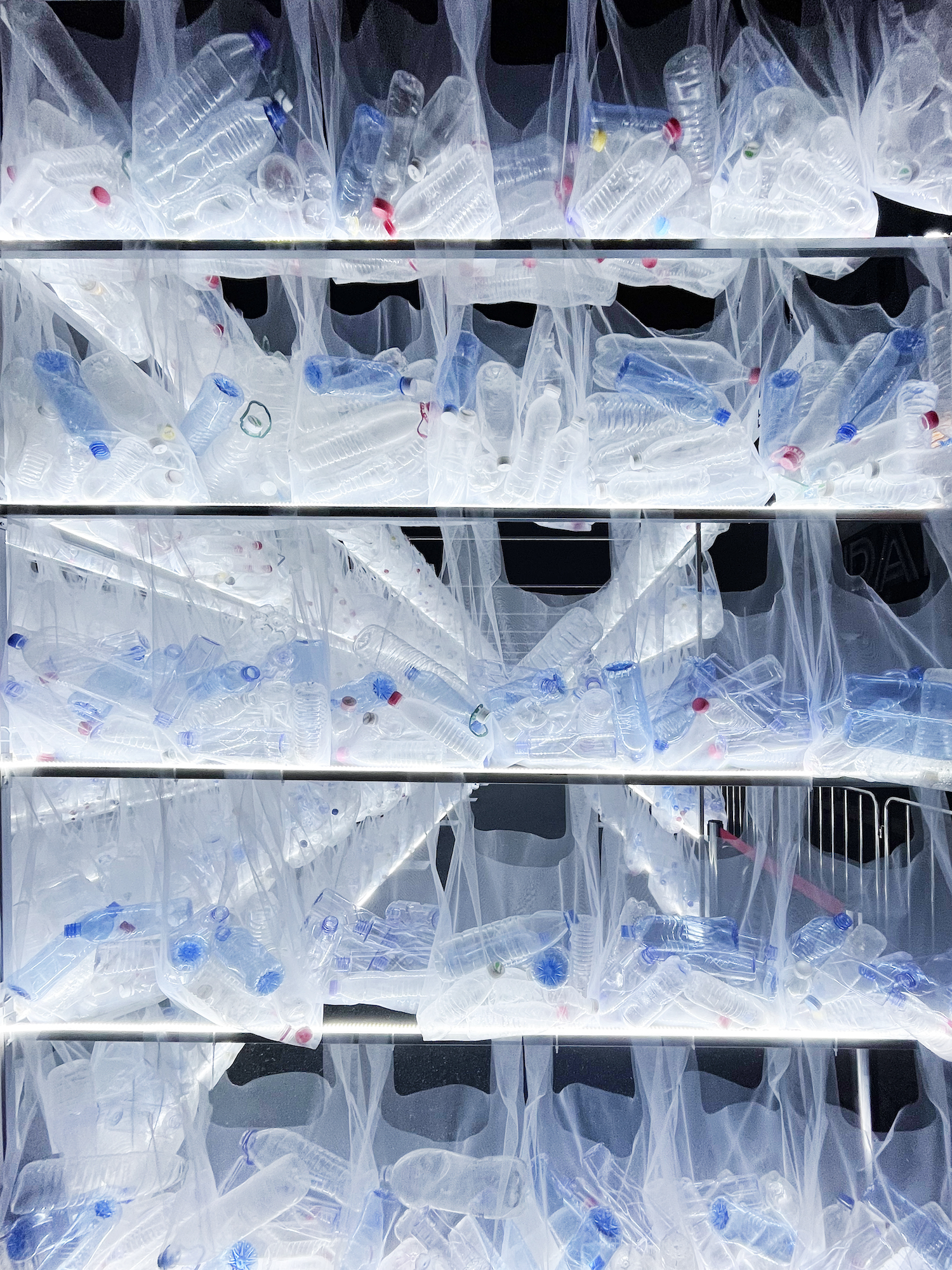
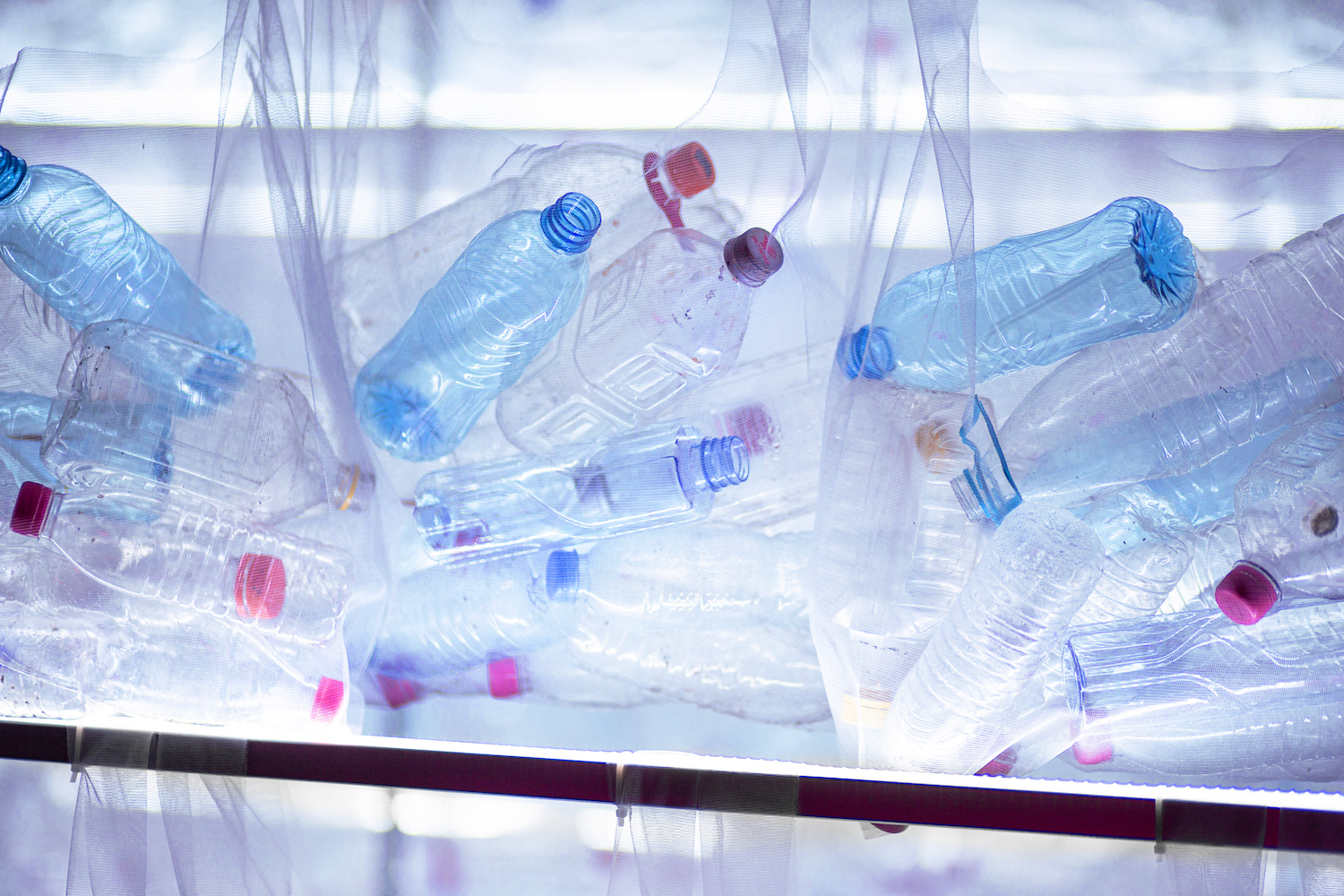
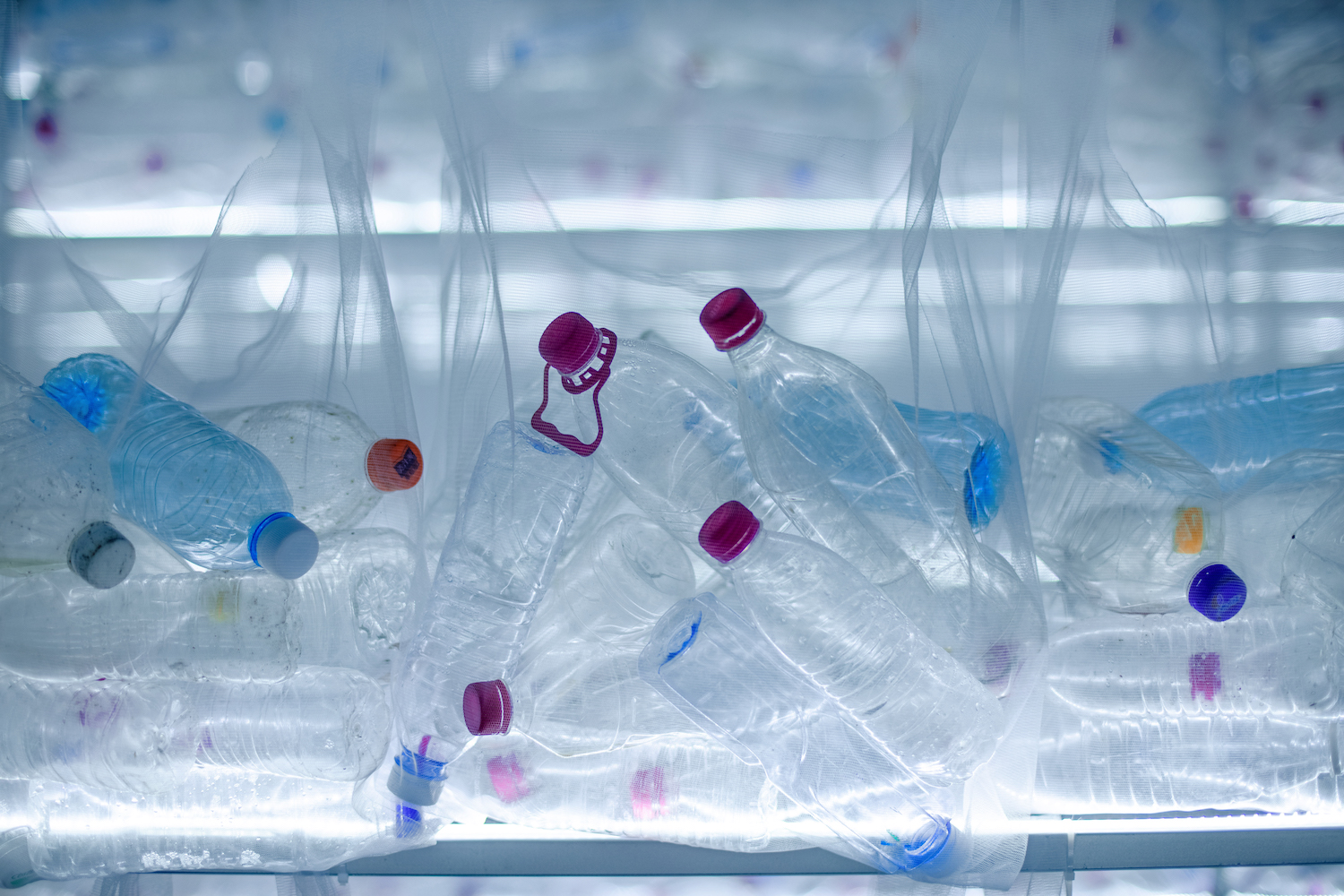
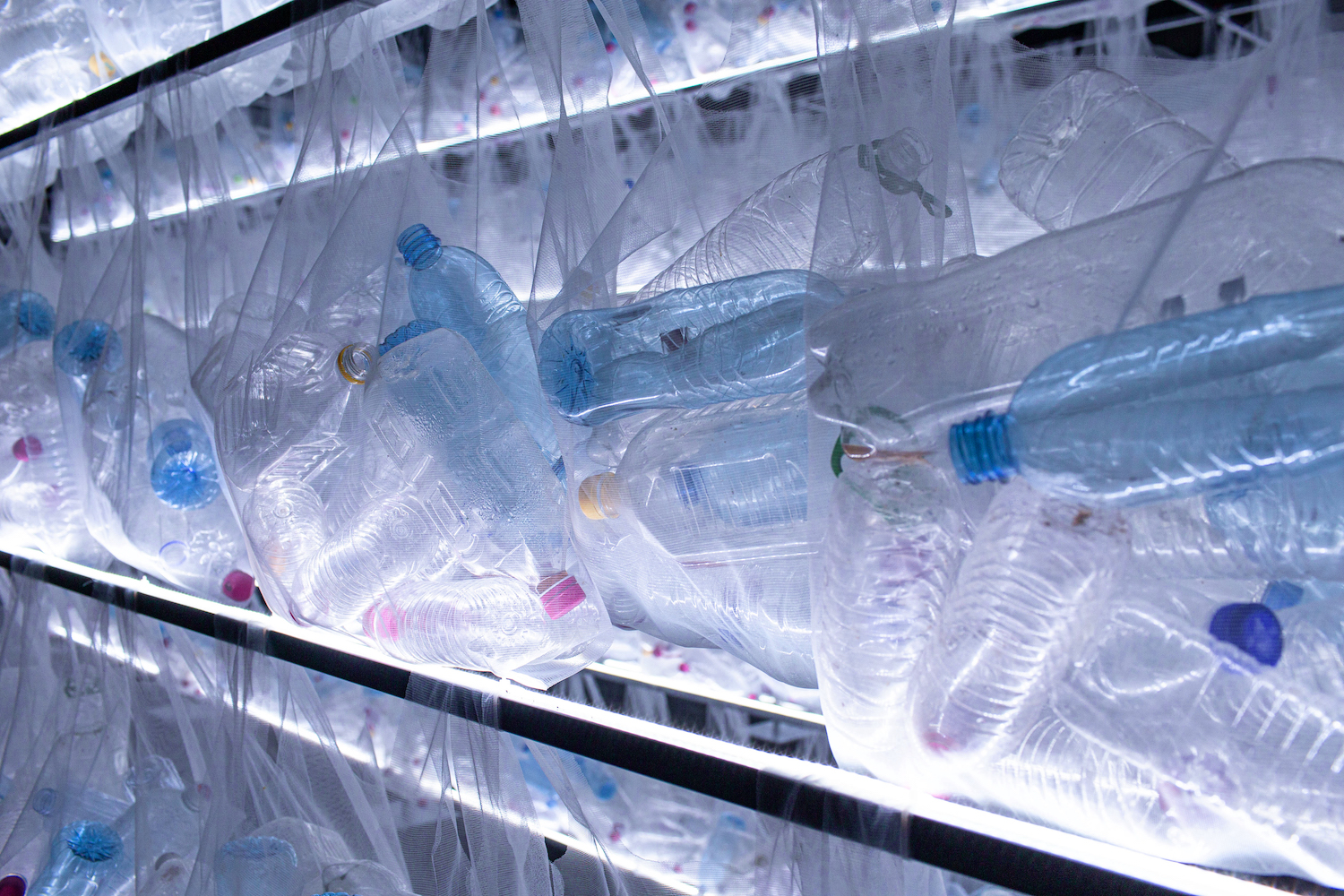

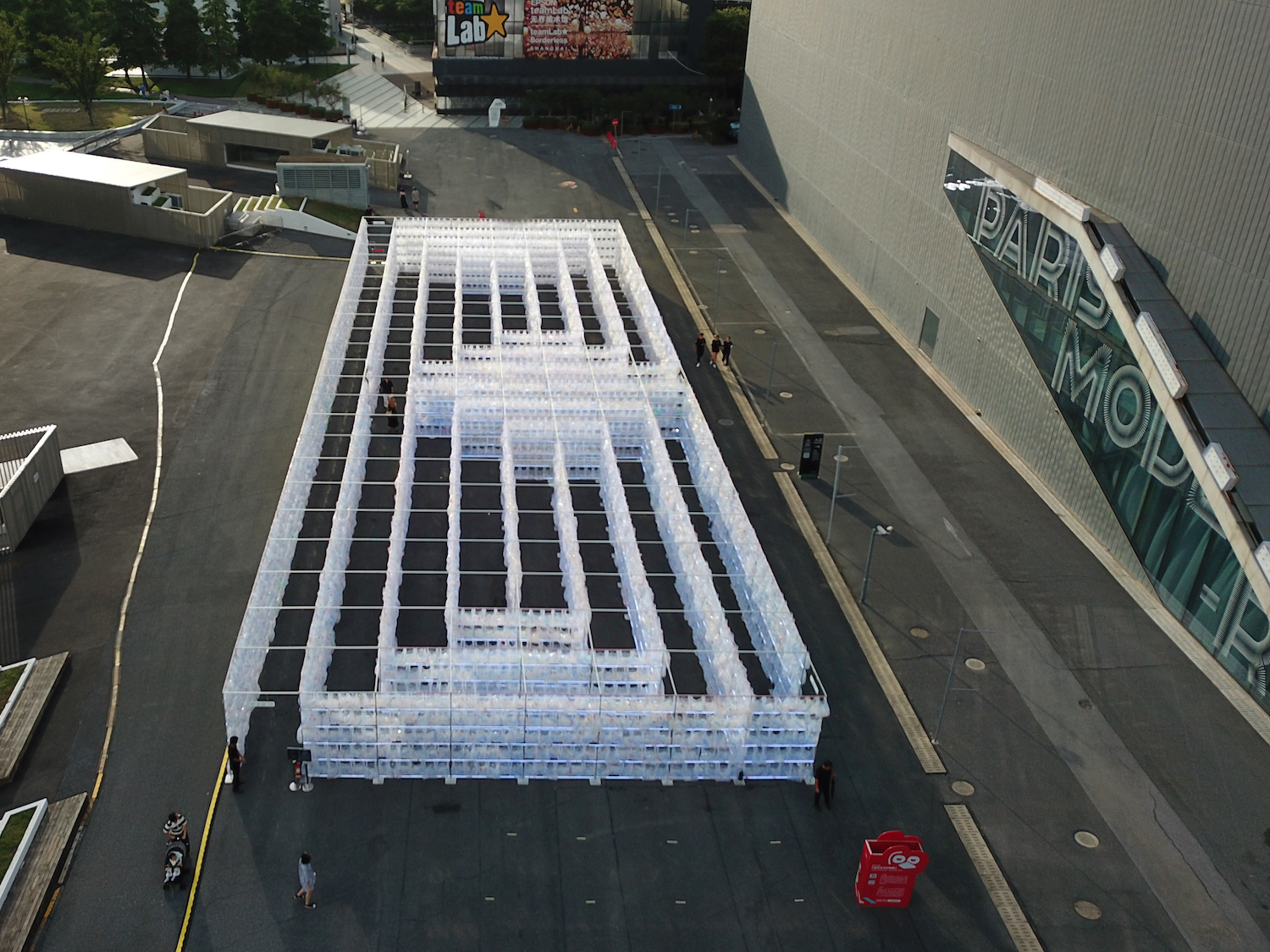
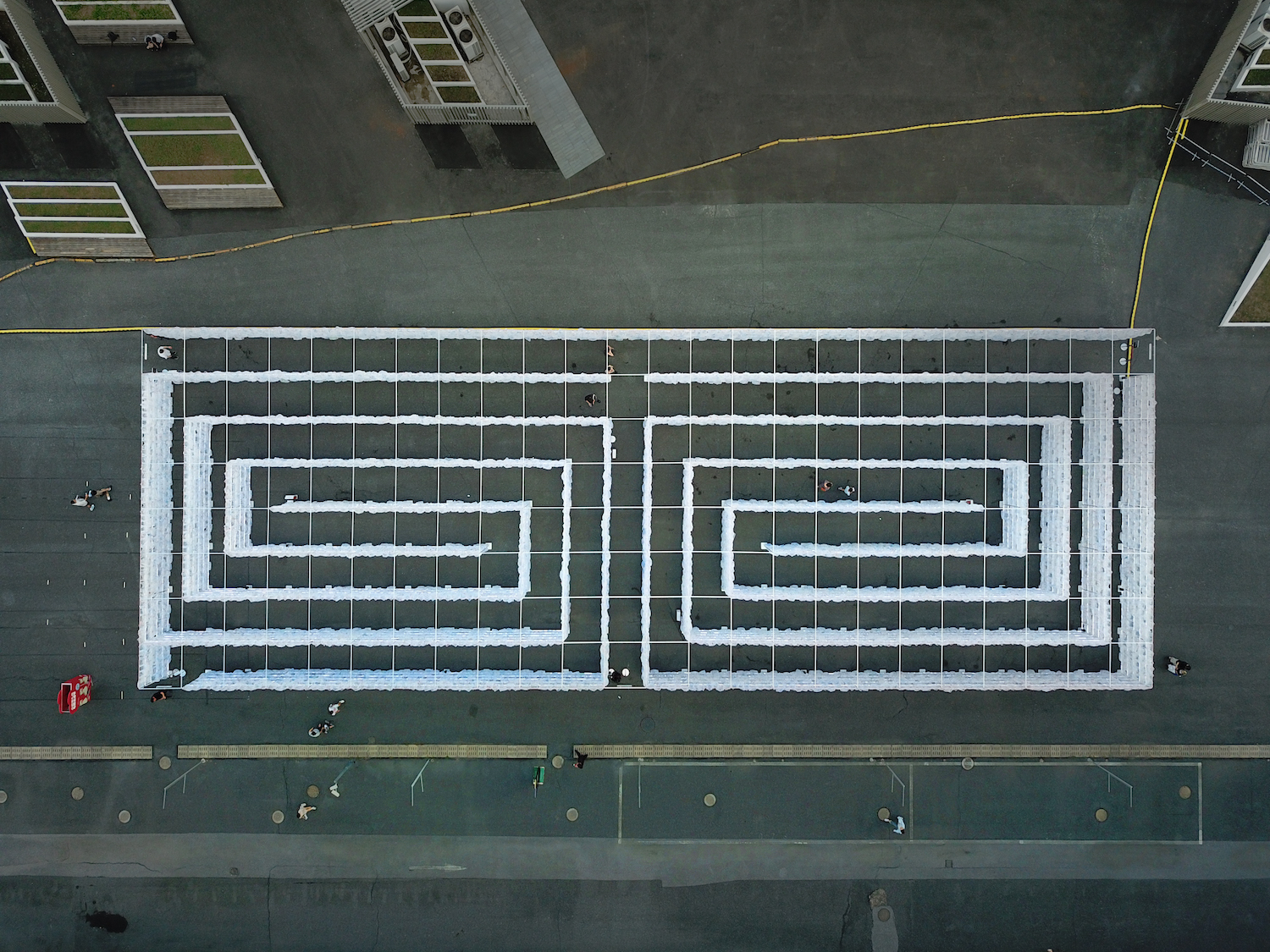
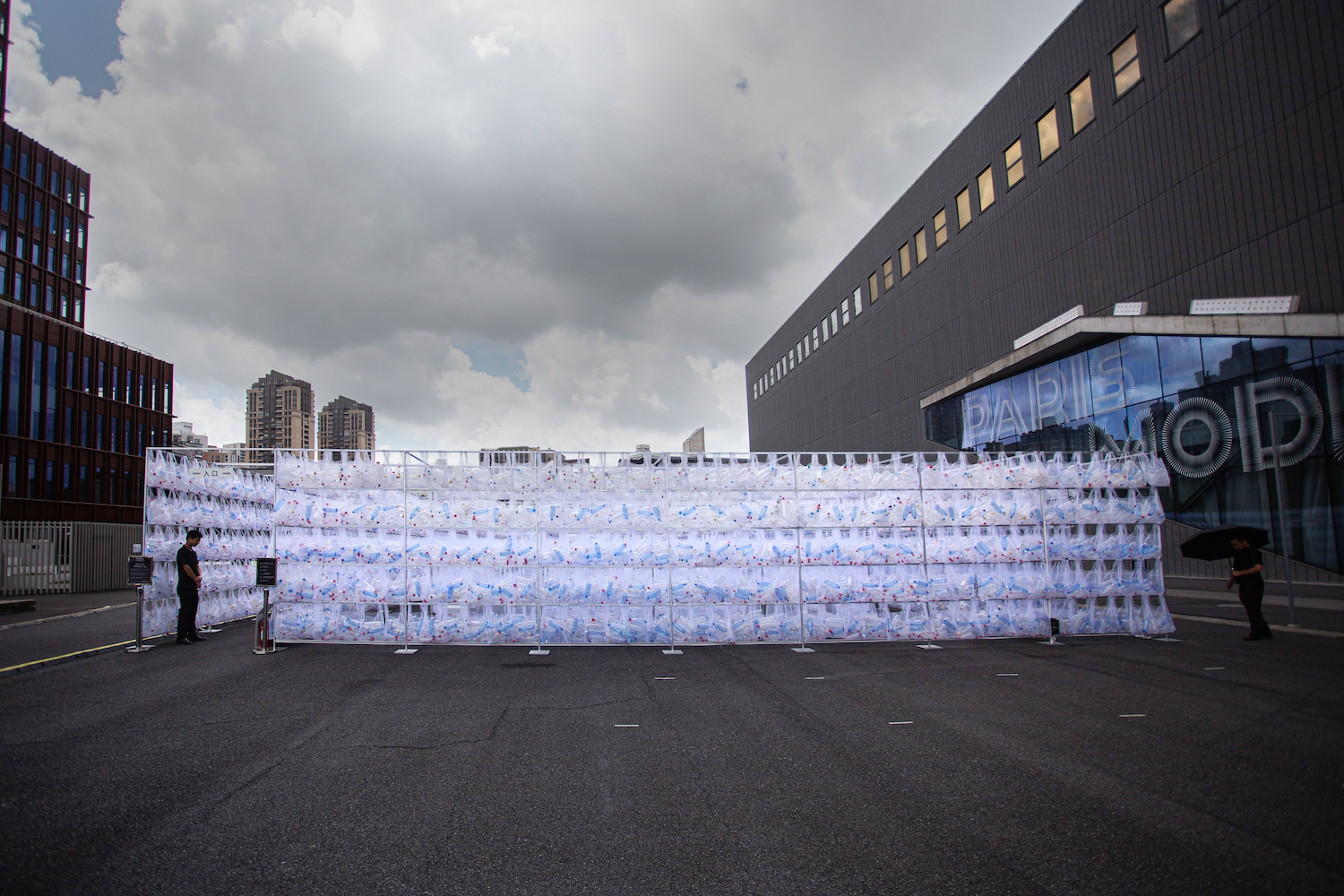
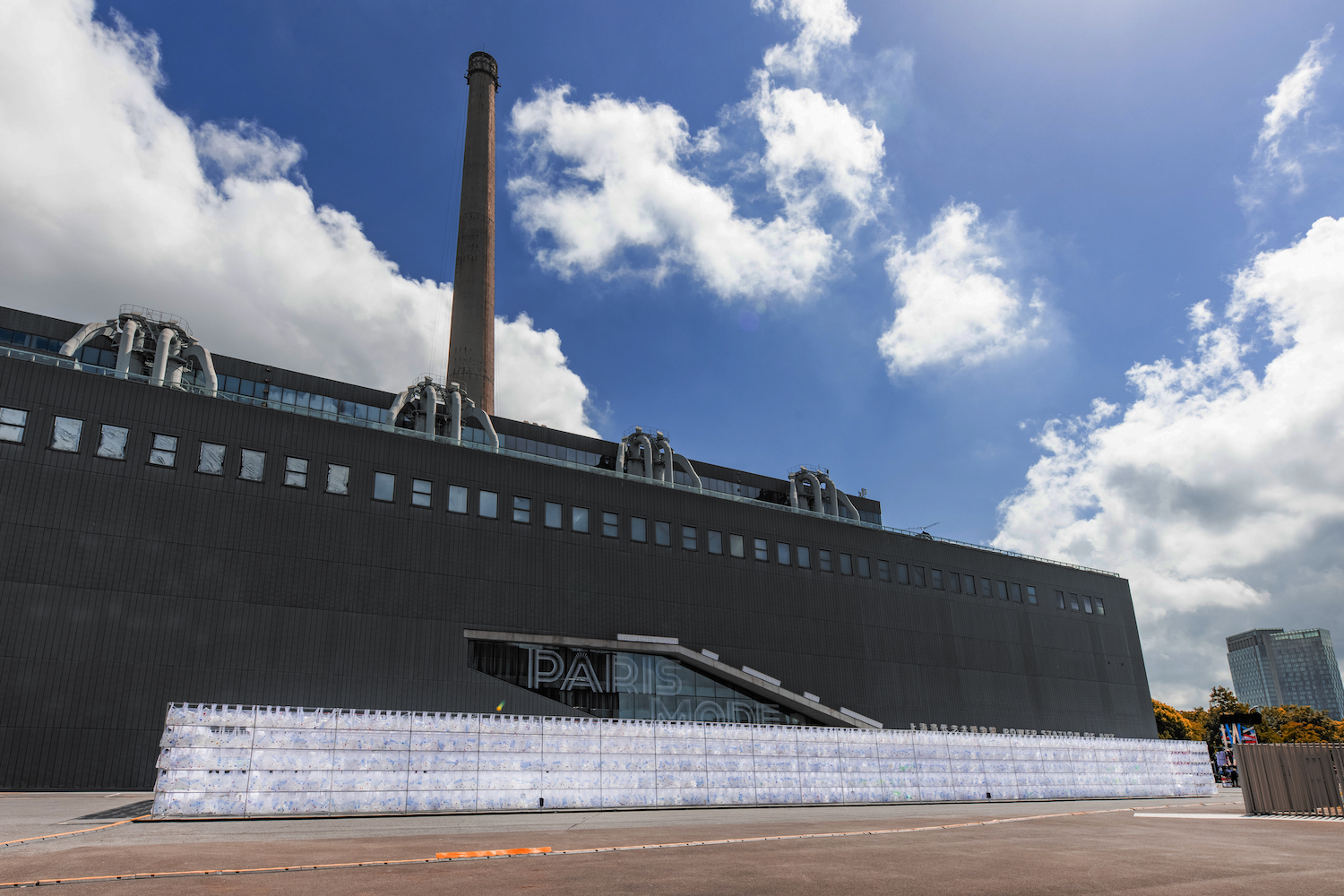
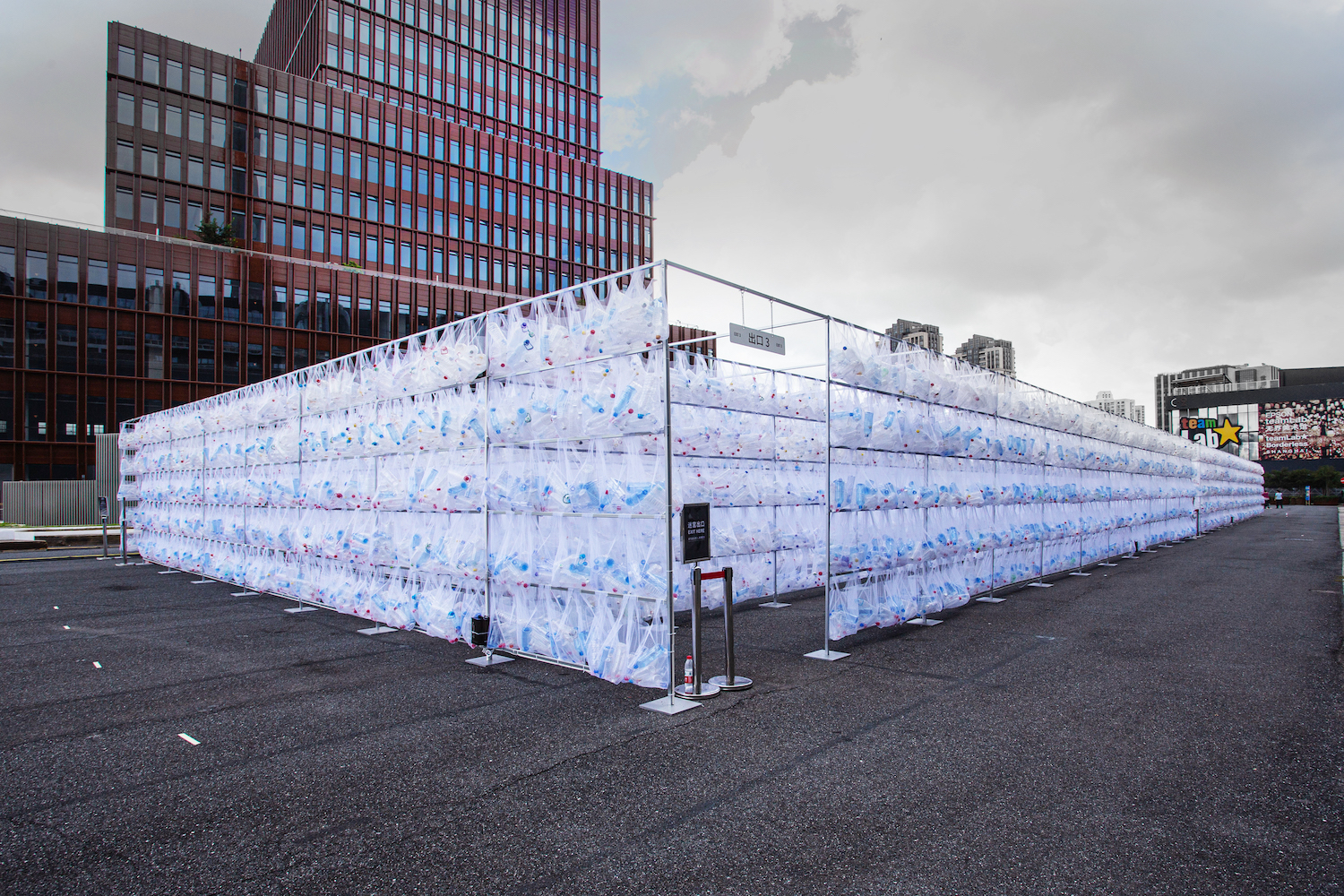
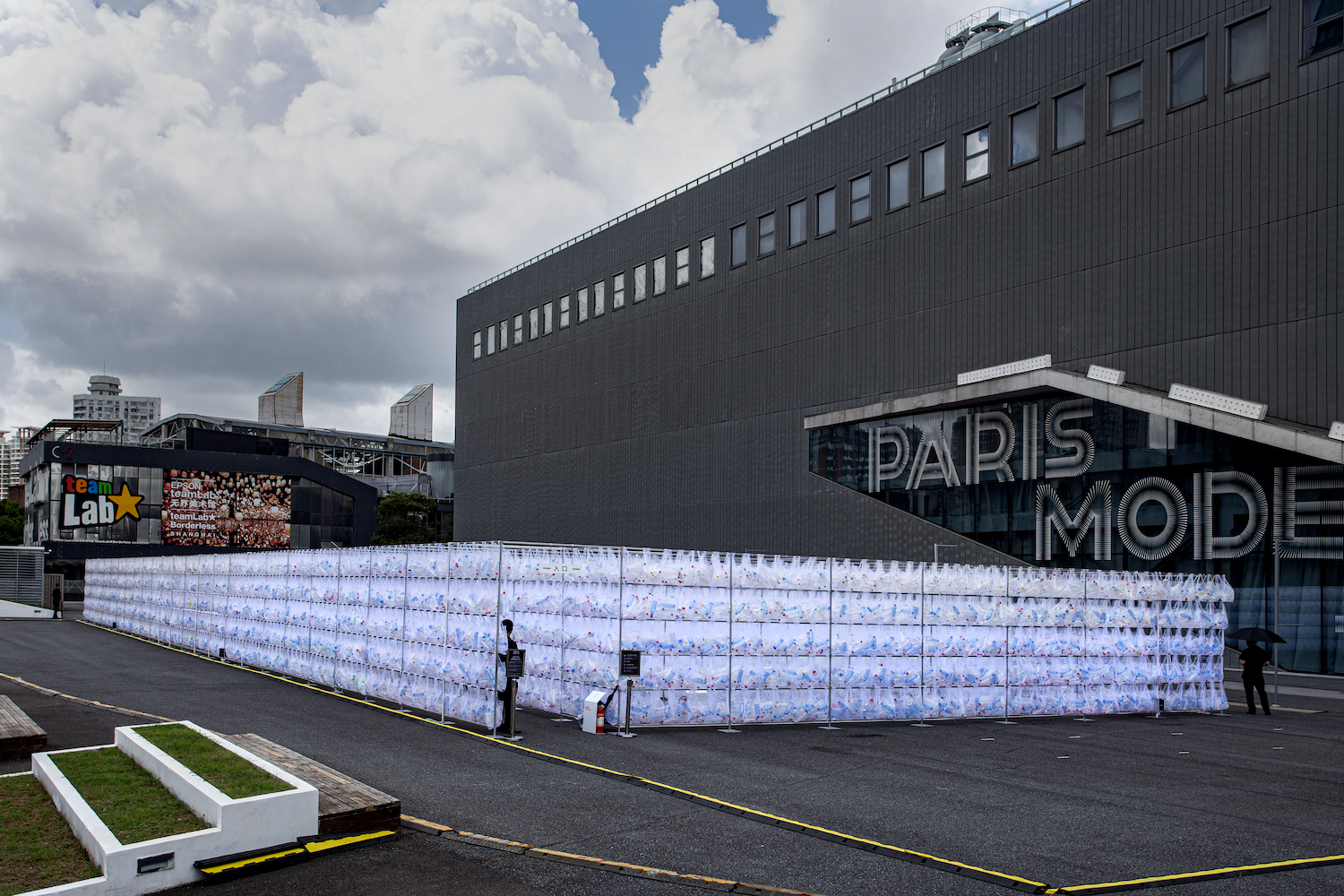
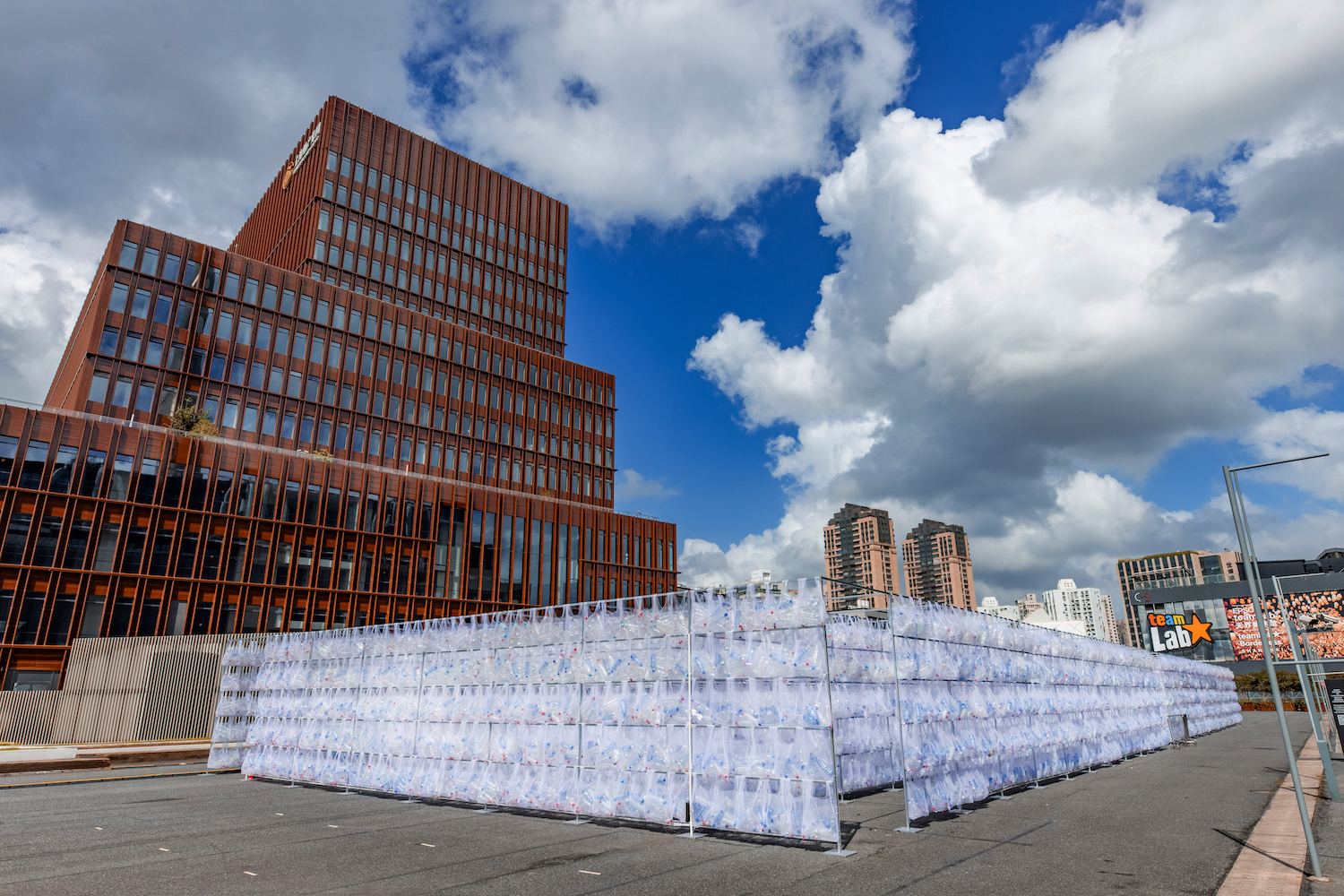
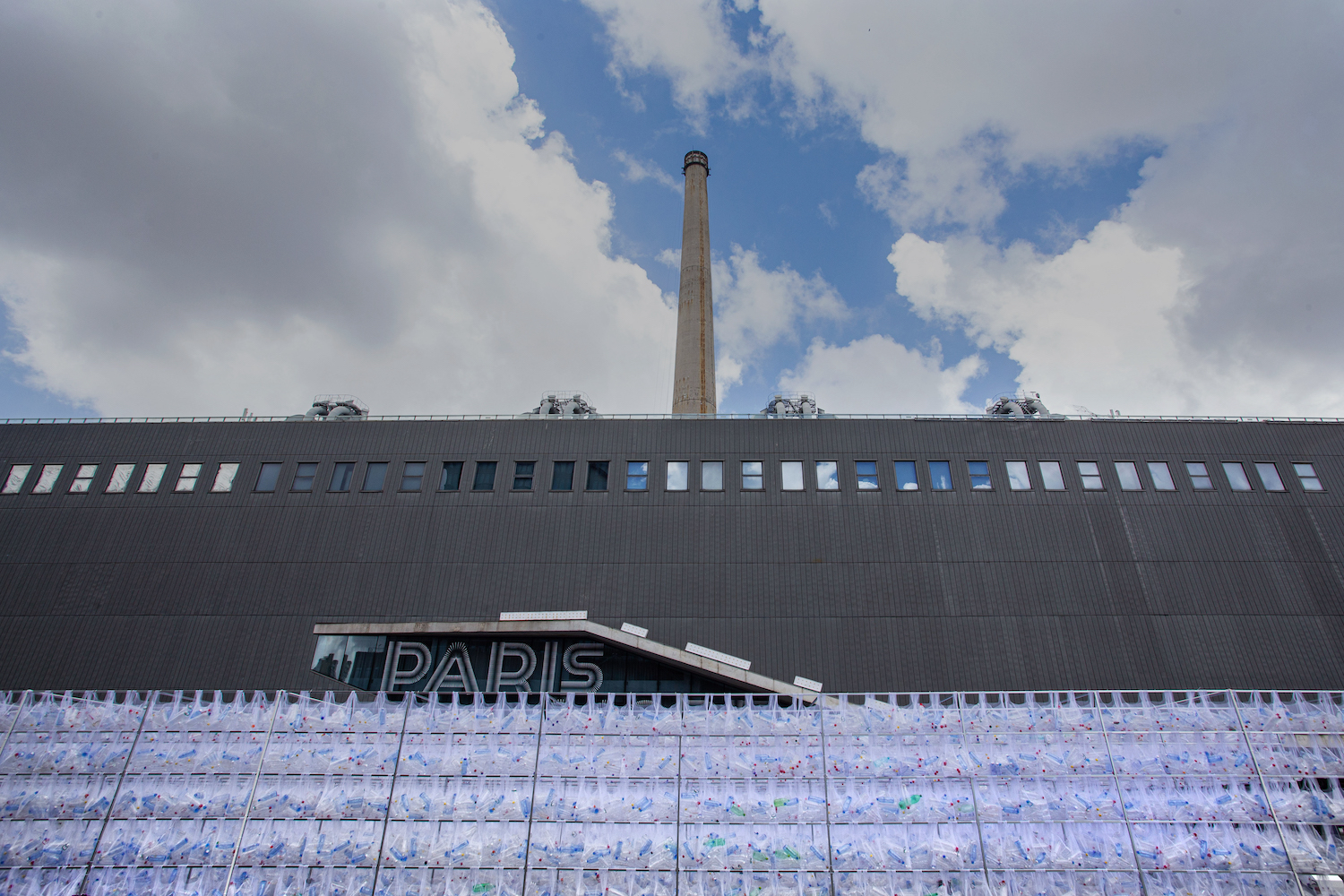
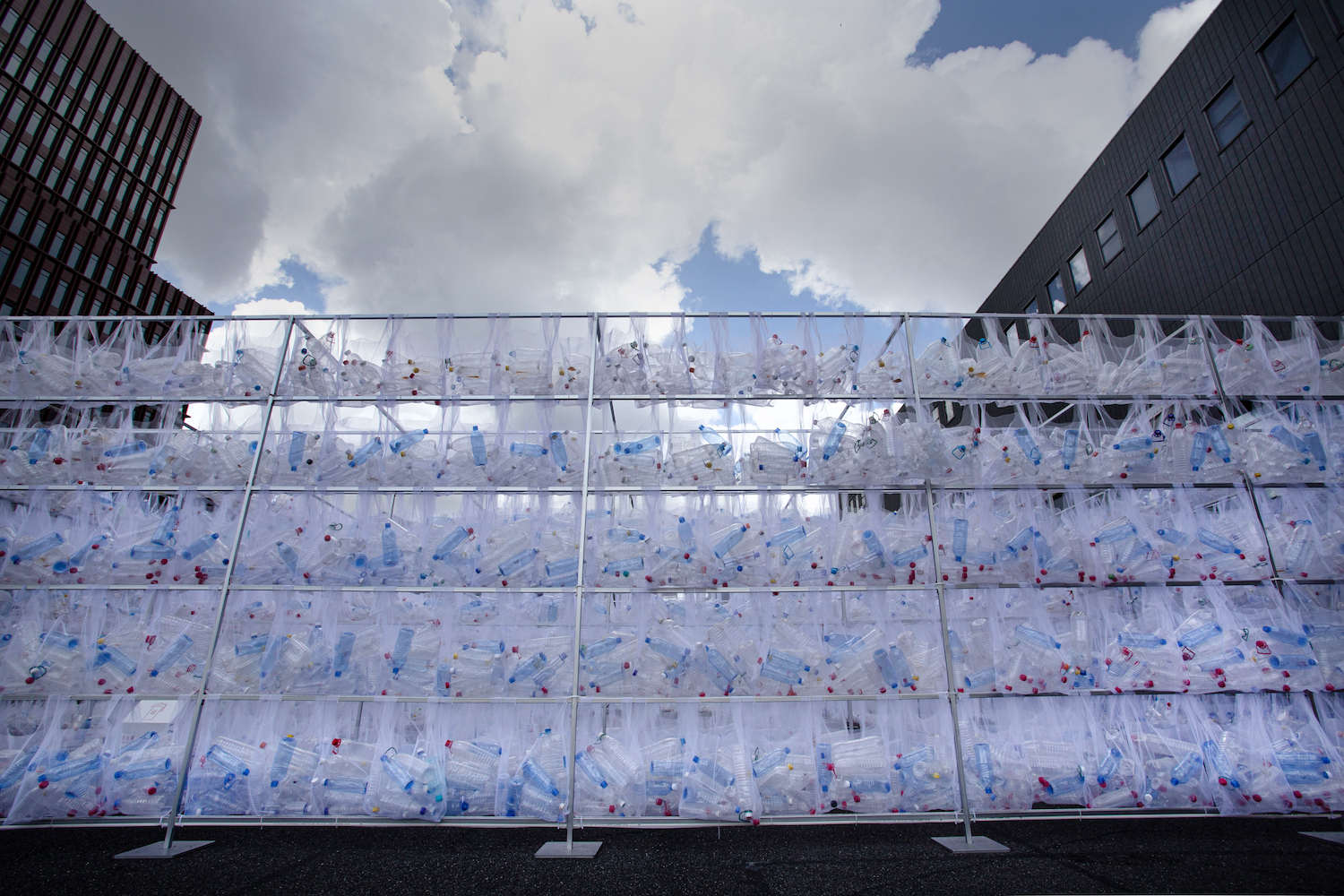
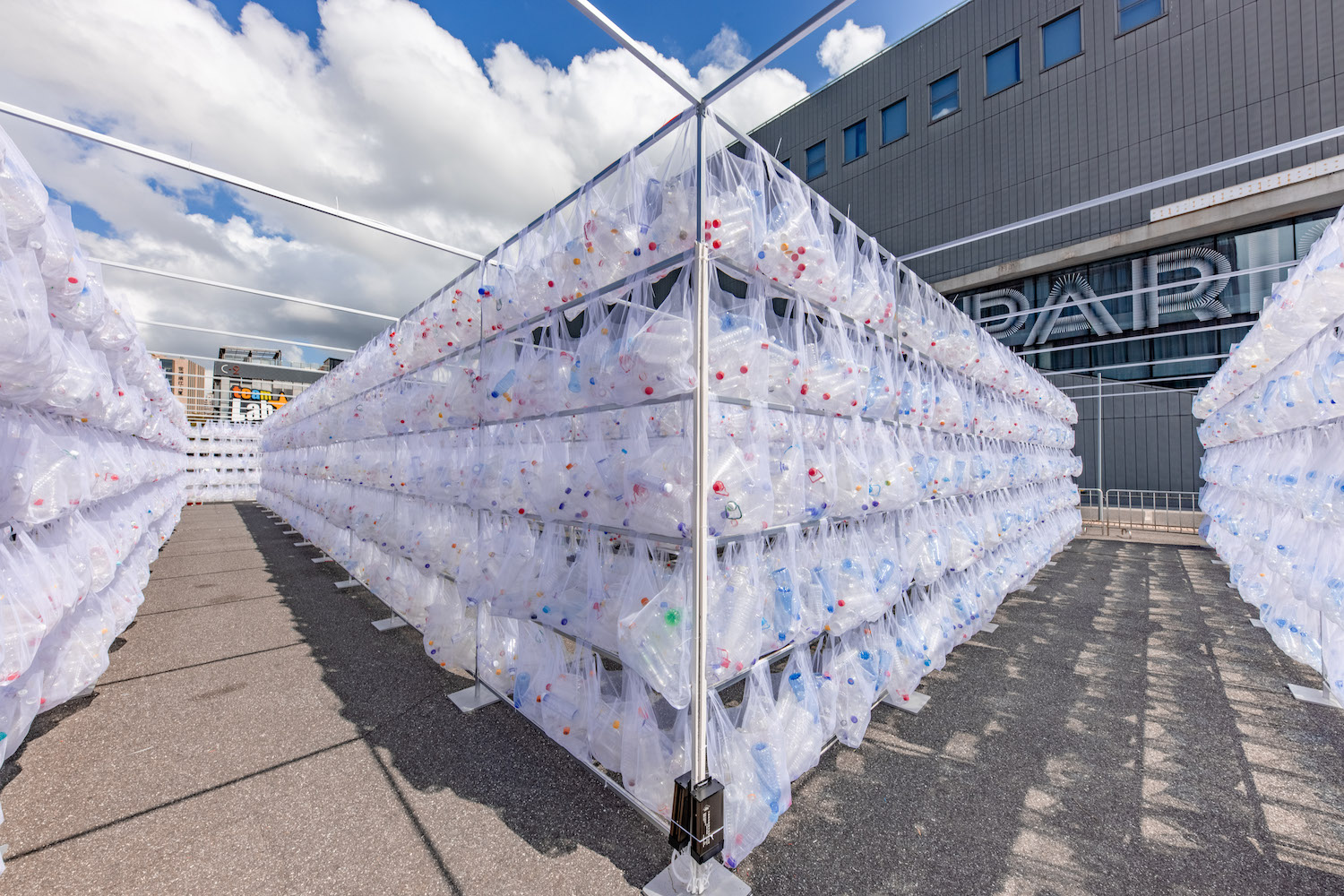
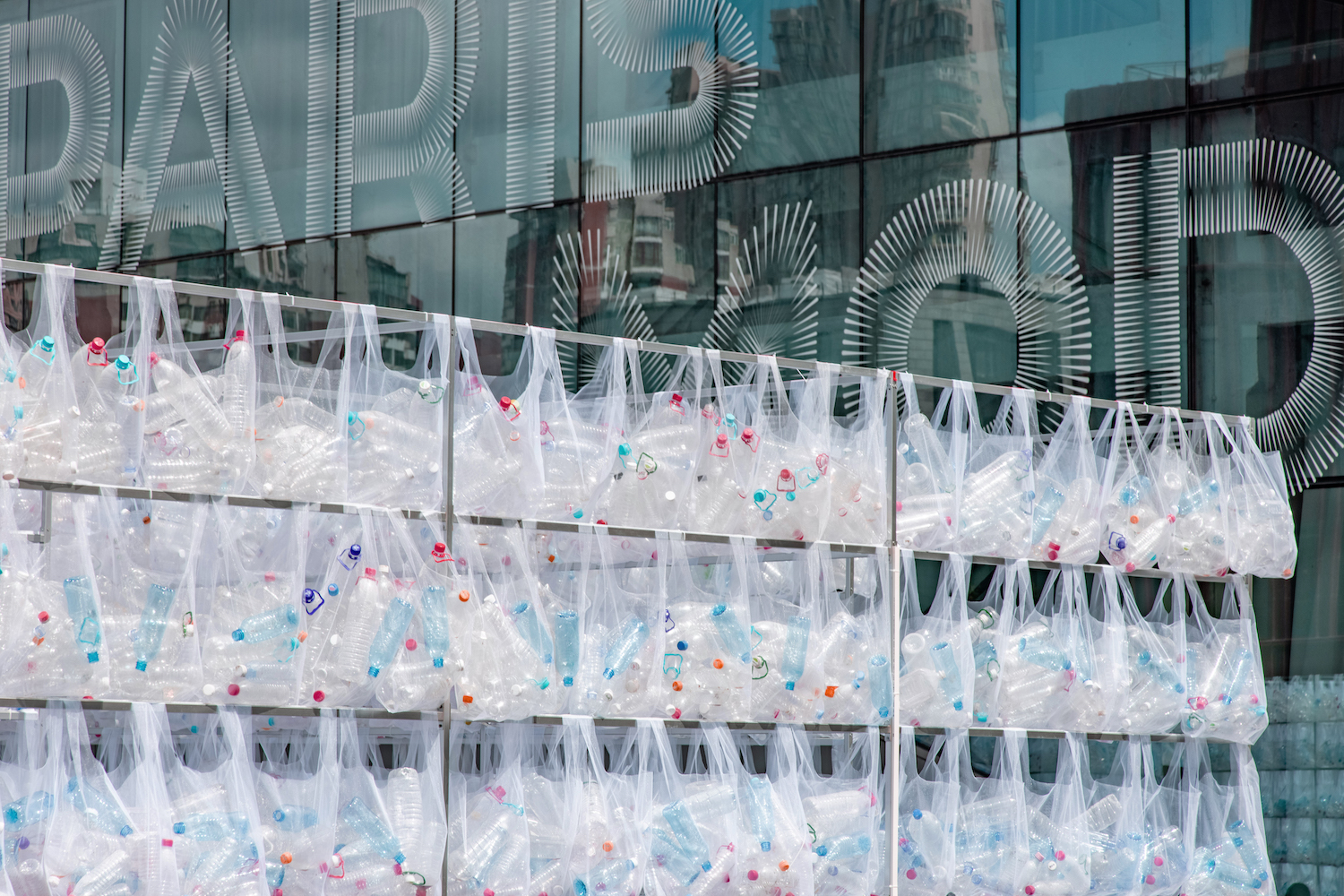
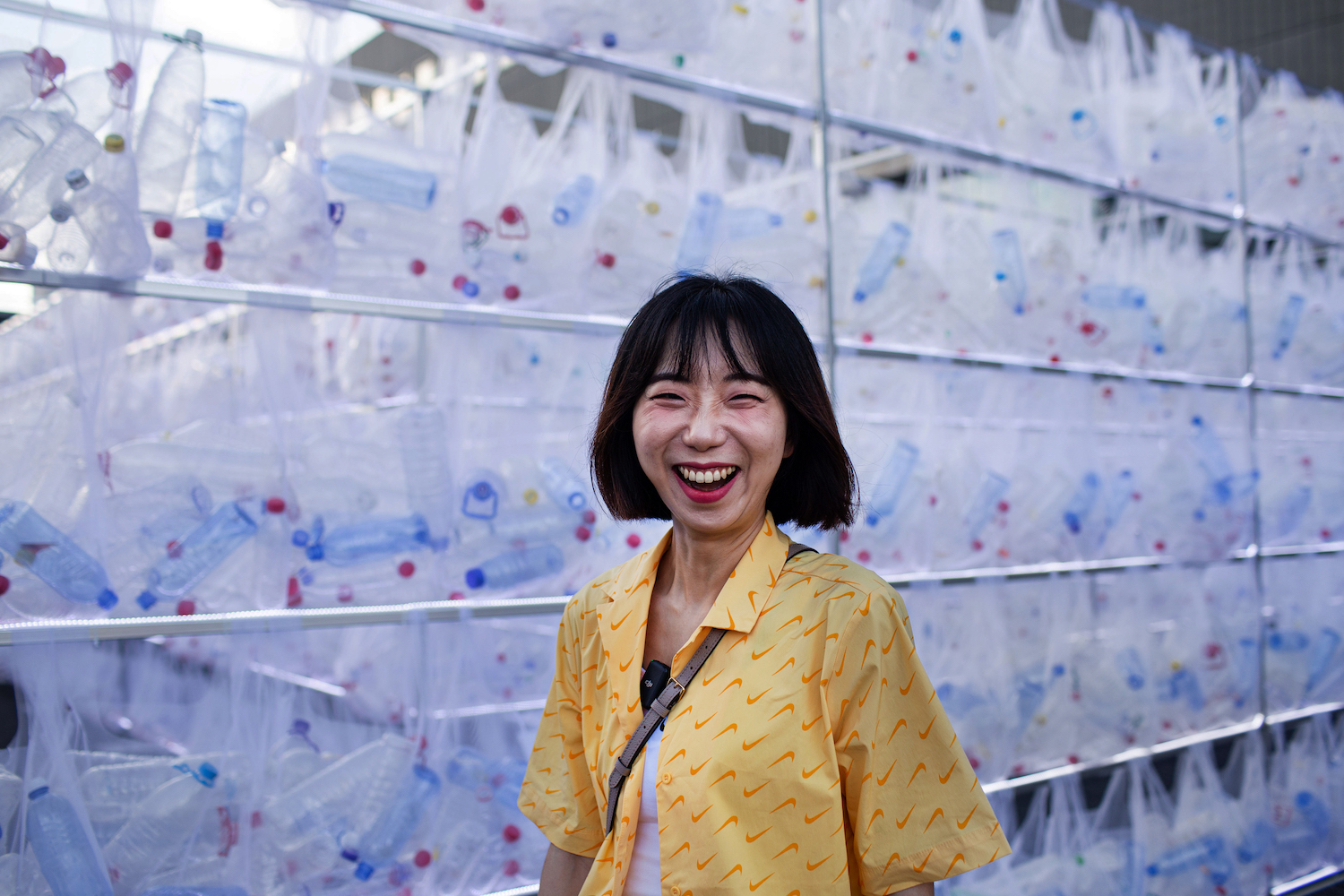
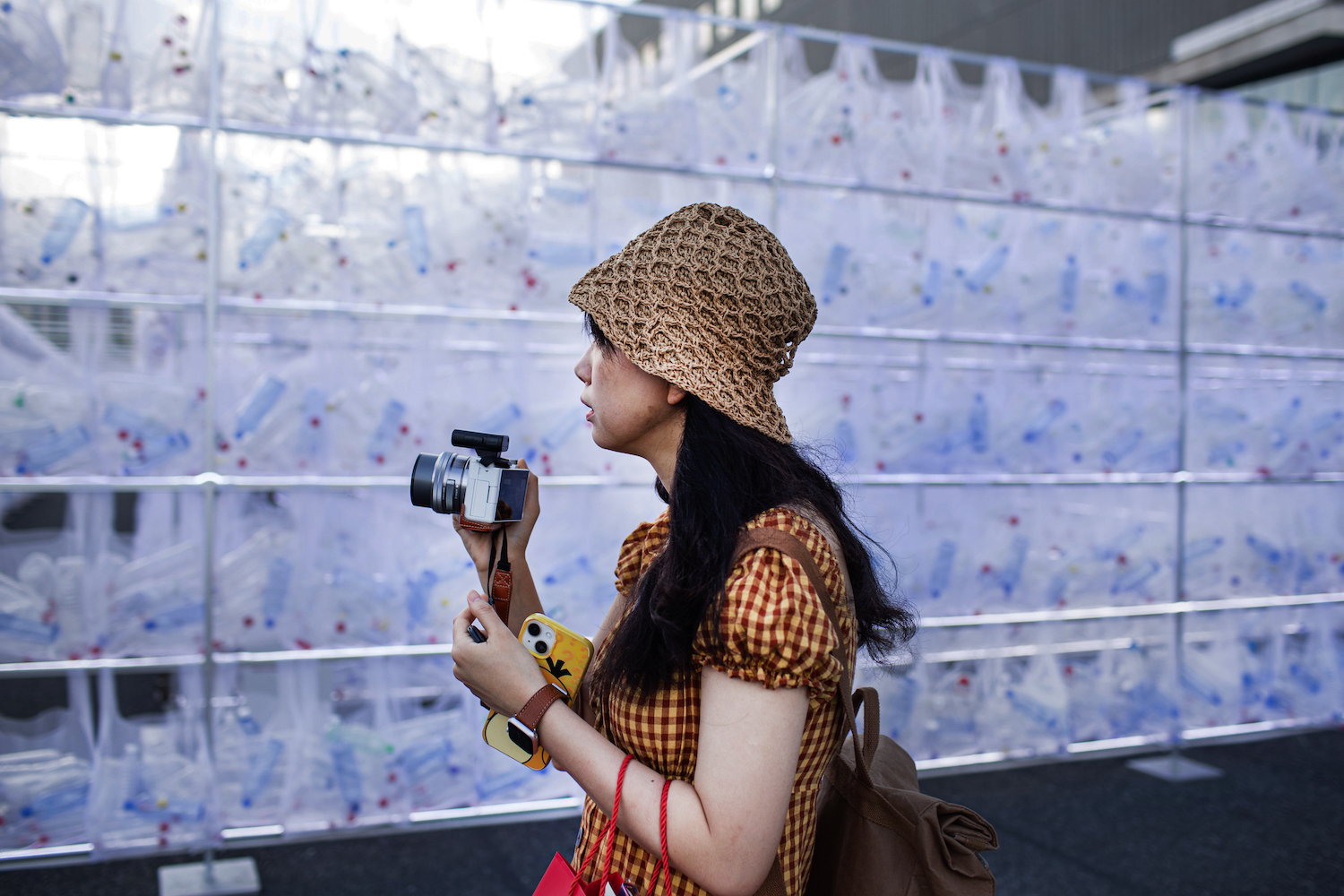
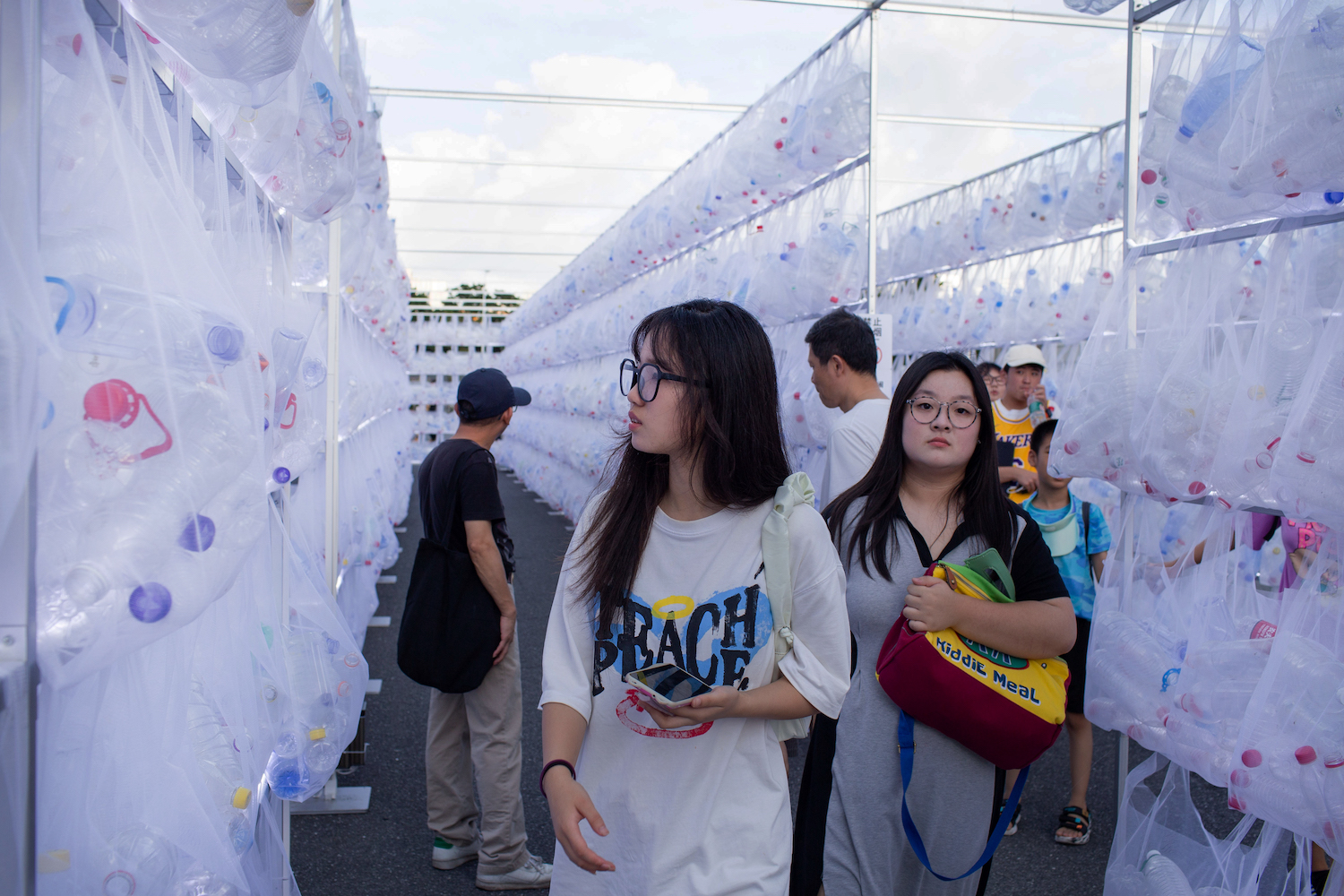
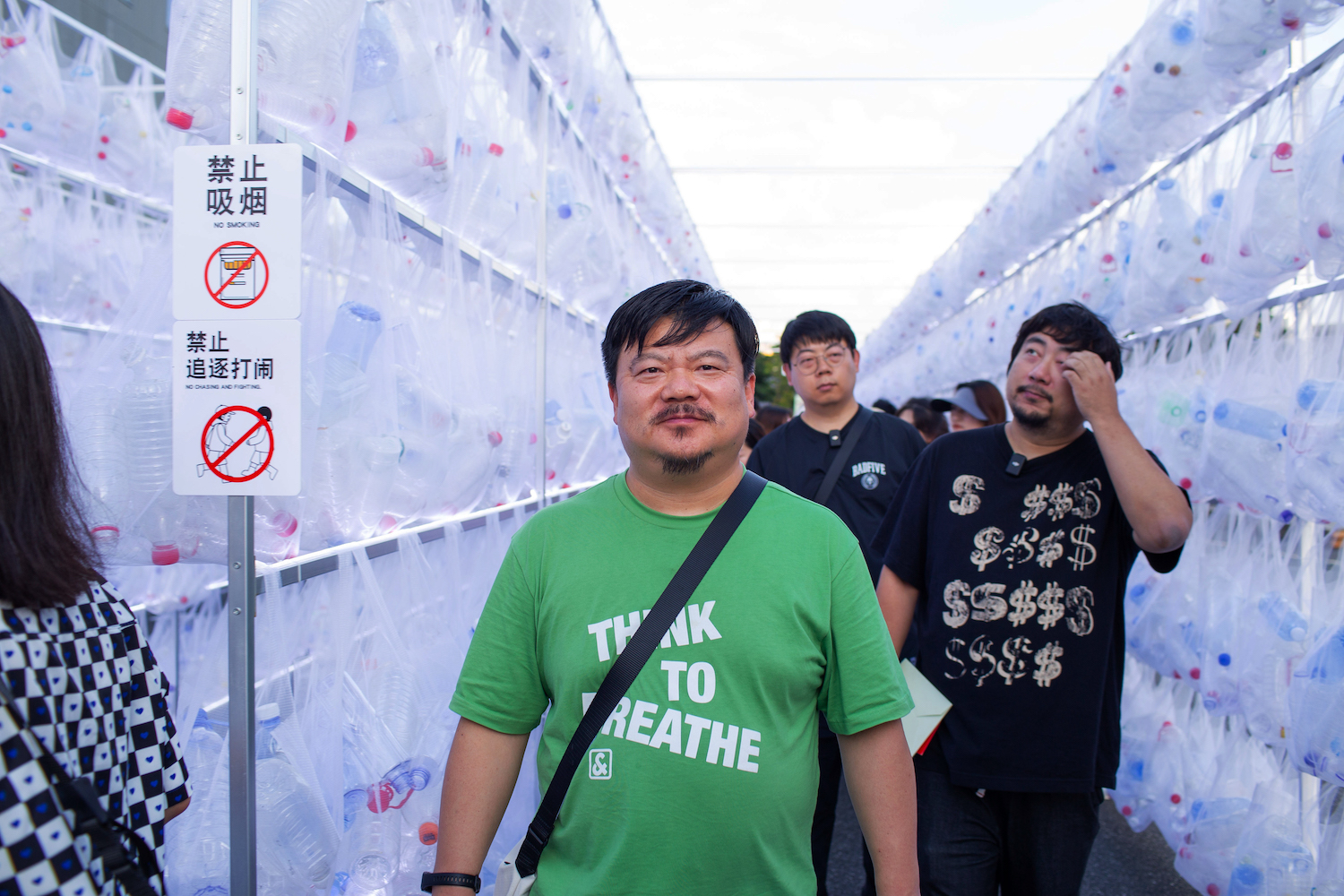
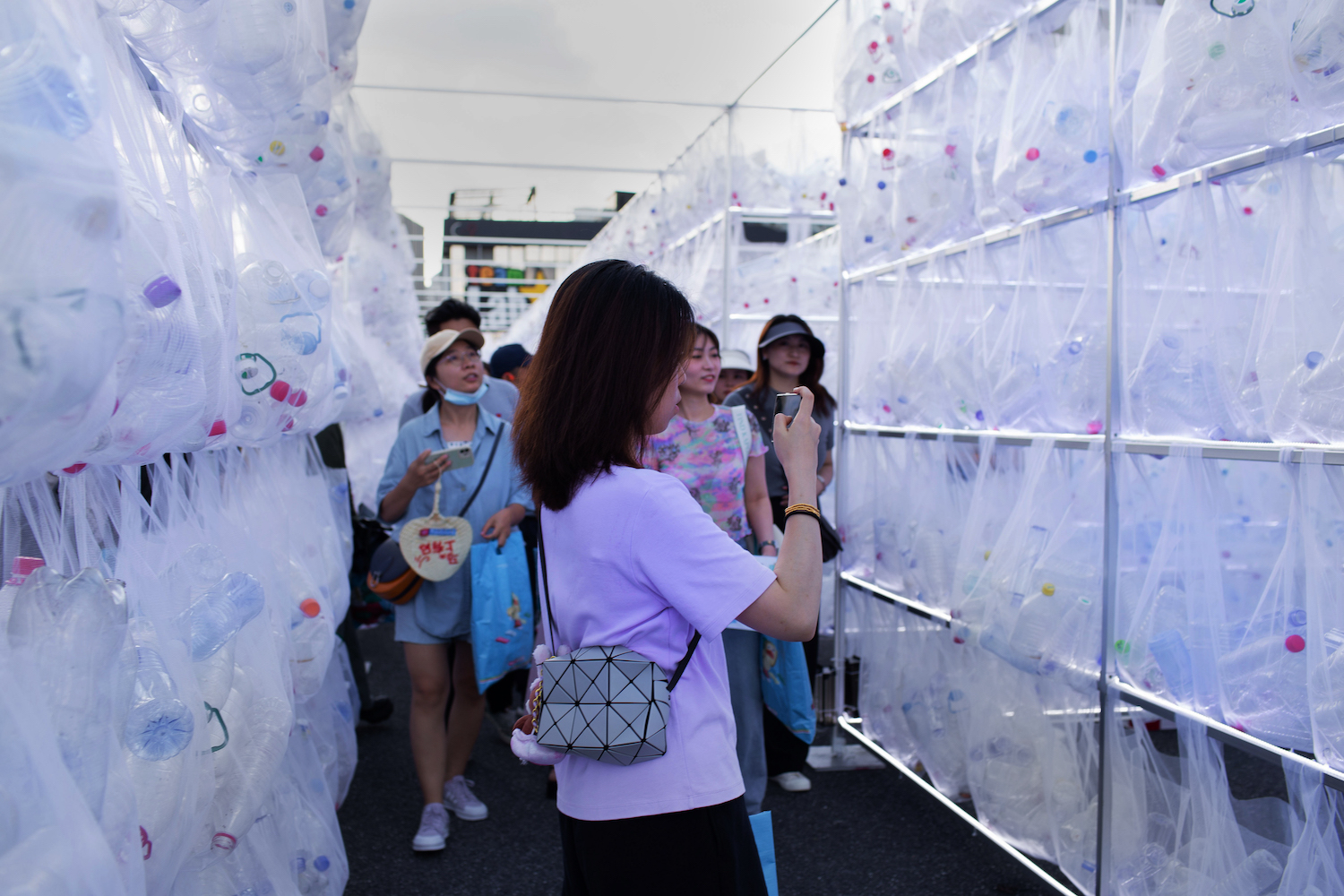
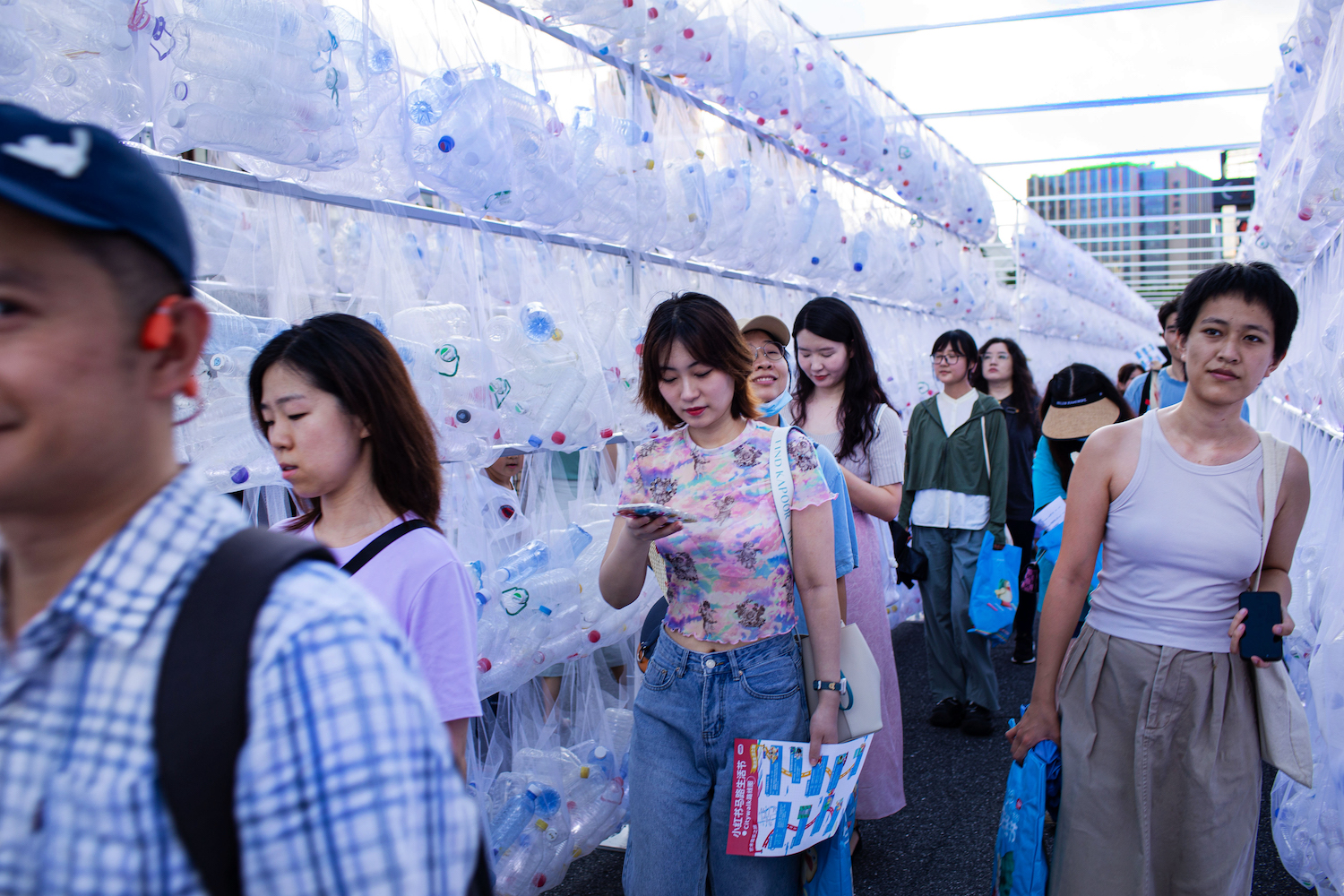
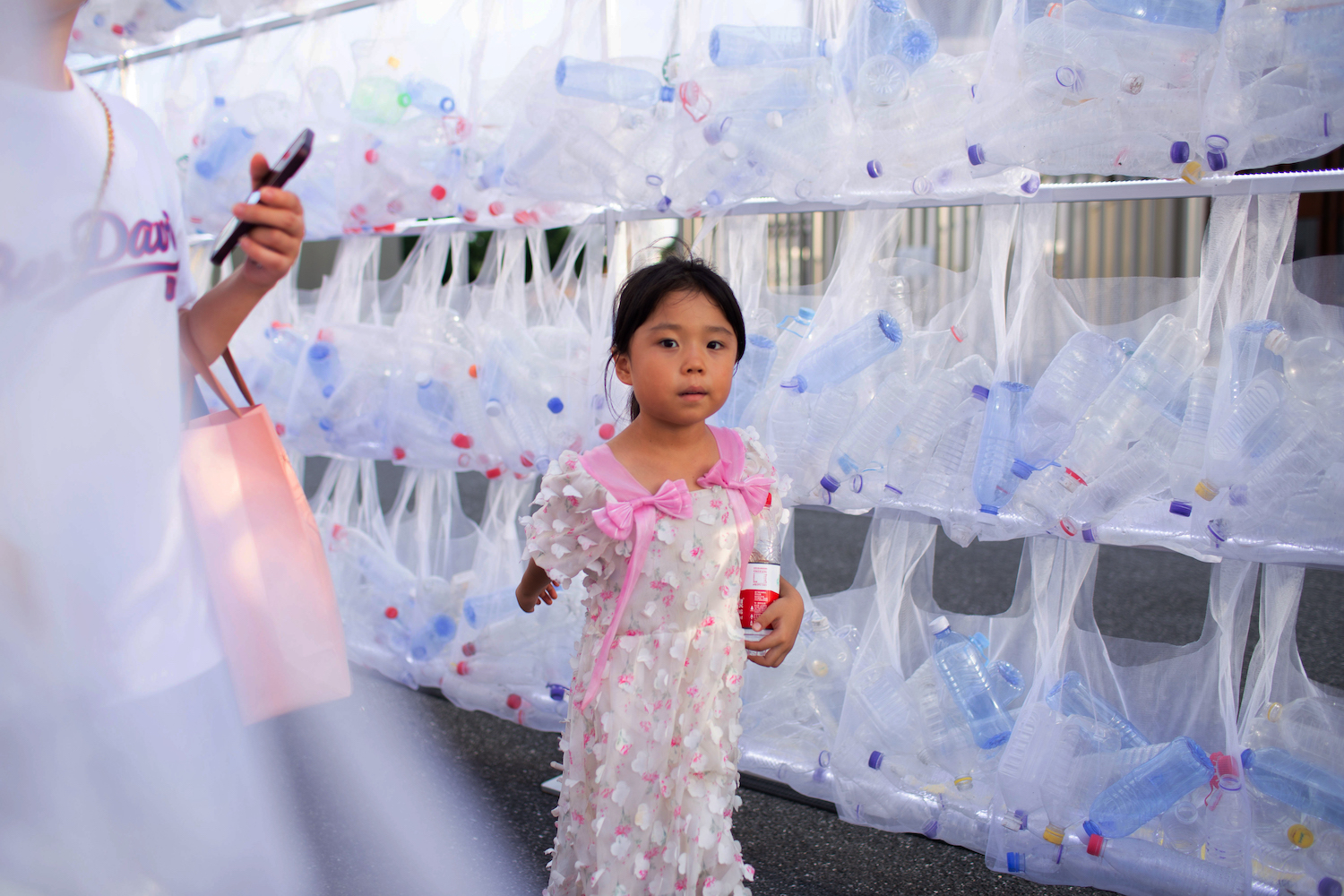
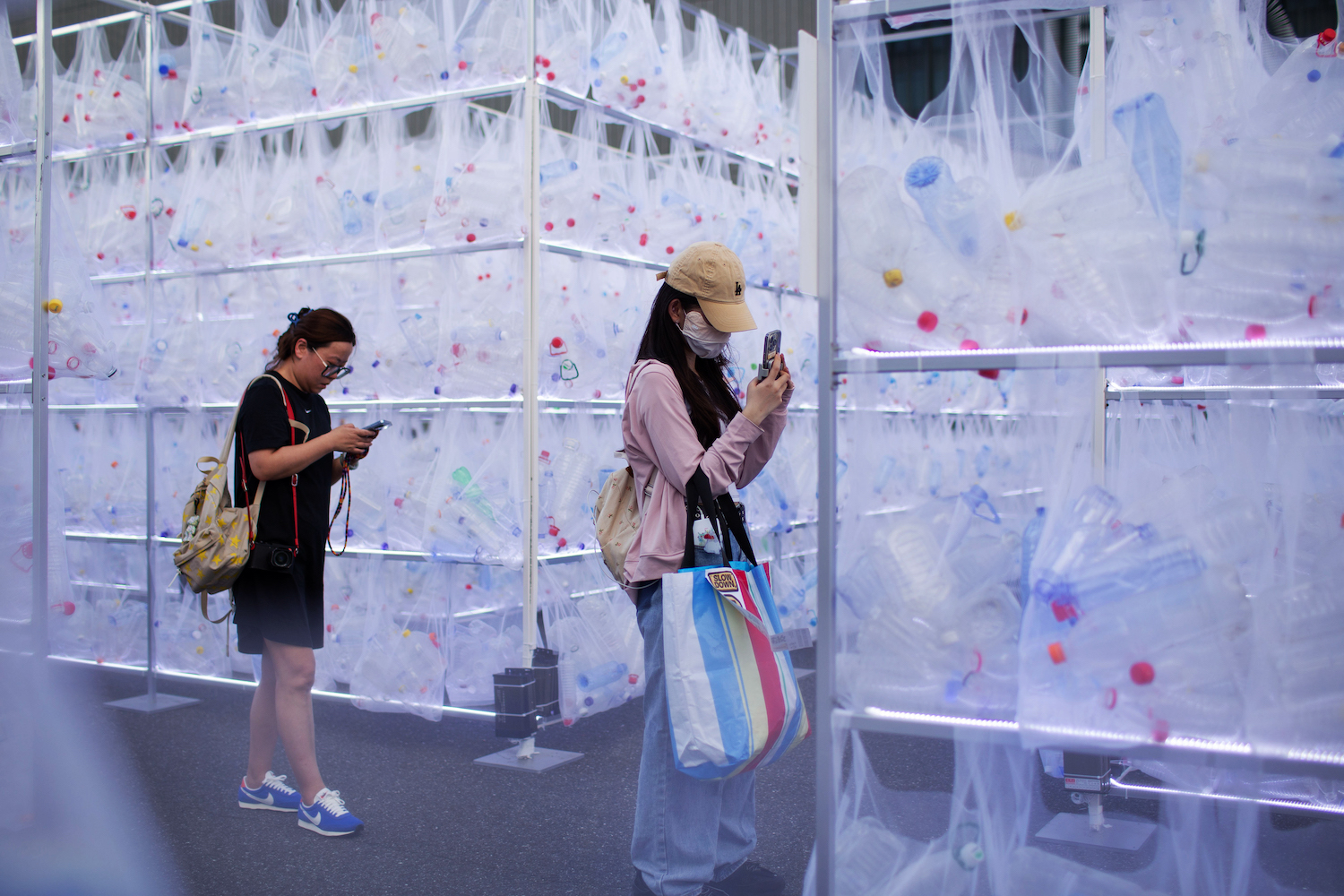
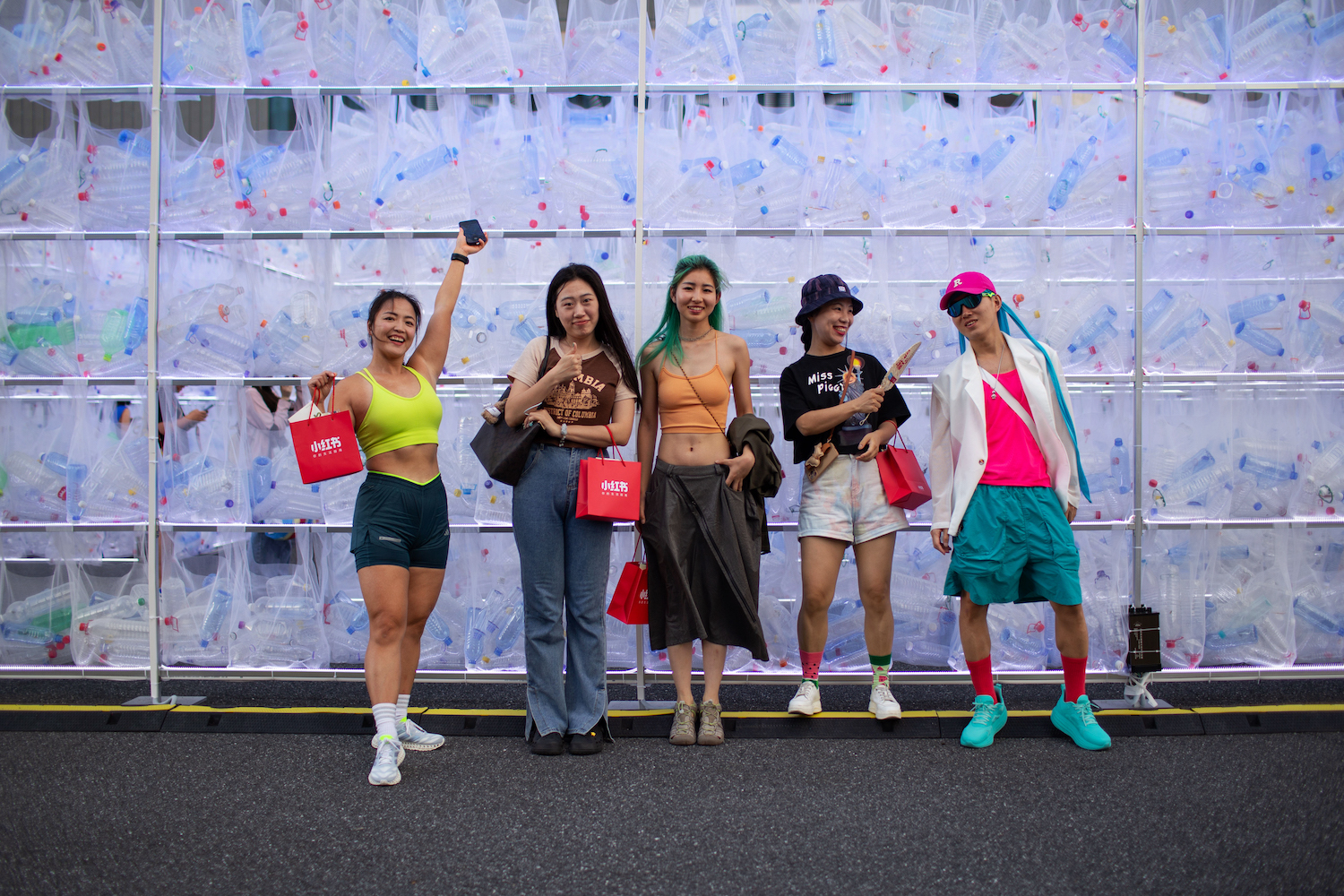
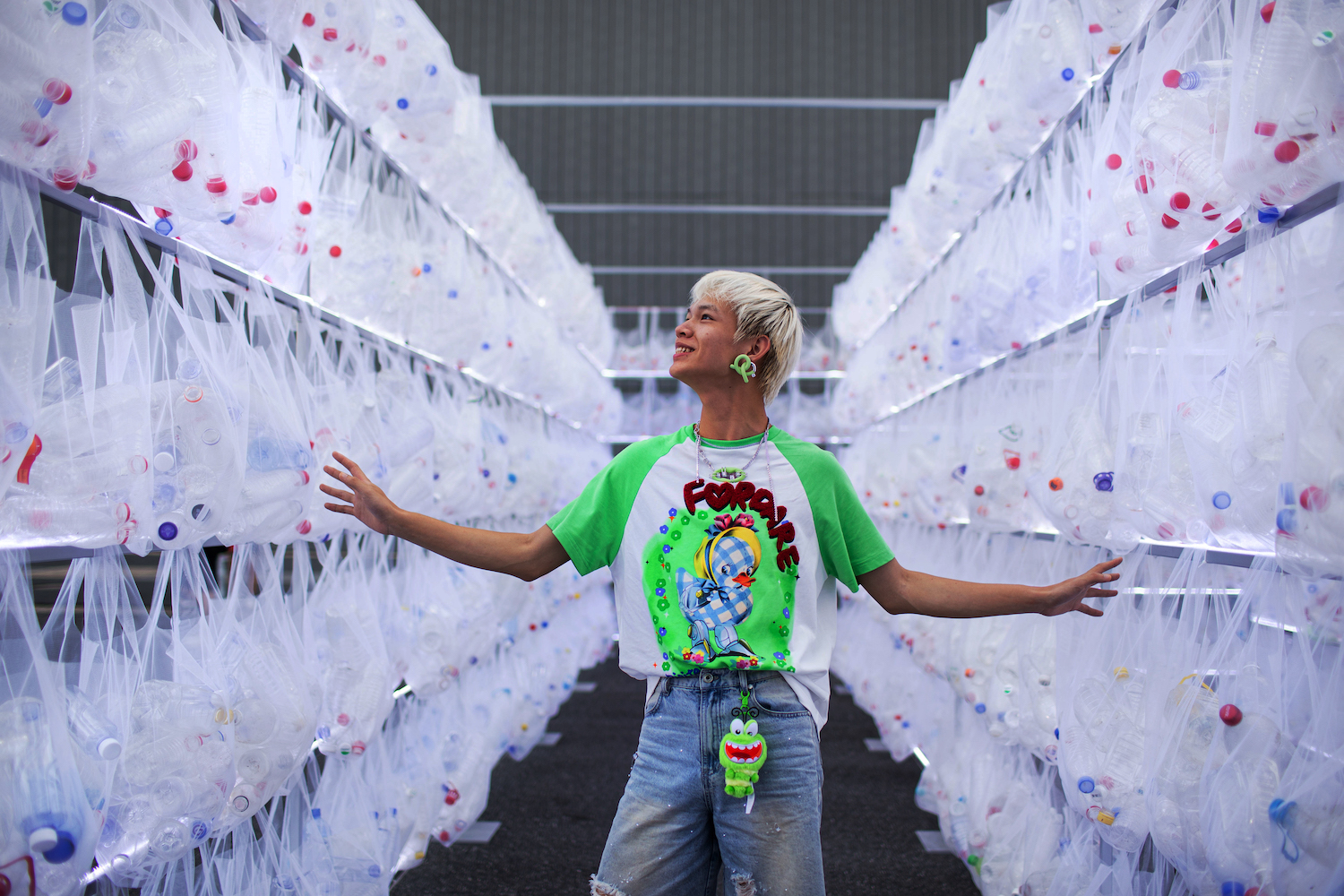
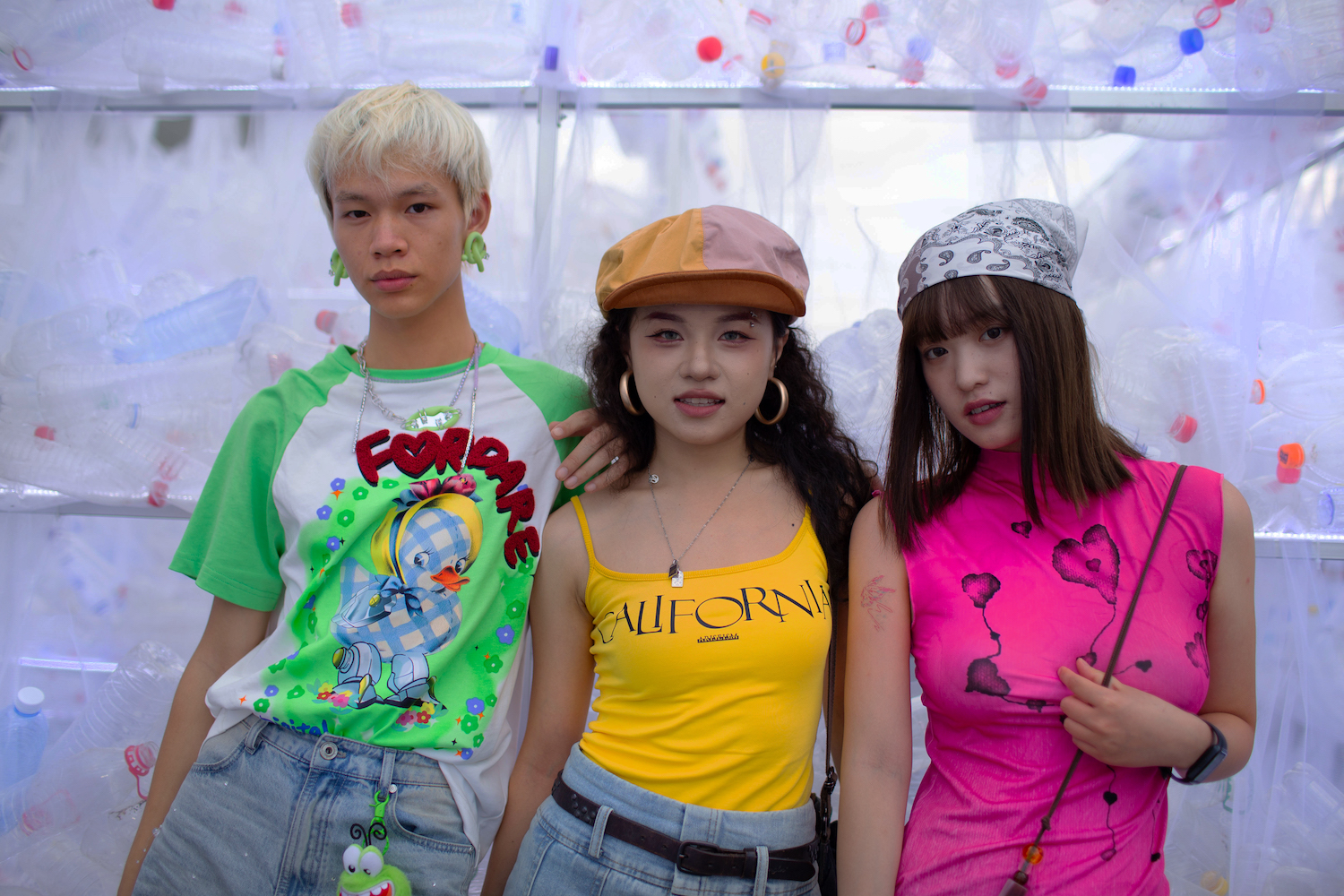
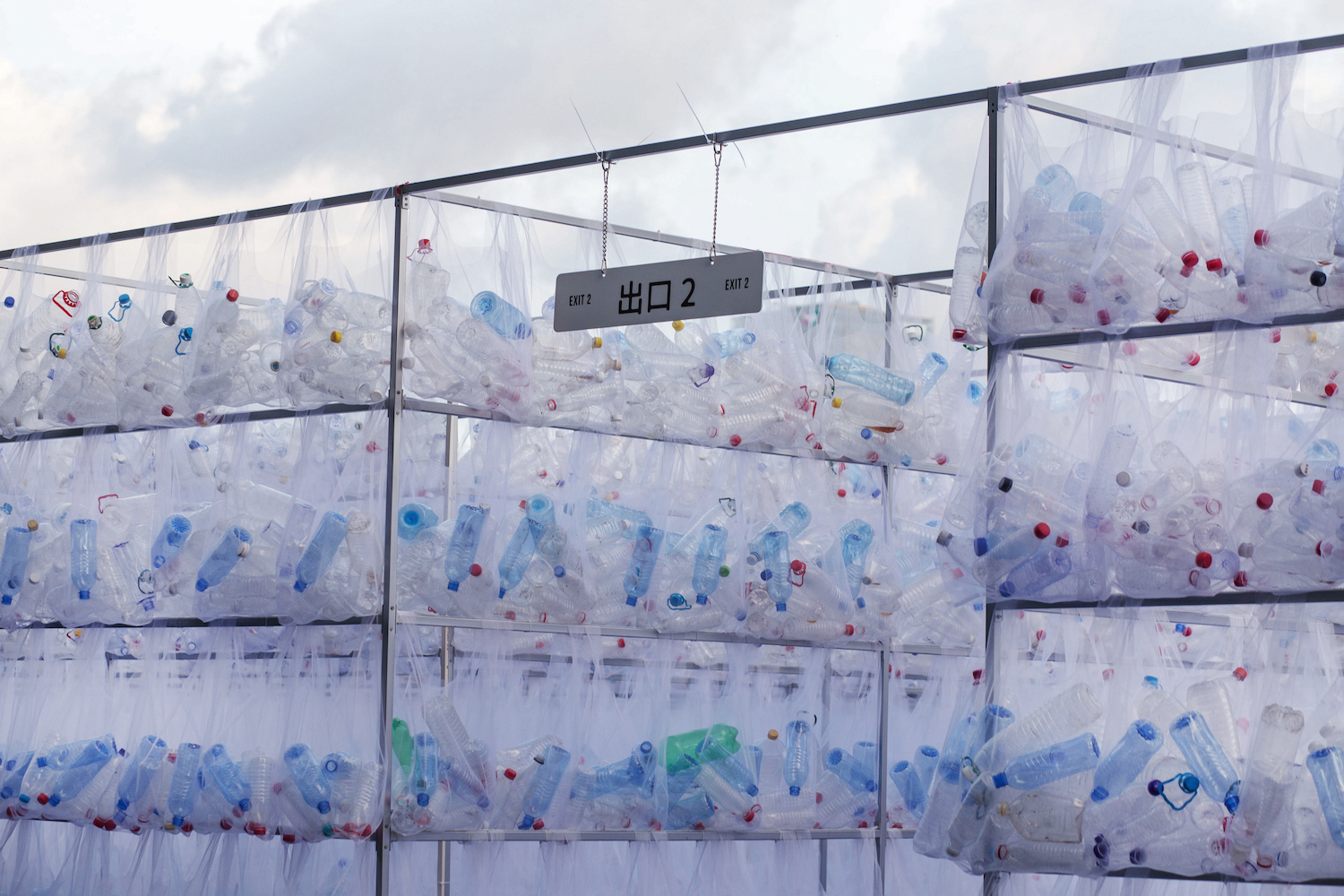
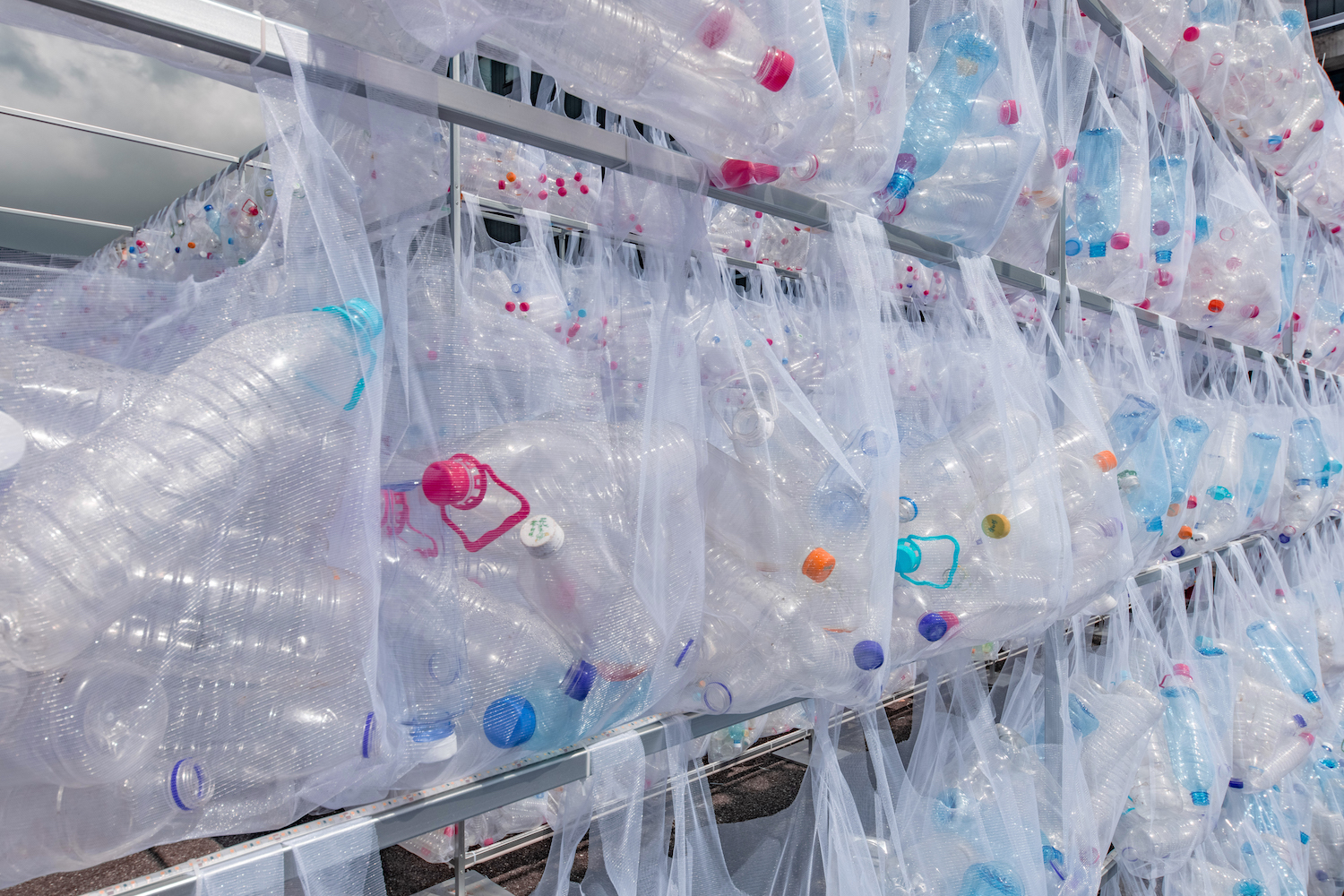
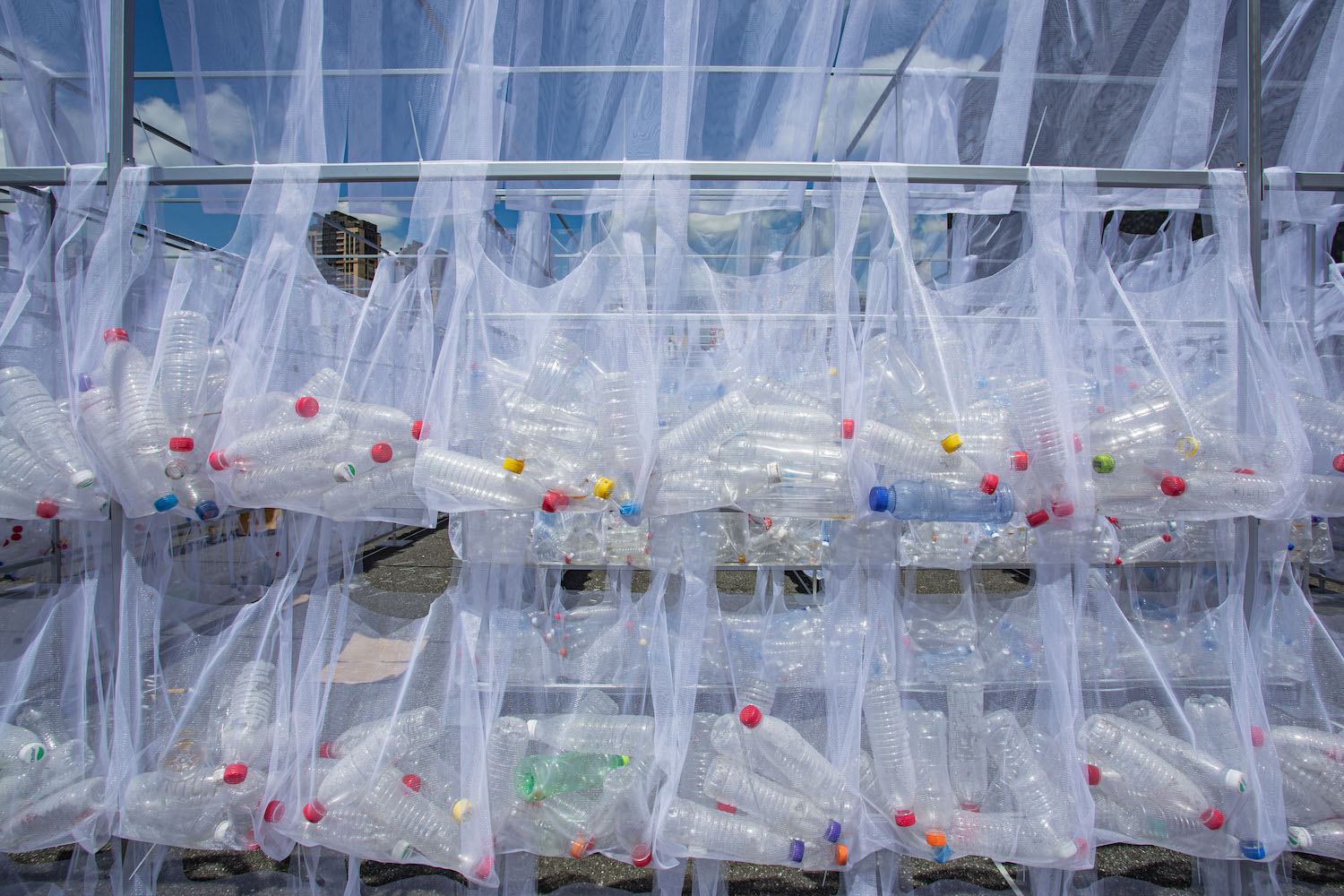
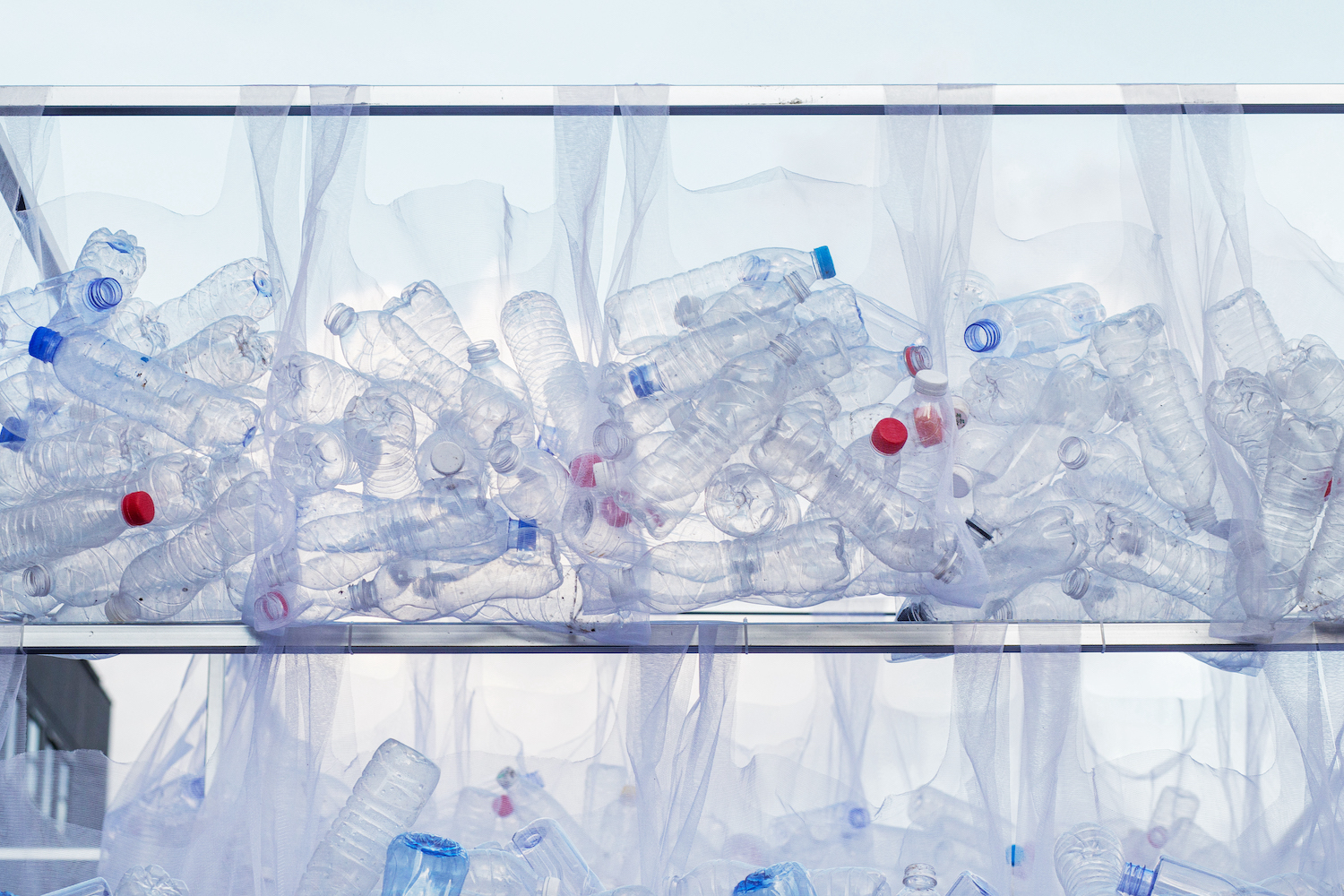
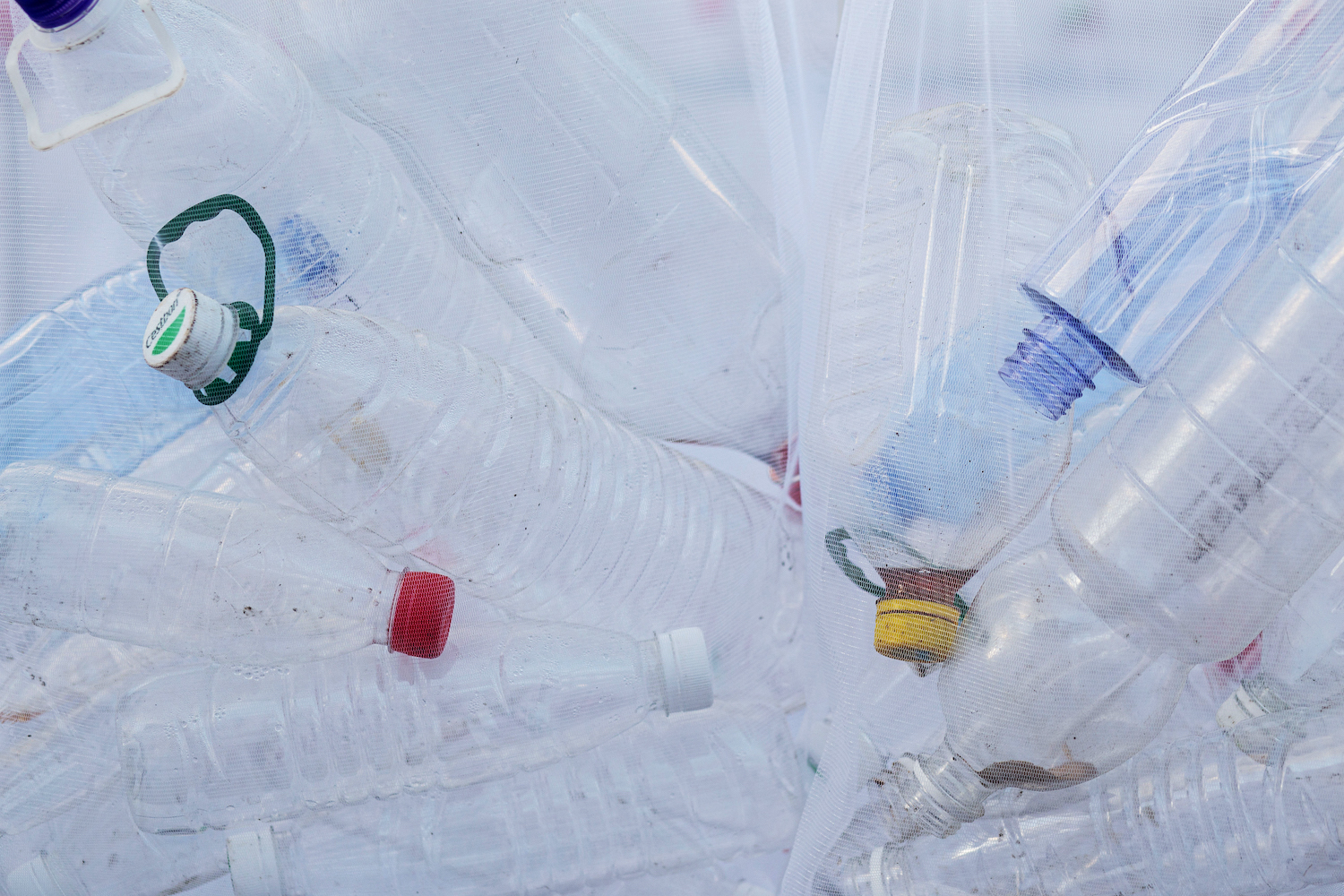
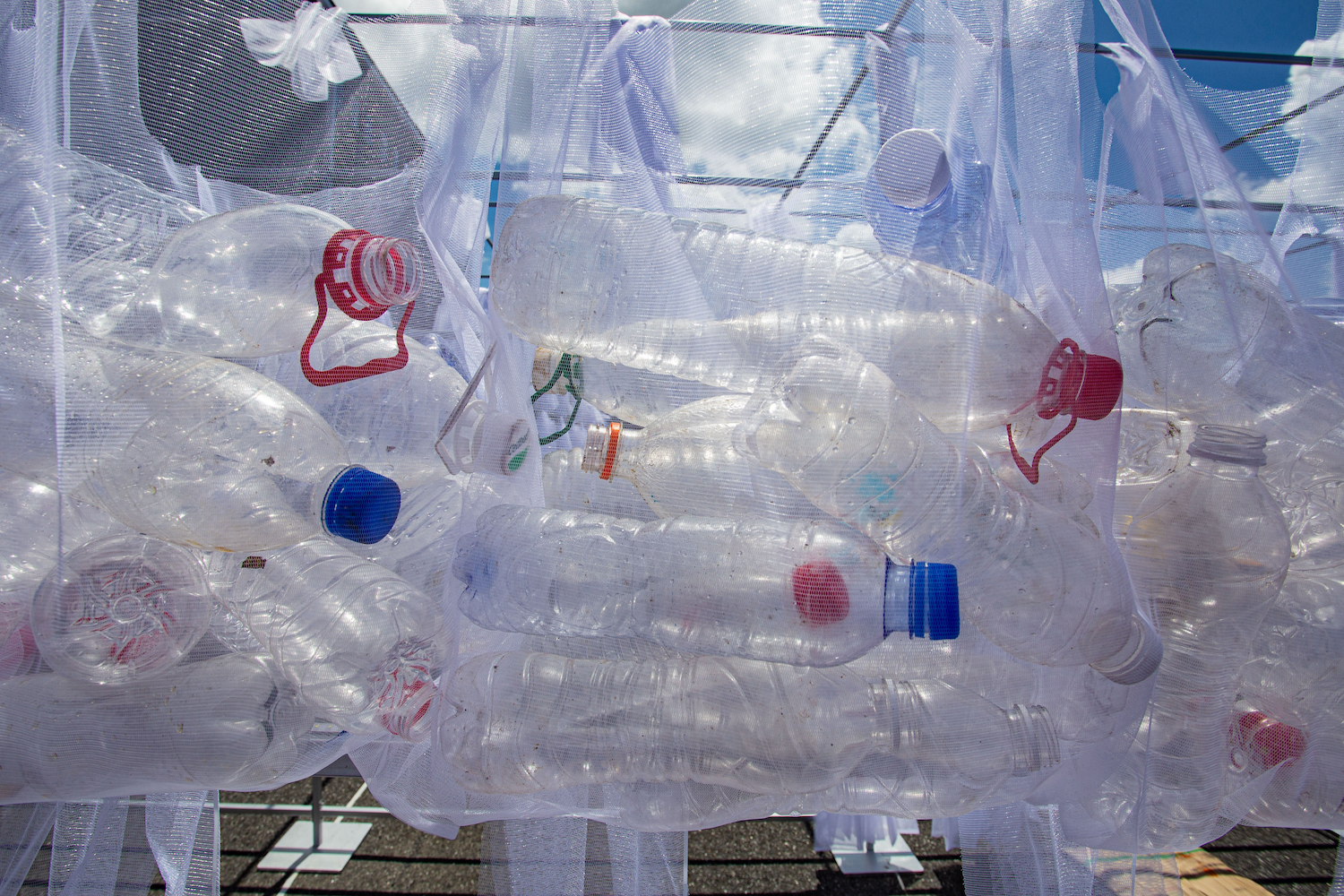
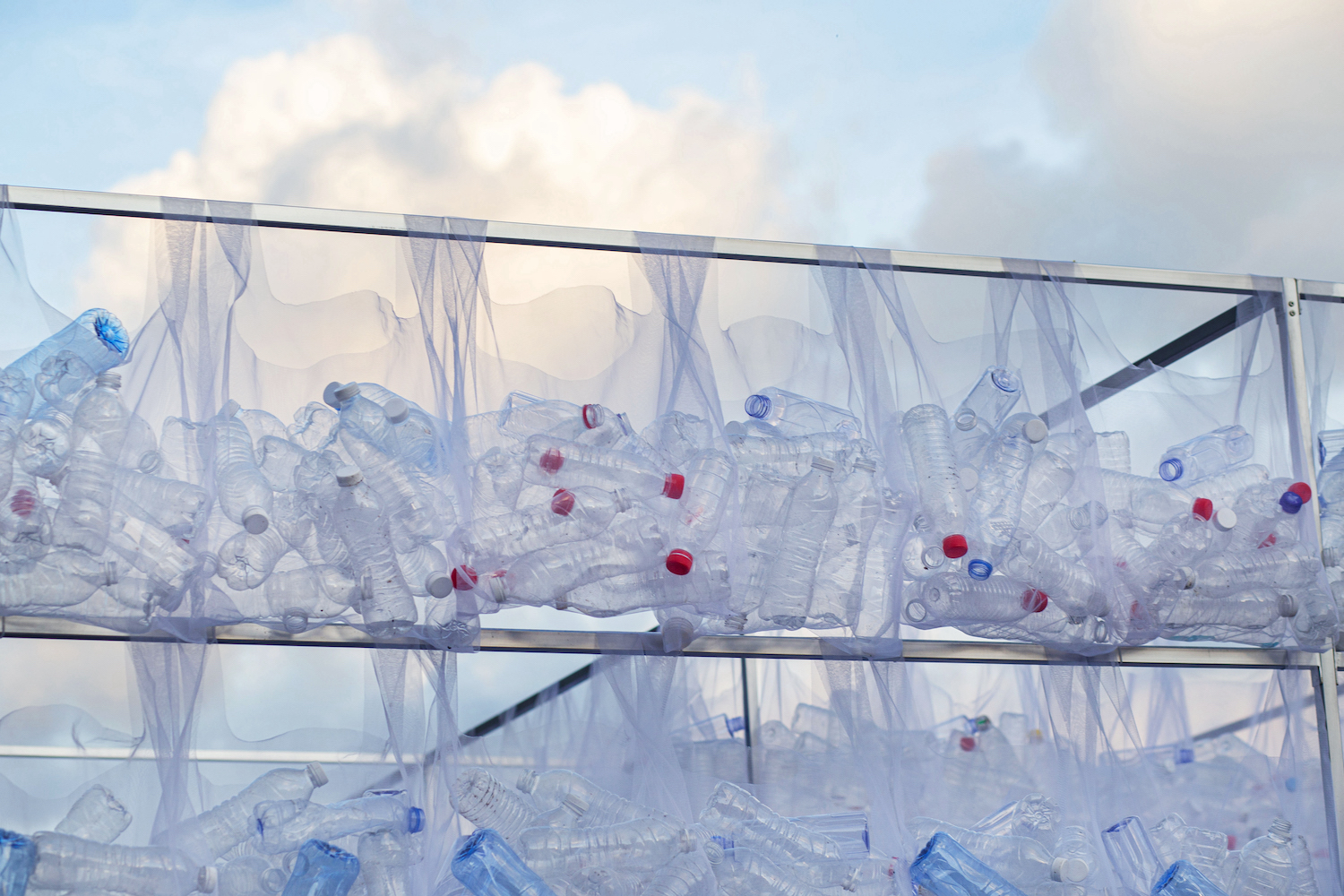
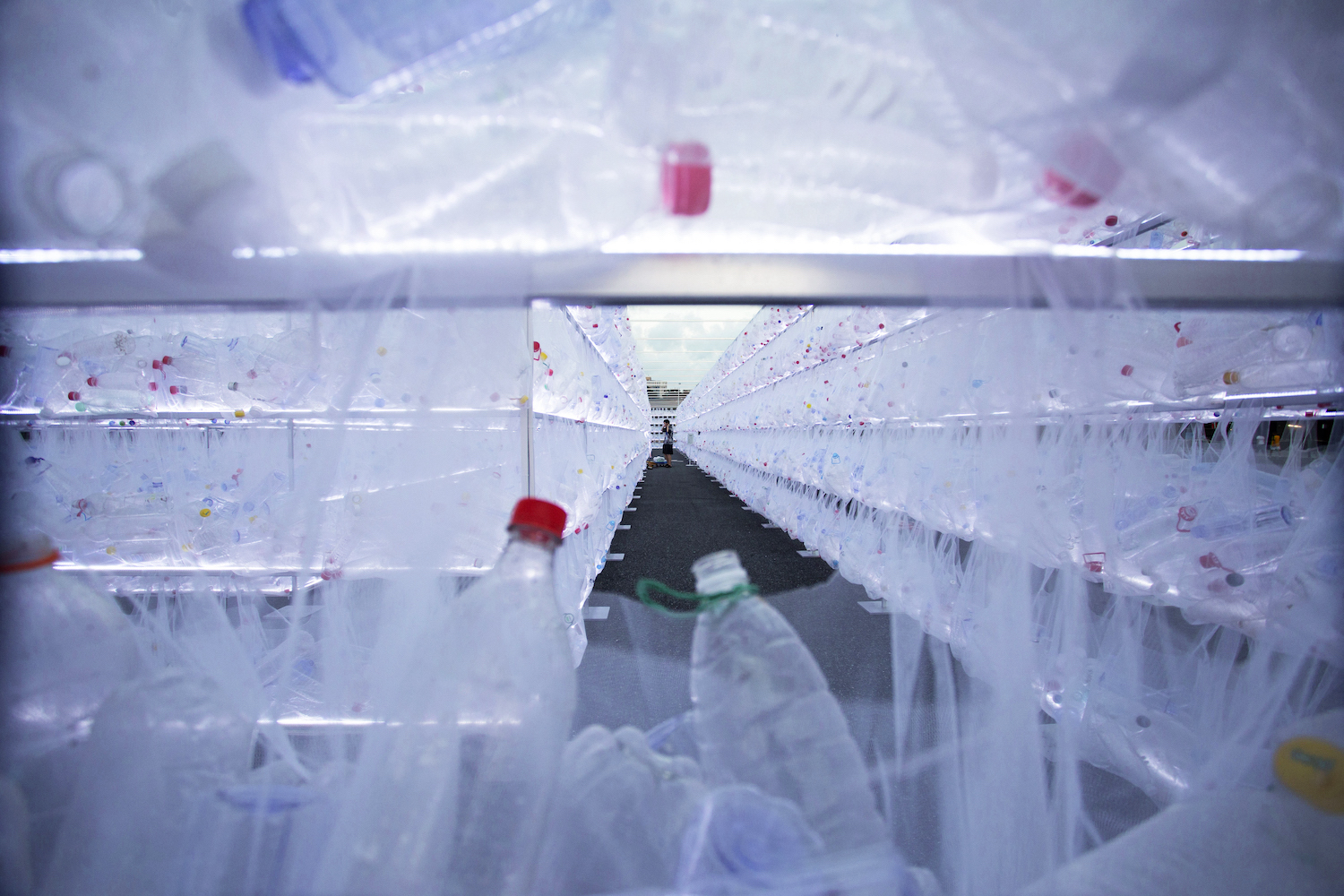
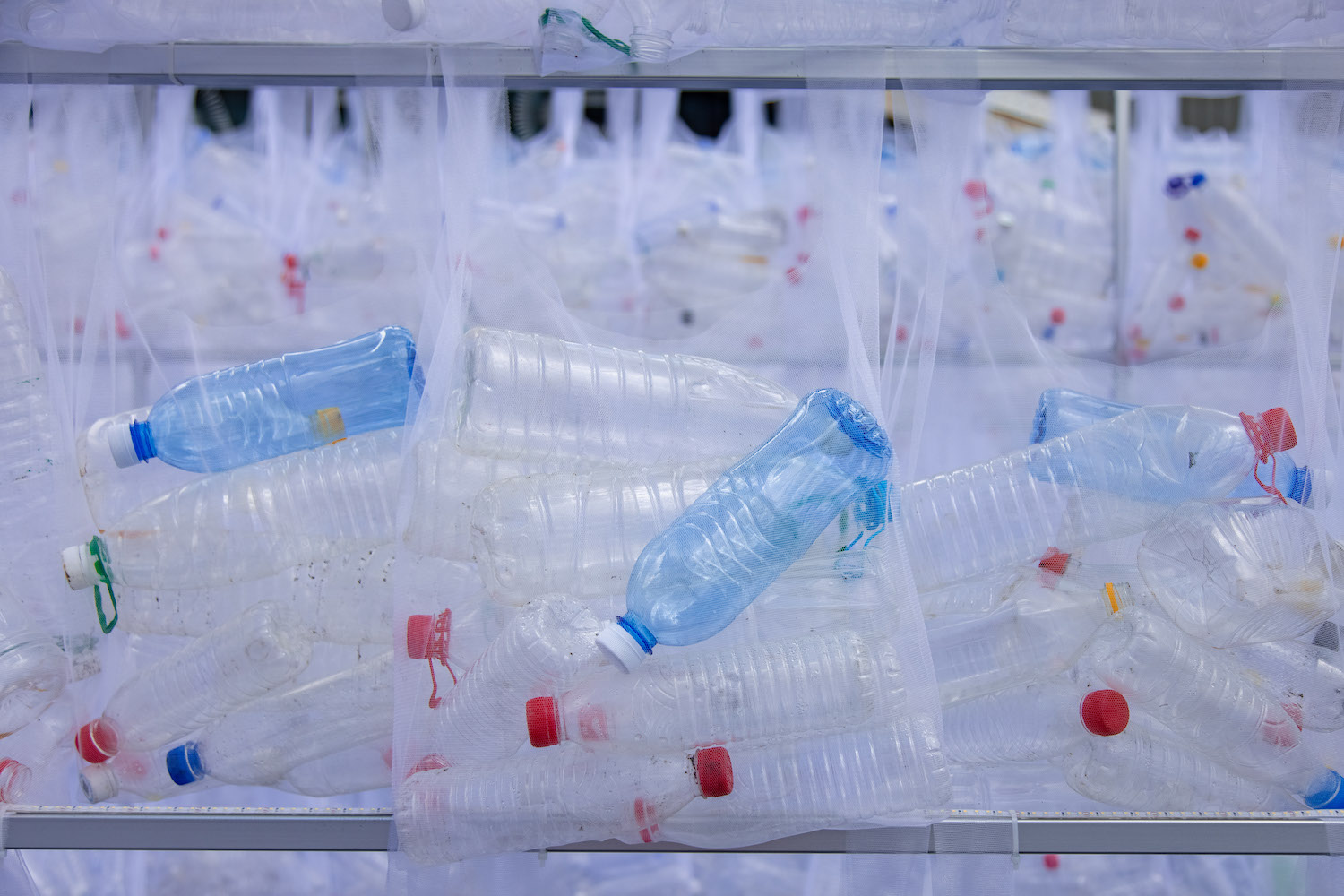
Last August, we were invited to Shanghai Roadside Festival to present one of our most iconic works Labyrinth of Plastic Waste which we have already installed in several cities around the world.
The idea of this work is still the same as on previous occasions: to bring attention, in a visual sensory manner, to our unsustainable consumption of plastic.
In order to do this, we built this huge labyrinth, the biggest one yet built, where visitors lose themselves in an intricate structure full of recycled plastic bottles which have been collected from the city. Our intention is to have this experience generate a thought, a conversation among the visitors which will hopefully bring them to reduce their plastic consumption and eventually make them aware of how they may dispose of it responsibly.
The first time we made this piece was in Poland back in 2014. We were trying to raise awareness of the need of recycling. However, 10 years later, it is clear that we must stop using it altogether. This looks like an impossible mission as governments lack interest and seem reluctant to pass laws to regulate this more potently. Unfortunately, priorities are still centered on the interests of companies, of businesspeople, of lobbies and of many voters whose main interest is to perpetuate their personal gain, disregarding the common good. As there is no restrictive law to penalize the rampant usage of disposable plastic material, any personal campaign may prove insufficient.
As regards our labyrinth, it was 40 meters long, 20 meters wide and 3 meters high (about 131 feet long, 65 feet wide, 10 feet high). Its length in a straight line was 400 meters (about 1,312 feet) and it took about 5 minutes to walk through it. However, we provided those who didn’t want to spend so much time inside with shortcuts, as the experience in there was quite oppressive.
The recycled bottles were collected by inviting people on social media to do so and by placing trash containers in public places for people to dump their waste there. In addition, volunteer groups and environmental organizations picked up trash at the beaches. Local packaging businesses also provided us with all the waste they could not use due to noncompliance with legal packaging requirements. We used a total of 90,000 units.
The structure was created with welded cross sections which were re-utilized once disassembled. At local workshops, we made the bags that contained the bottles with transparent tulle to avoid using more plastic.
The labyrinth was open to visitors from August 3 to August 13. It was located right in front of the Power Station of Art building. Once disassembled, the bottles were donated to companies that recycle plastic waste in order to manufacture new products. The remaining material will be used in new projects.
Our sincere acknowledgment to the recycling organizations: Ocean Cloud, Super Whale, HowBottle, One Planet Foundation, Circular Pi, Remakehub, Re:Generation, Bamboo Comet, for their help in obtaining the necessary amount of bottles to build the labyrinth.
Many thanks to Yuqi, Liya, Kris and Addrain from the PinKou Culture team who believed in us and our complex street art project and have handled the production wonderfully. Our thanks to Red, our sponsoring company. Special thanks to their curator, who stayed with us during the entire process, and to the museum for hosting us.
Last but not least, our appreciation to the photographers Yuzhe Xue and Melisa Hernández for capturing the magnitude and essence of our piece.
Time of installation: and installation: 5 days.
Damages: none.
Exhibition time: 10 day.
—————————
El pasado agosto fuimos invitados por el Roadside Festival de Shanghai para llevar a cabo una de nuestras piezas mas icónicas, «Laberinto de residuos plásticos» que ya hemos instalado en varias ciudades del mundo.
El sentido de este trabajos sigue siendo el mismo que en anteriores ocasiones, alertar de manera visual y sensorial sobre el insostenible consumo que hacemos de plásticos.
Para conseguirlo, hemos construido este gigantesco laberinto, el más grande hasta ahora, en el que los visitantes se ven obligados a perderse en una intrincada estructura abarrotada de botellas de plásticos recicladas y recolectadas del uso de la ciudad. La intención es que esta experiencia física, genere un pensamiento, una conversación entre los visitantes y ojalá, el propósito de reducir sus consumos de plástico, o como poco, poner cuidado a la hora de deshacerse de él de manera responsable.
La primera vez que hicimos esta pieza, Polonia en 2014, estábamos intentando concienciar sobre la necesidad de reciclar, pero casi 10 años después, ha quedado claro que lo primordial es dejar de consumirlo, algo que parece misión imposible por la falta de interés de los gobiernos, que se resisten a implantar políticas gubernamentales contundentes que legislen en este sentido. Desgraciadamente priman los intereses de la industria, de los empresarios, de los lobbies de poder y de muchos votantes interesados en perpetuar sus intereses personales, sin pensar en el bien común. Sin una legislación restrictiva que penalice el uso descontrolado de materiales plásticos de un solo uso, lo que hagamos a título personal parece insuficiente.
Centrándonos en nuestro laberinto, deciros que media 40×20 metros y 3 de altura, linealmente el recorrido completo era de unos 400 metros y se tardaba en recorrer aproximadamente 5 minutos, aunque pusimos algunos atajos para los que no querían pasar tanto tiempo dentro, que la experiencia era bastante agobiante.
Las botellas recicladas fueron recolectadas mediante convocatoria publica en redes sociales y situando contenedores en locales públicos en los que se invitaba a la gente a depositar sus residuos. Además grupos de voluntarios y asociaciones ecologistas limpiaron y sacaron material de las playas y por último, empresas de envasado locales nos proporcionaron todas las que iban a desechar por no cumplir los requisitos de envasado legales. En total usamos unas 90.000 unidades.
La estructura se creo con perfiles soldados que una vez desmontada la pieza se reutilizaron y las bolsas que contenían las botellas las hicimos en talleres locales con tul transparente, para evitar hacerlas de plástico.
El laberinto estuvo abierto al público desde el 3 al 13 de agosto, frente a la fachada de la Power Station of Art, y una vez desmontado, las botellas se donaron a empresas de reciclaje de residuos plásticos, para fabricar nuevos productos. El resto de material se usara en nuevos proyectos.
Tiempo de montaje: 5 días.
Daños ocasionados: 0.
Permanencia de la intervención: 10 días.
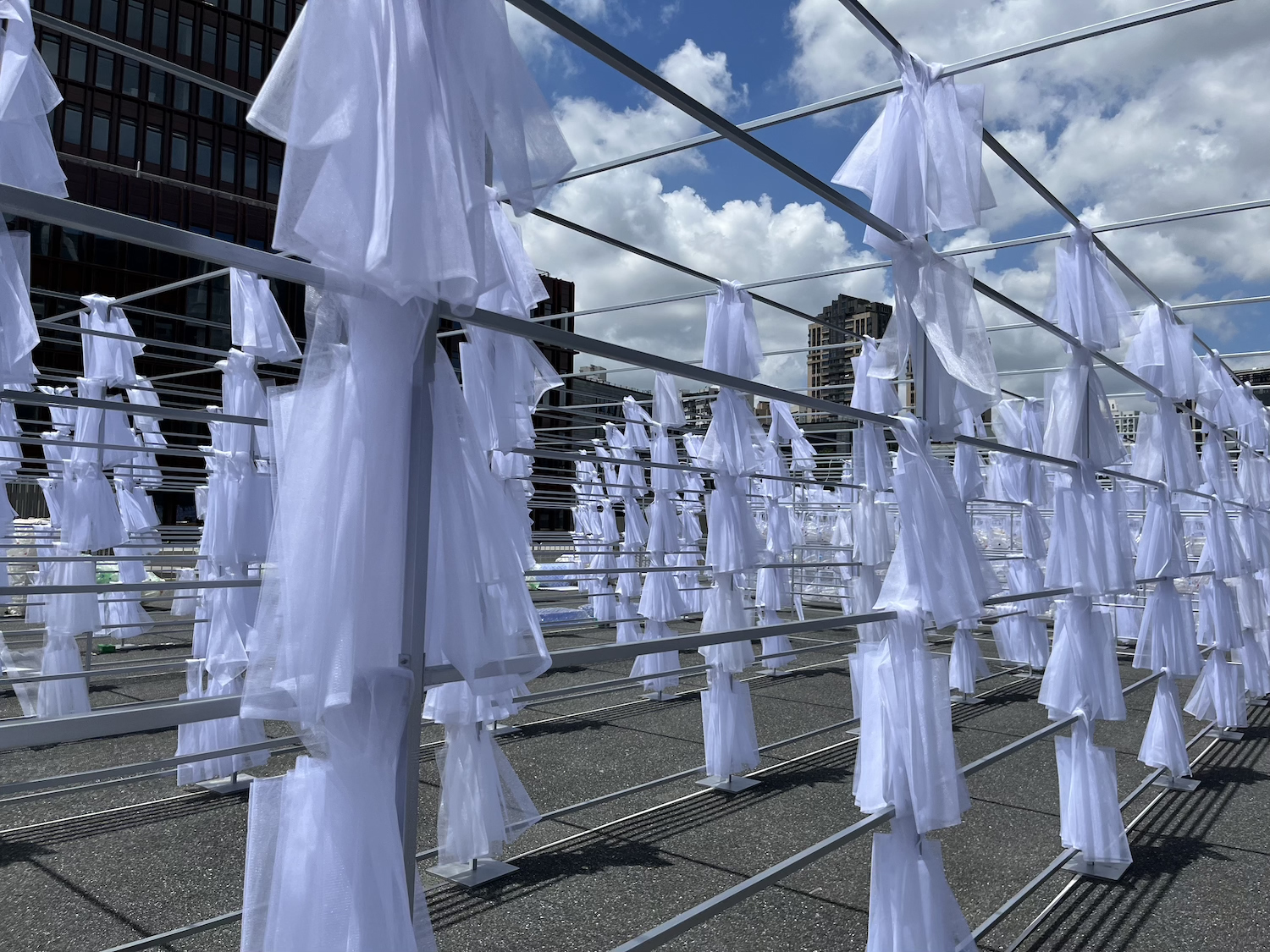
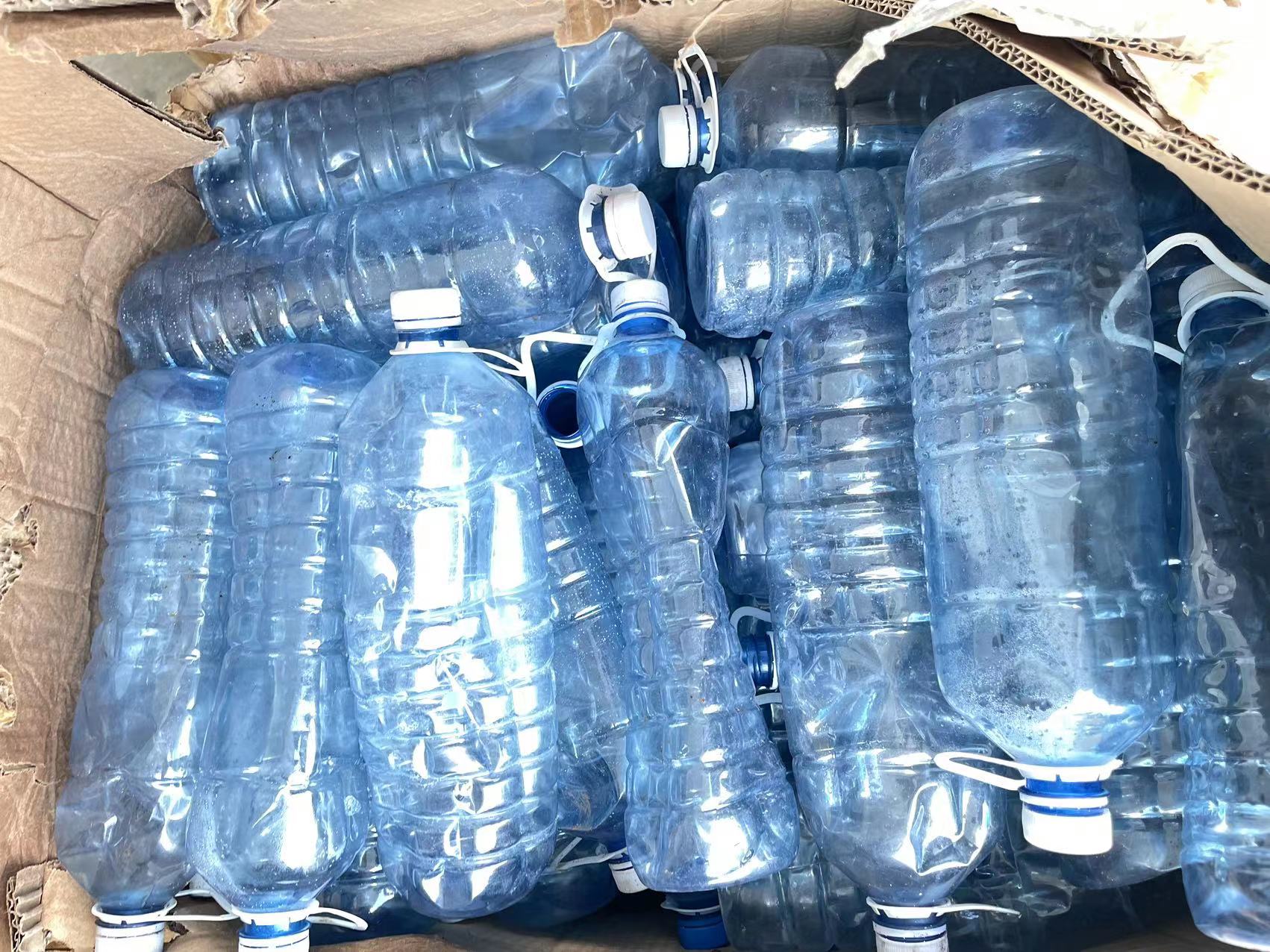
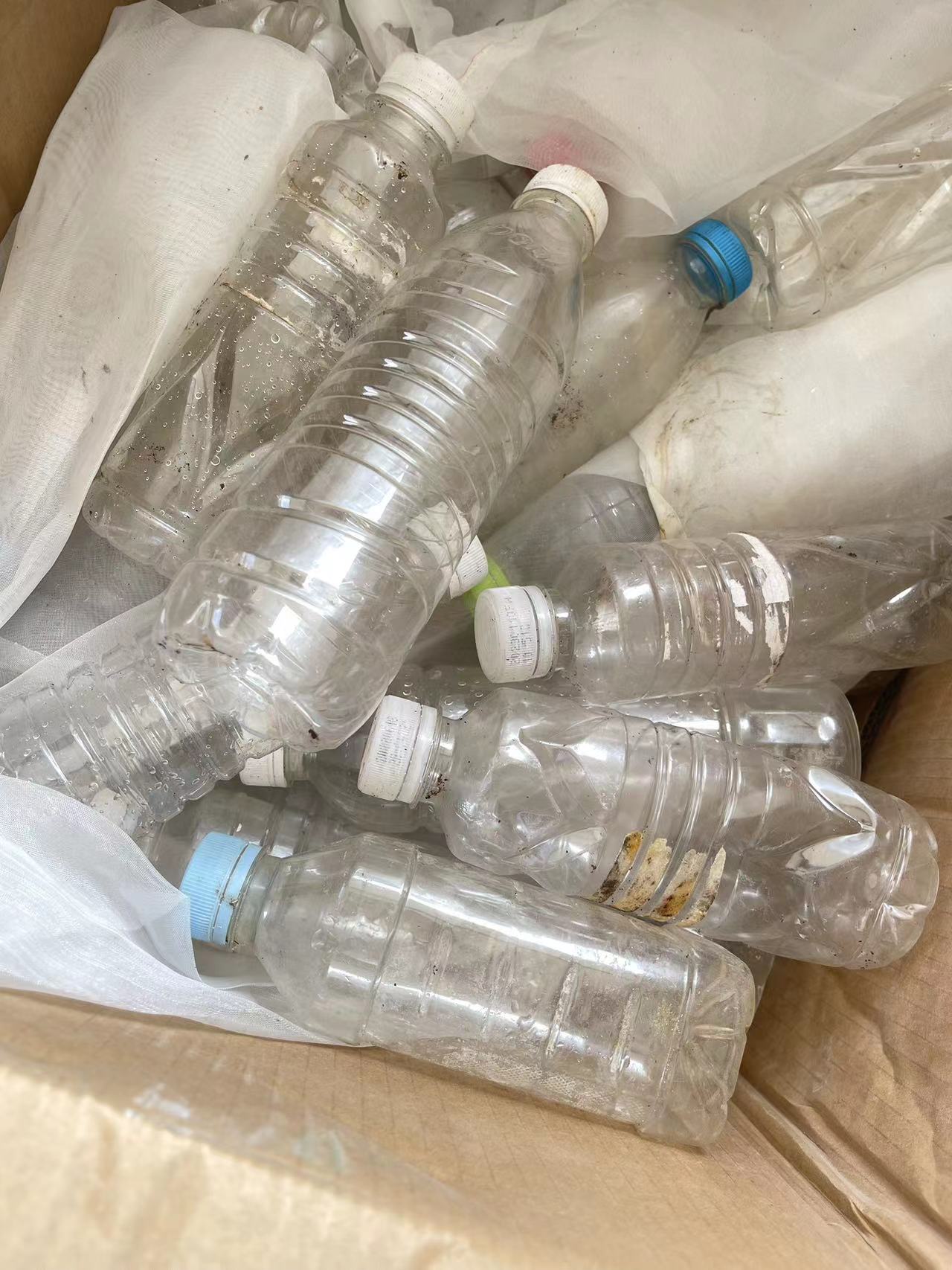
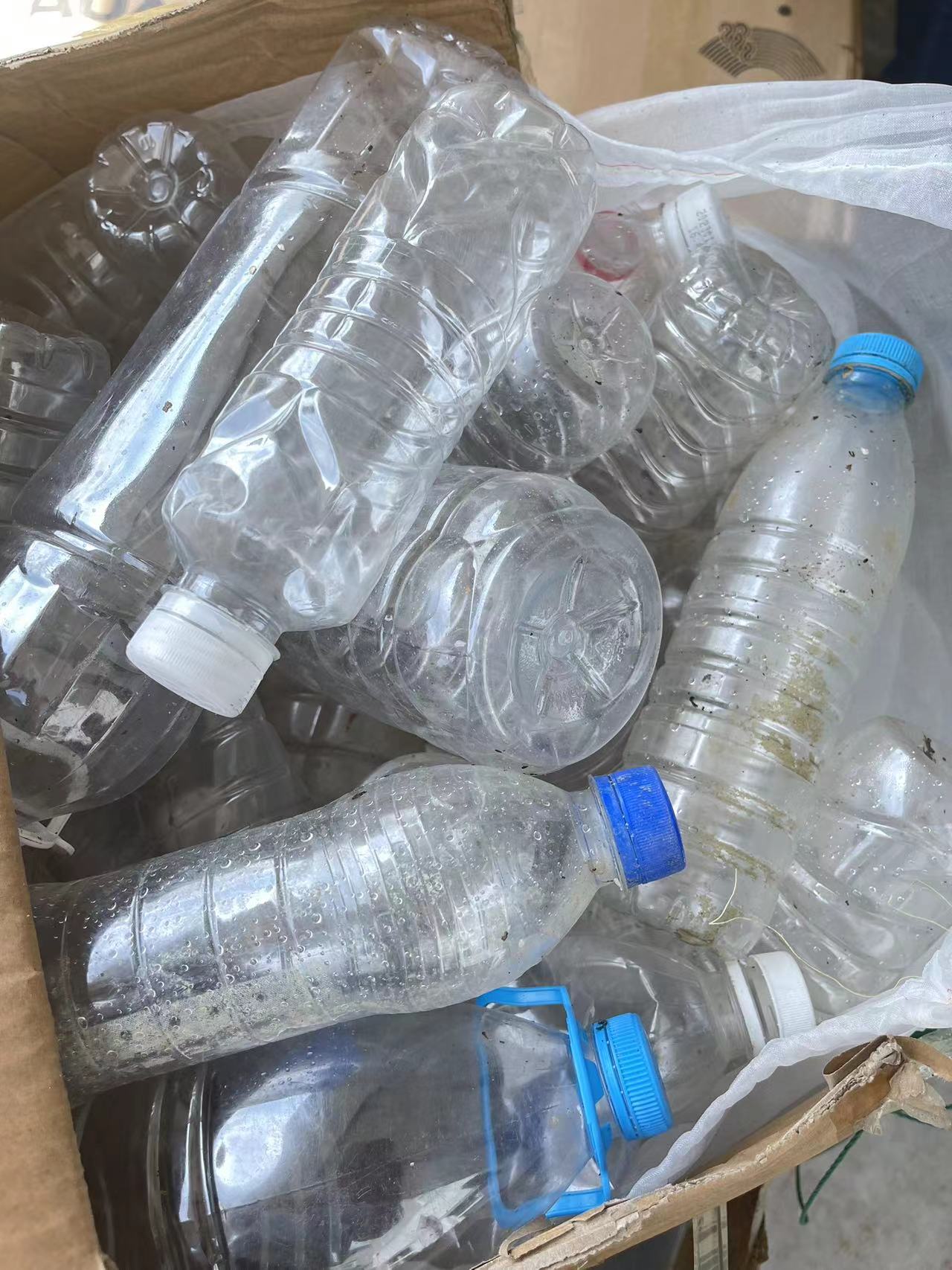
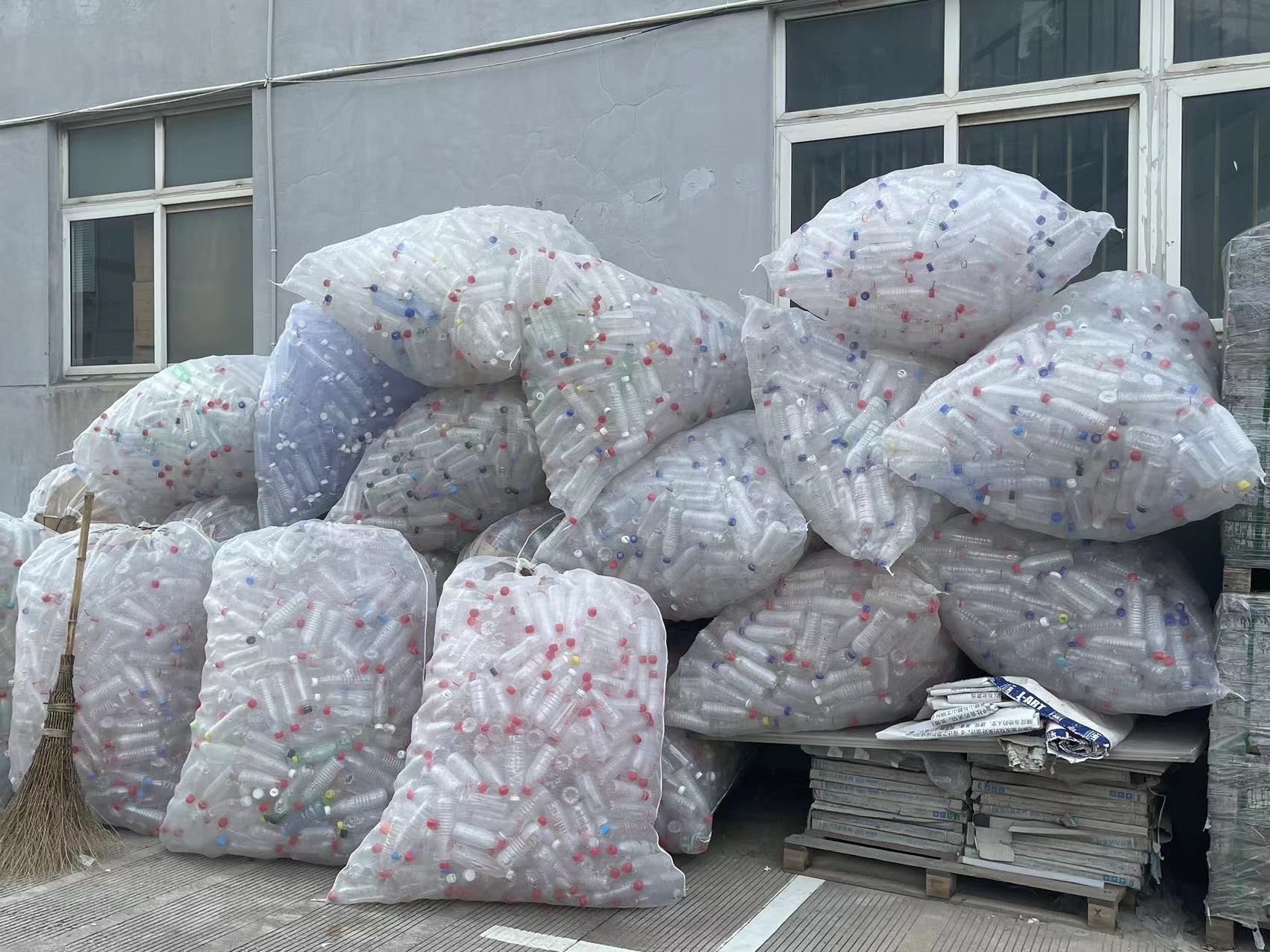
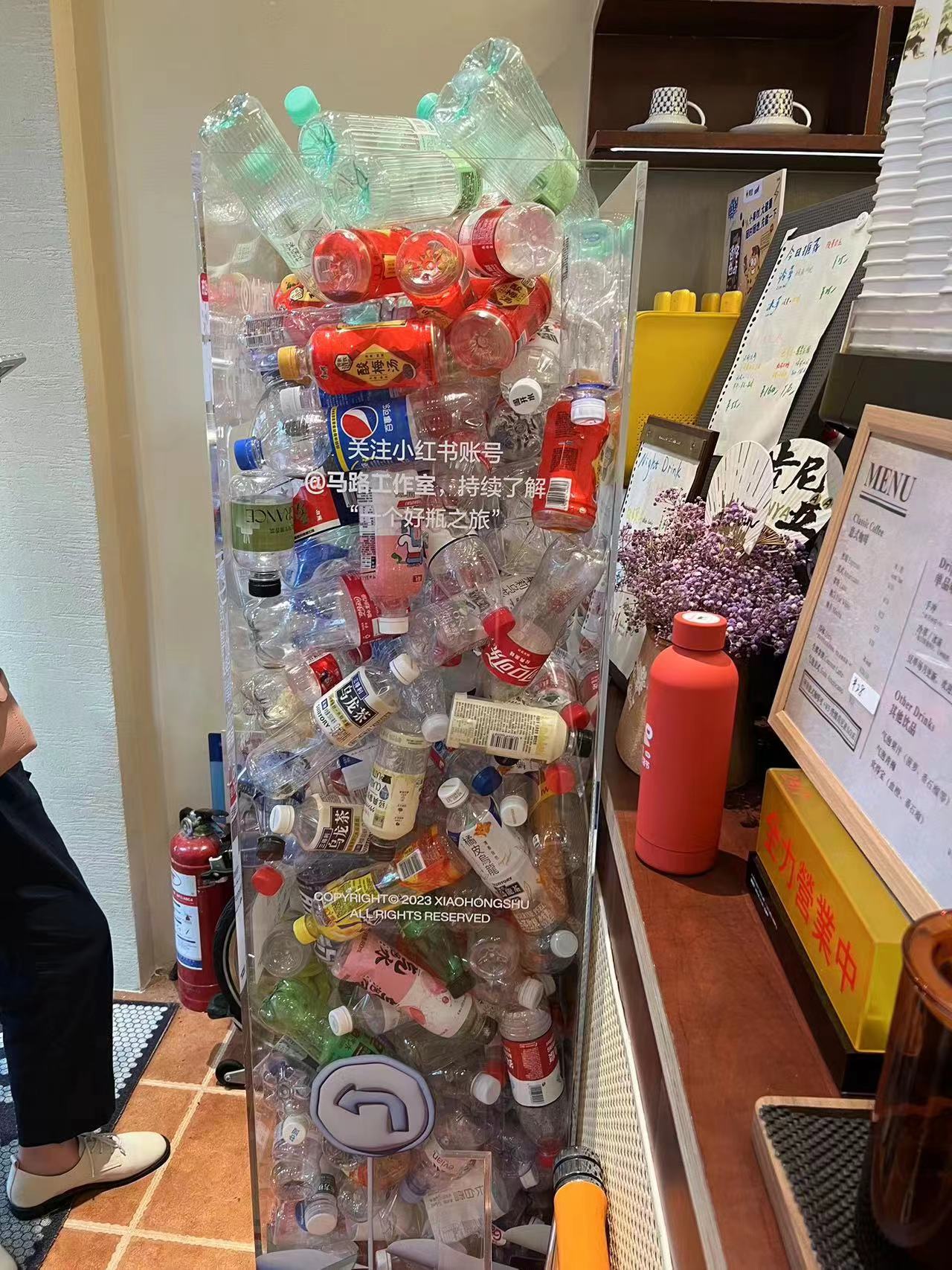
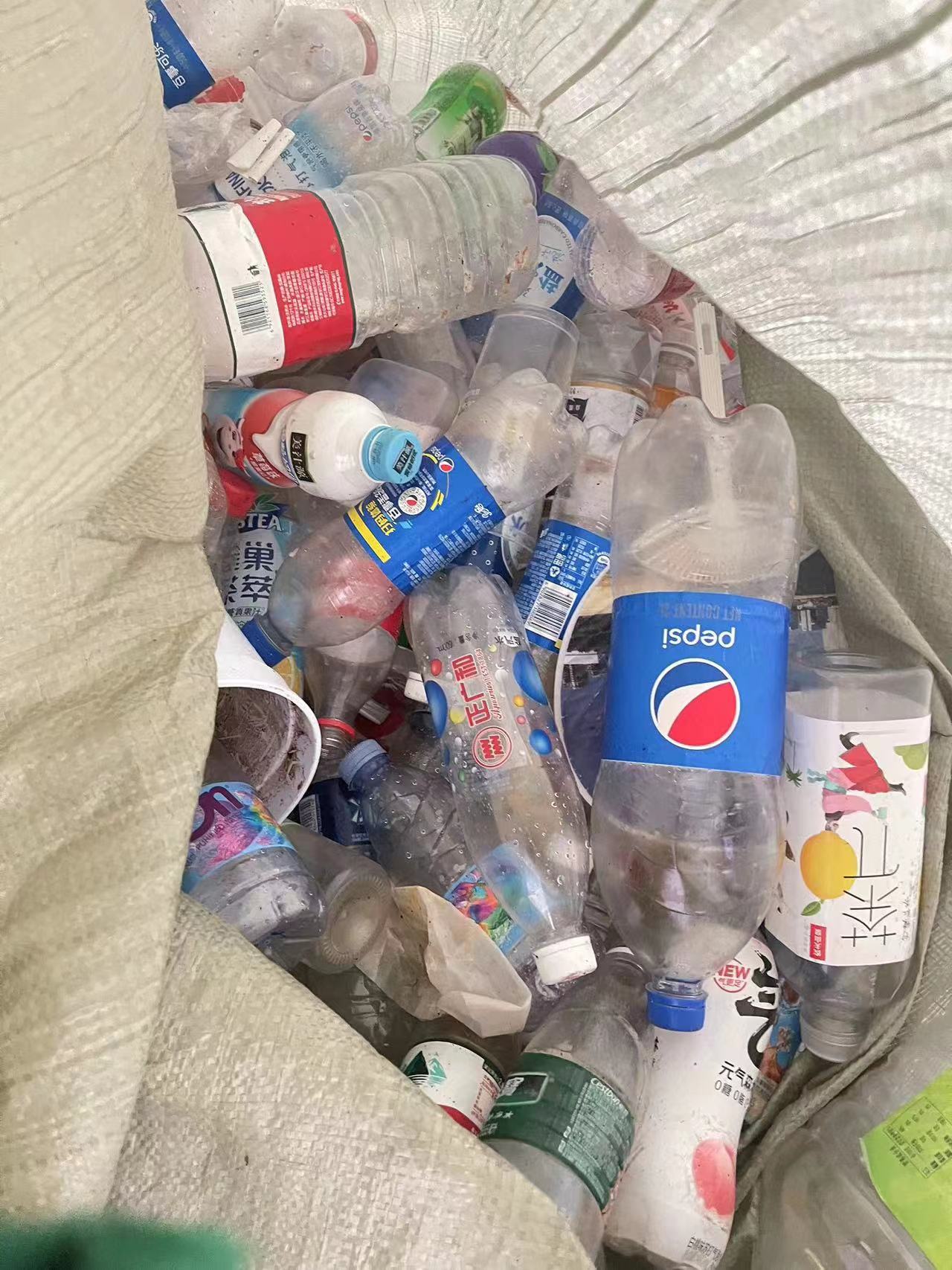
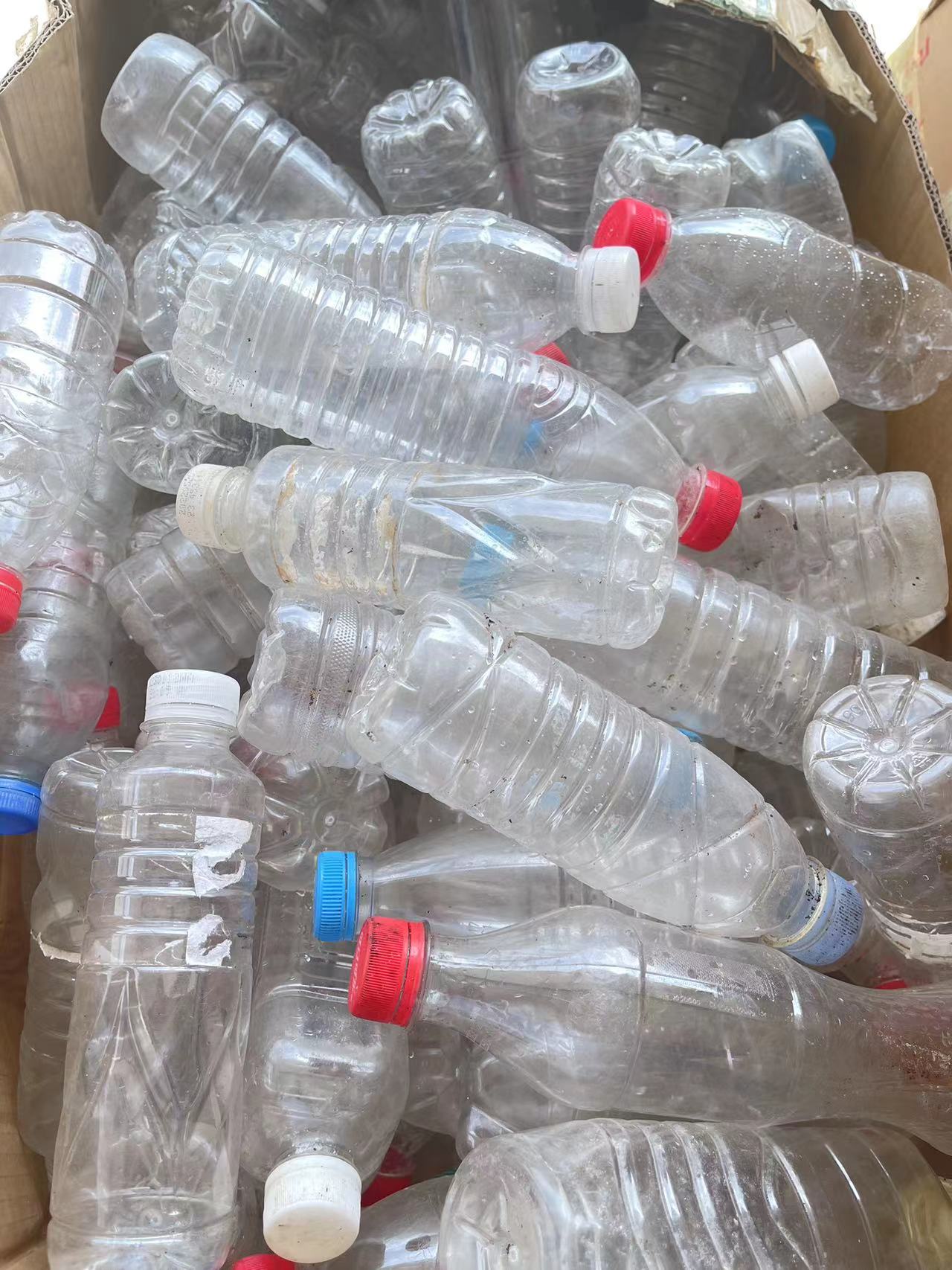
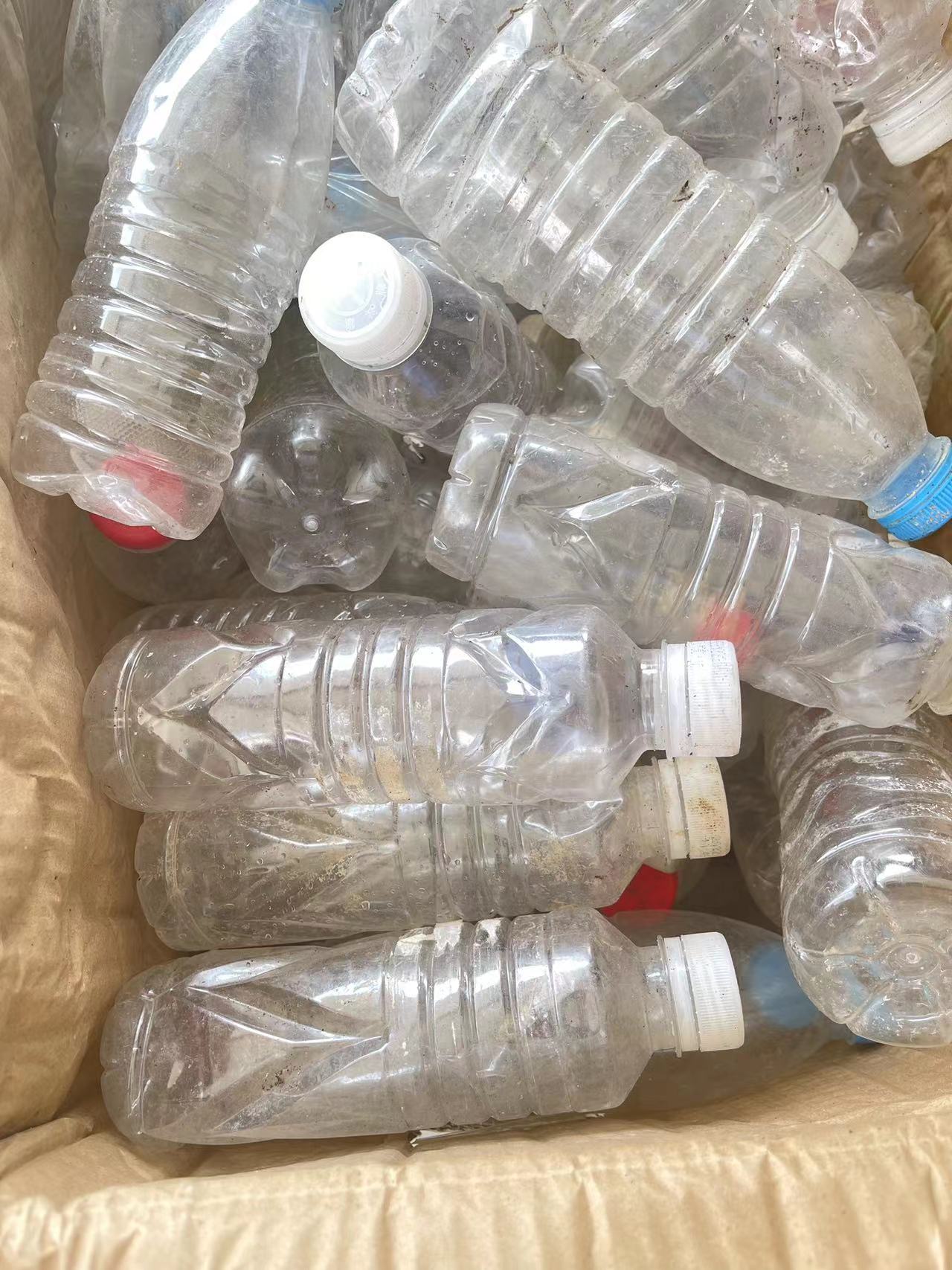
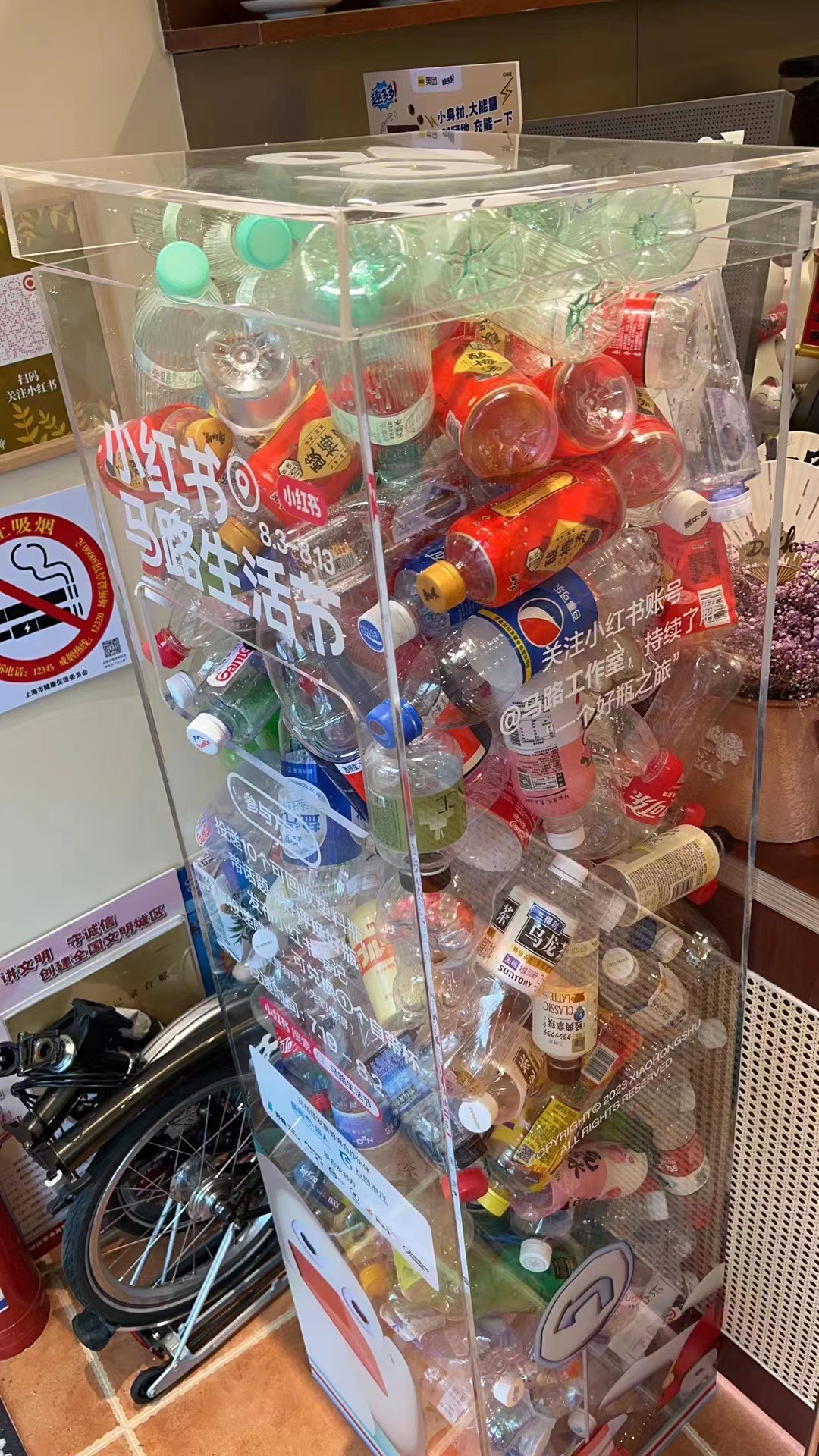
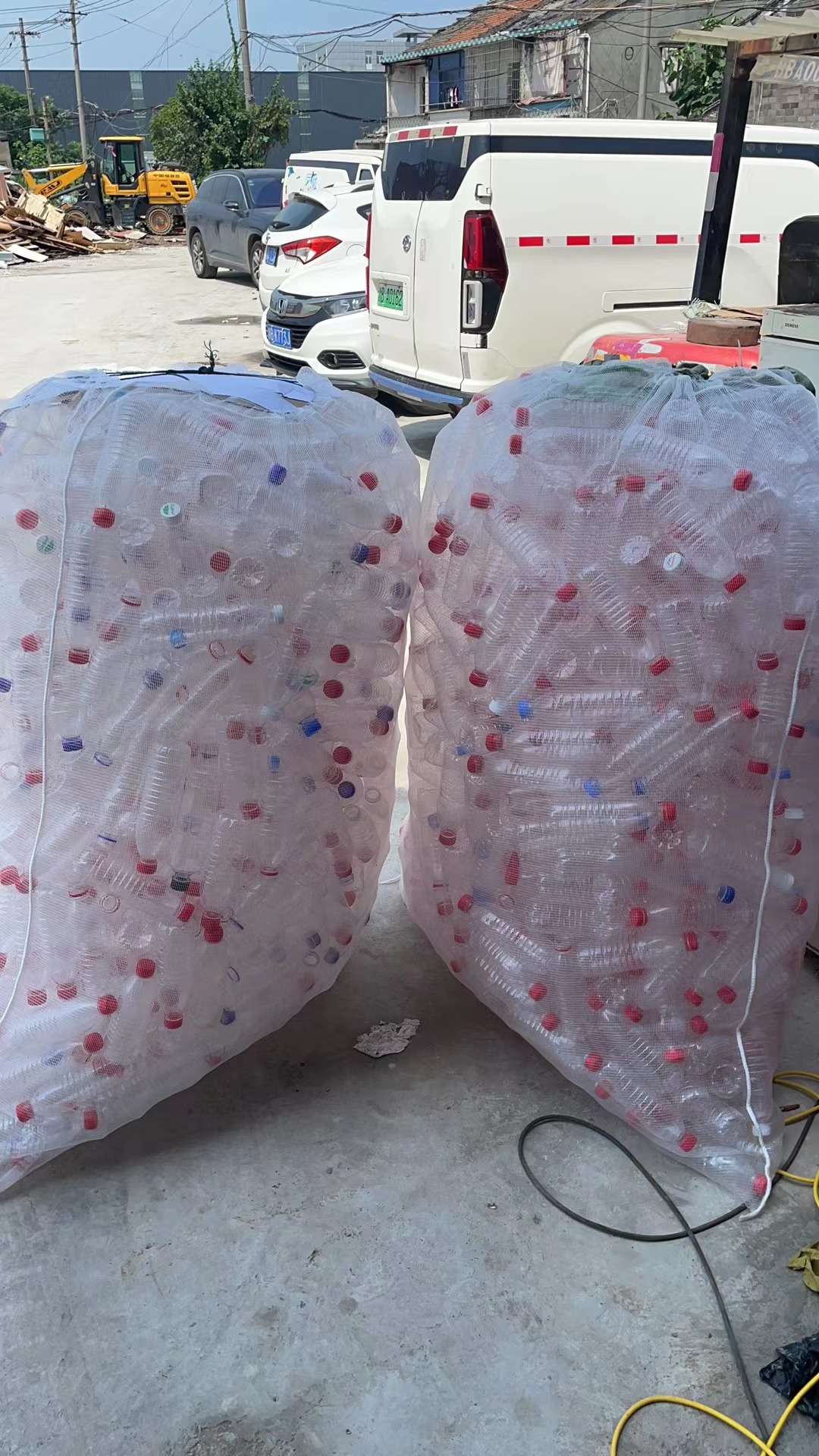
We are still in China presenting our piece On Blank Pages which was already on display at the Beijing Times Art Museum as part of the show Wavelength: A Momentary Spring.
We have arrived now at the Chengdu Times Art Museum for an exhibition that is taking place at the same time as the Biennale which the city is hosting. We will be there from July 15 until October 22.
The composition of the piece is the same as on previous occasions: blank pages and wind. In this case, the new interventions of the visitors will be added to those carried out in Beijing, as they will be put up again on the walls so that they may be read at the new location.
Many thanks to the PinKou Culture team for doing an excellent job once again. They have also given us these lovely pictures.
————-
Ahora hemos llegado al Times Art Museum de Chengsu en la exhibición paralela a la Bienal que tiene lugar en la ciudad, y estaremos del 15 de julio al 22 de octubre.
This summer is being the hottest one ever since we have temperature records. Scientific evidence is showing that this is just the beginning of a dramatic increase that is directly related to the usage of fossil fuels and the overexploitation of natural resources around the planet.
One of the consequences of global warming is drought, which is devastating the world and is manifesting itself in the form of a food crisis, fires, floods, and severe illnesses such as allergies, breathing disorders and deaths due to high temperatures.
Although our civilized society does not question the universal right to water, scarcity is not affecting all the citizens equally, thus provoking a true ‘water gap’ since the city elites are spoiling water for their own leisure while the most vulnerable groups are the ones suffering the real effects of such scarcity.
Appalled by the images of dry reservoirs, barren fields and vast terrains cracked by the lack of water, we have decided to rescue our piece Drawing the Drought which we carried out back in 2019 in La Jarosa, a reservoir near Madrid. We want to make it bigger in order to add more dramatism to it.
As always in our work, the idea is simple and accessible to everyone. Our intention is to evince the loss of water in natural environments. For this reason, we need a large extension of cracked deserted land, preferably a dry reservoir or riverbed. We will draw large circles with light following the pattern of the cracks on the ground.
The material will evidently be quite basic: just LED strip lights that we will place inside the cracks, a grid connection, and patience for the drawing…
The images were created by Burna Visual Art.
Hopefully, we will have no need to carry this one out…
——————-
Este el verano esta siendo el más caluroso desde que tenemos registros de temperatura, y hay certezas científicas que demuestran que no es más que el principio de una dramática escalada directamente relacionada con el masivo uso de combustibles fósiles y la sobreexplotación de los recursos naturales a la que estamos sometiendo al planeta.
Una de las consecuencias relacionada con el calentamiento global es la sequía que asola el mundo y que está manifestándose en forma de crisis alimentaria, incendios, inundaciones, y graves enfermedades como alergias, problemas respiratorios incluso muertes por altas temperaturas.
Y aunque nadie cuestiona del derecho universal al agua en nuestras sociedades civilizadas, la escasez no afecta igual a todos los habitantes del territorio, provocando una verdadera ‘brecha del agua’ ya que mientras las élites urbanas consumen agua en exceso para su ocio, los colectivos más vulnerables son los que verdaderamente sufren las condiciones de escasez.
Ojalá no sea posible llevarla a cabo…
.